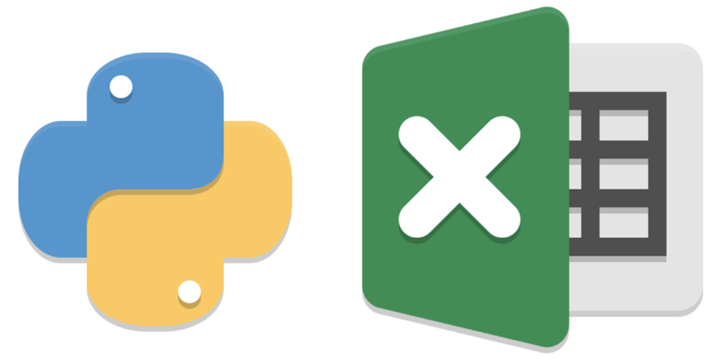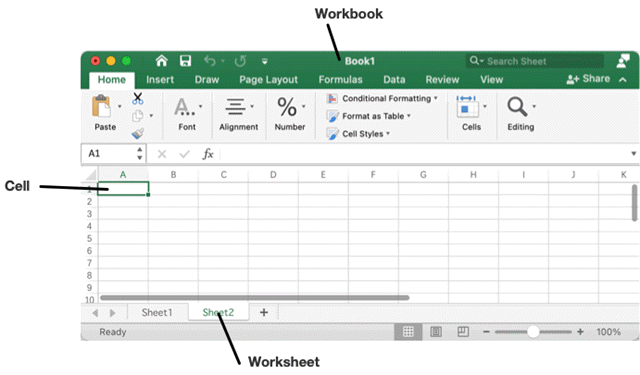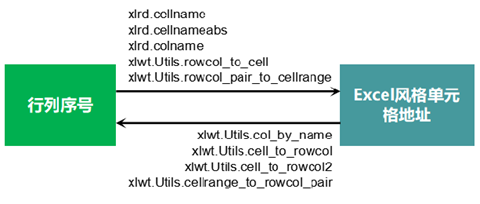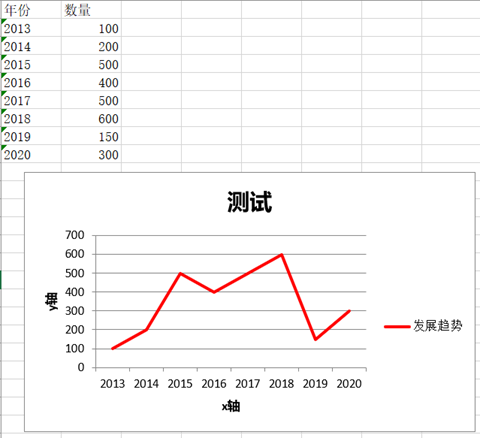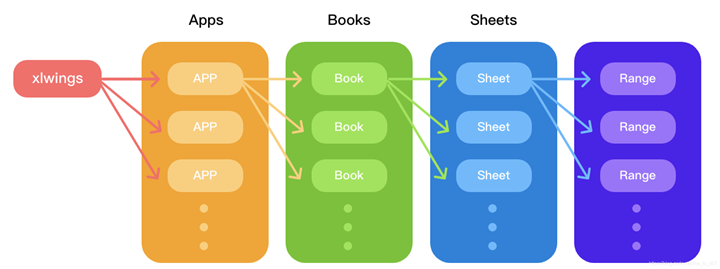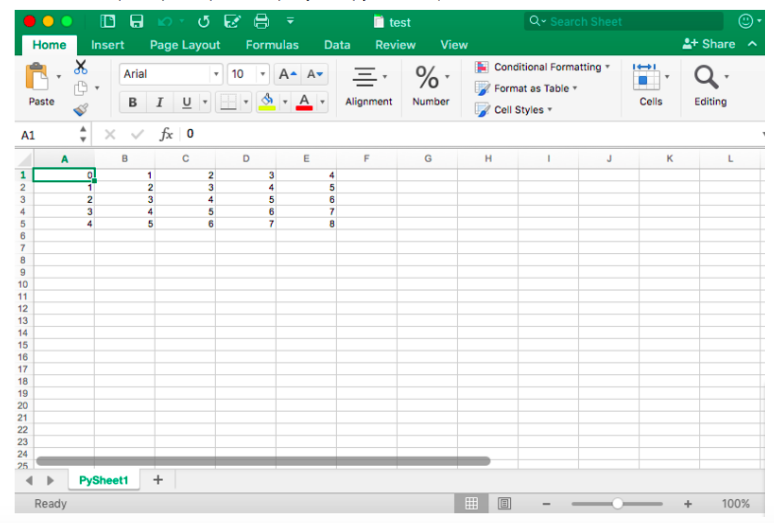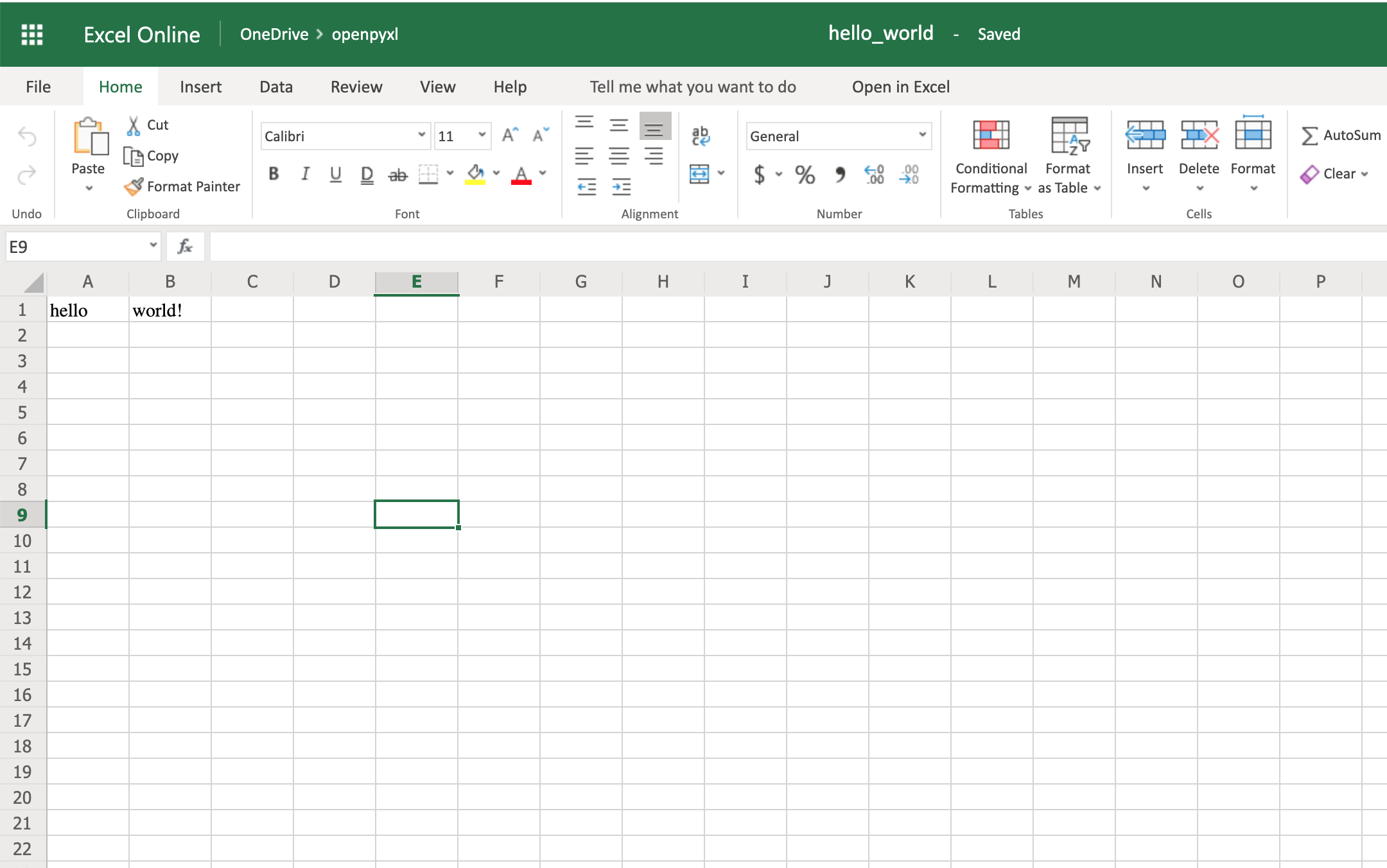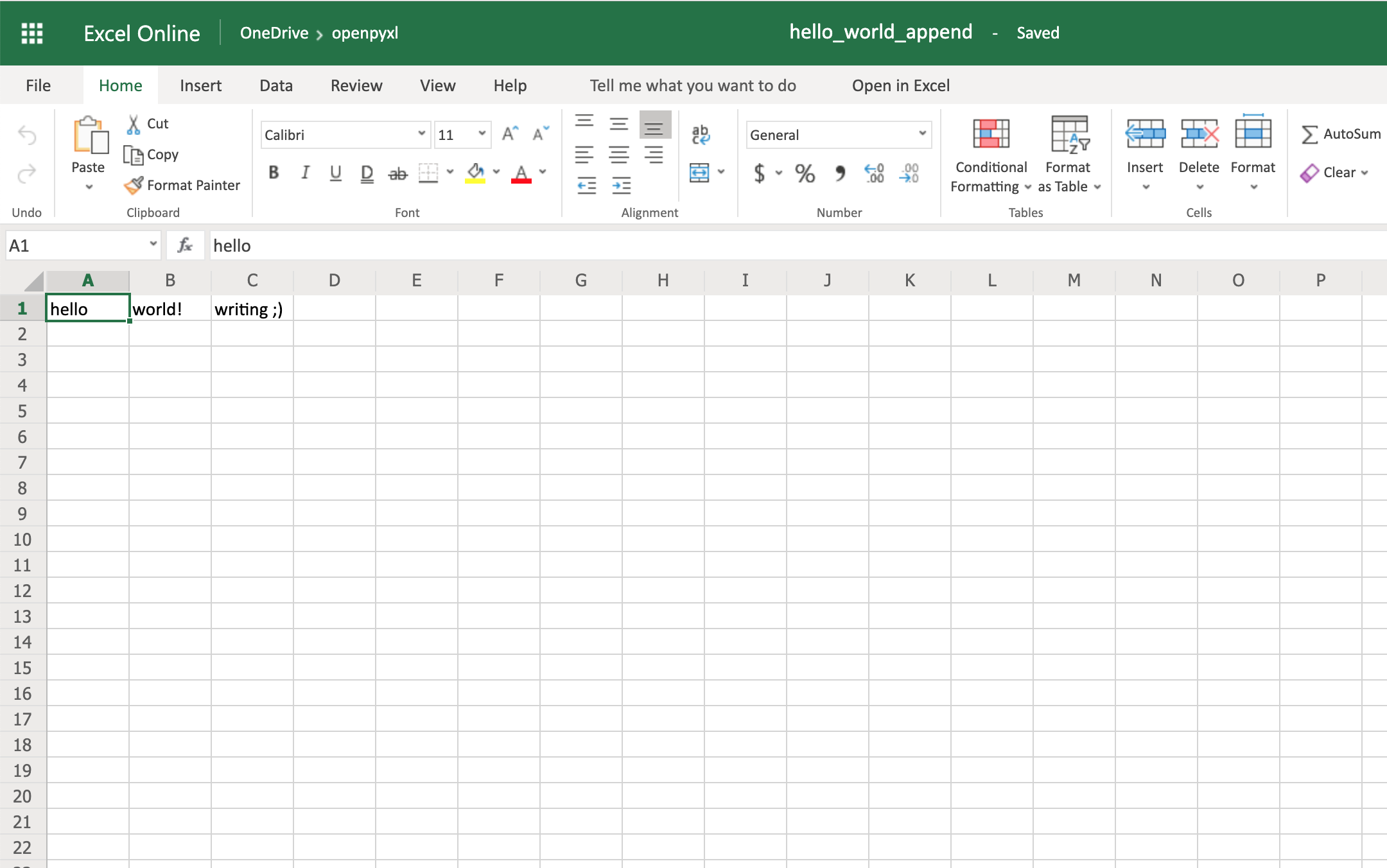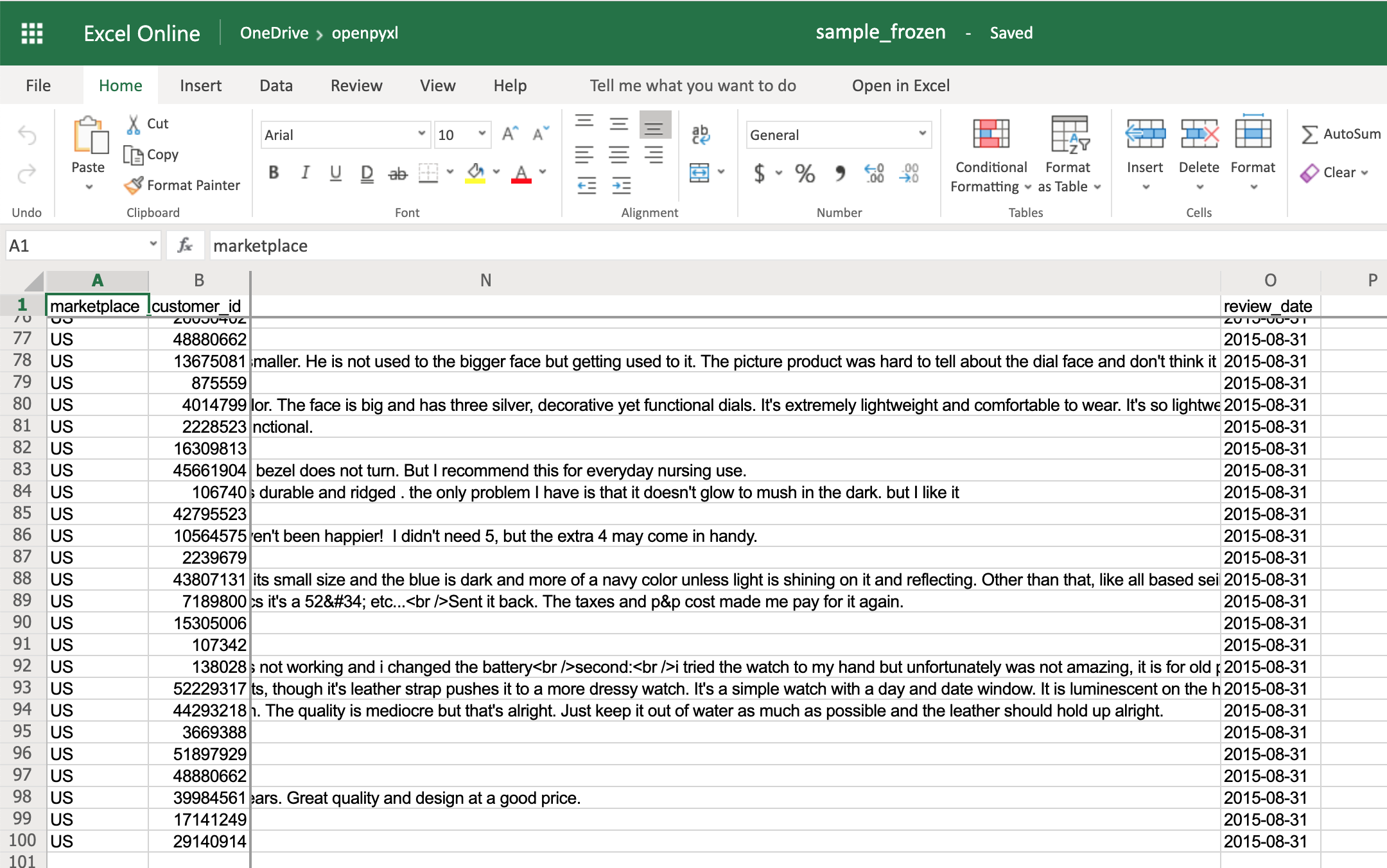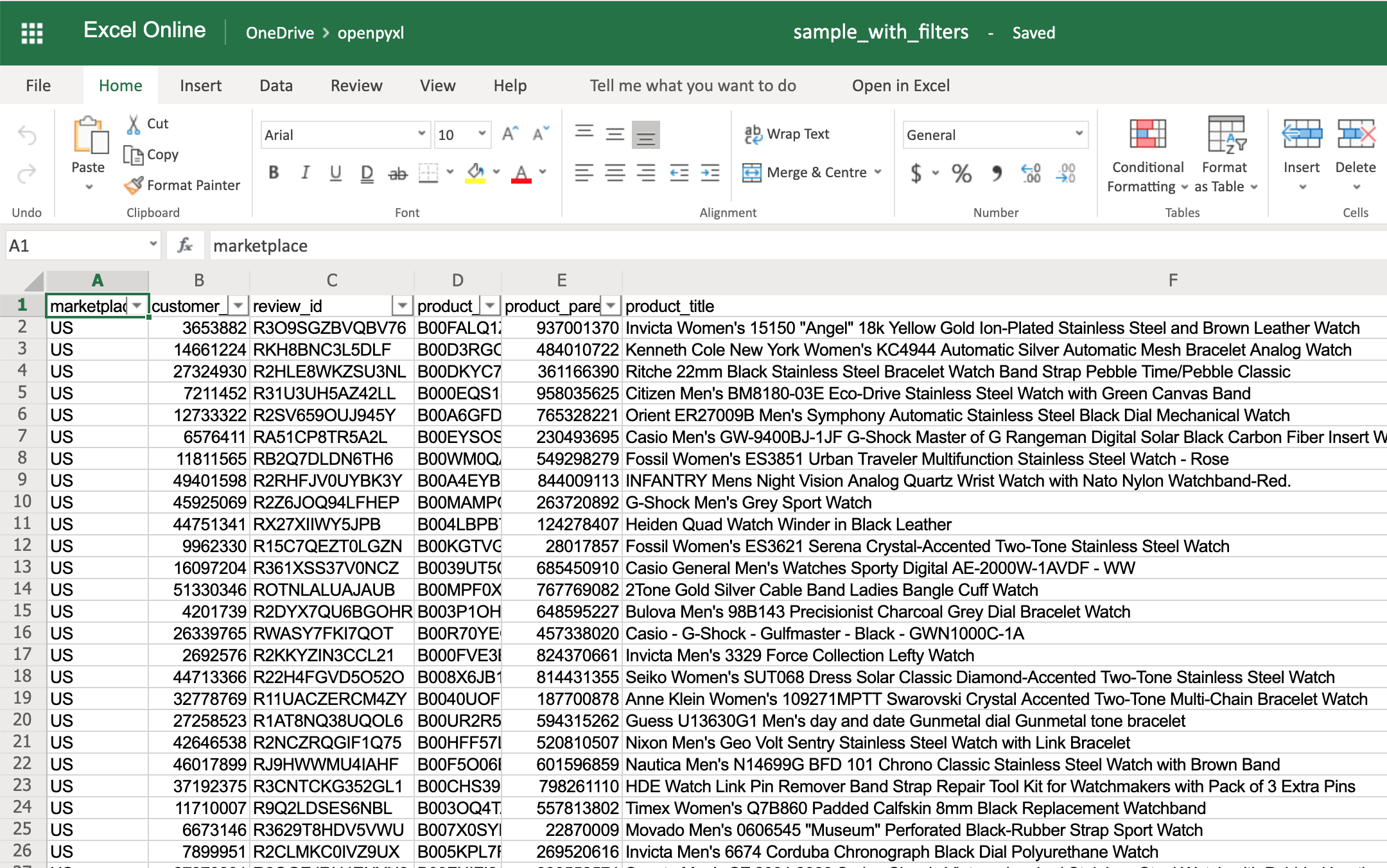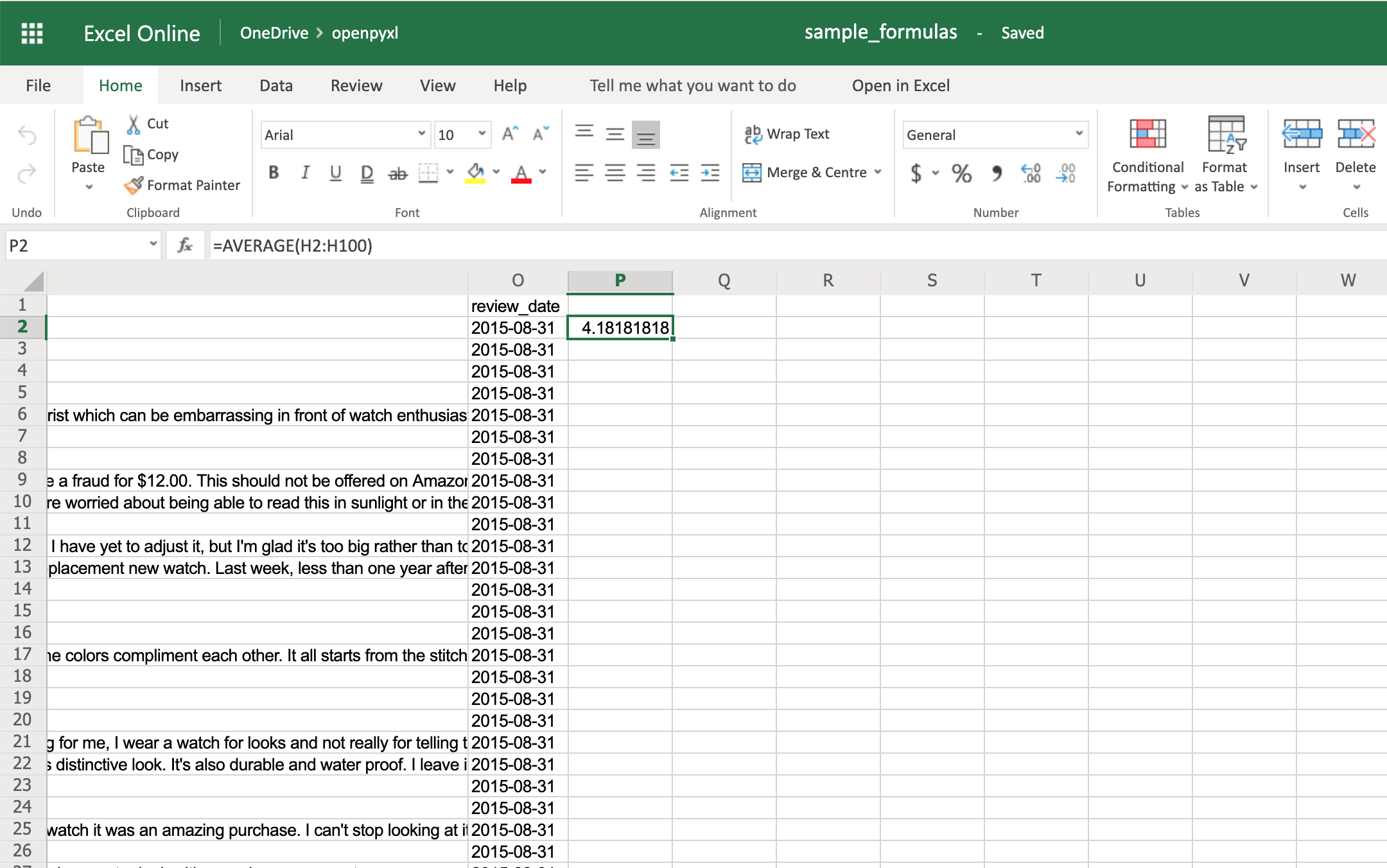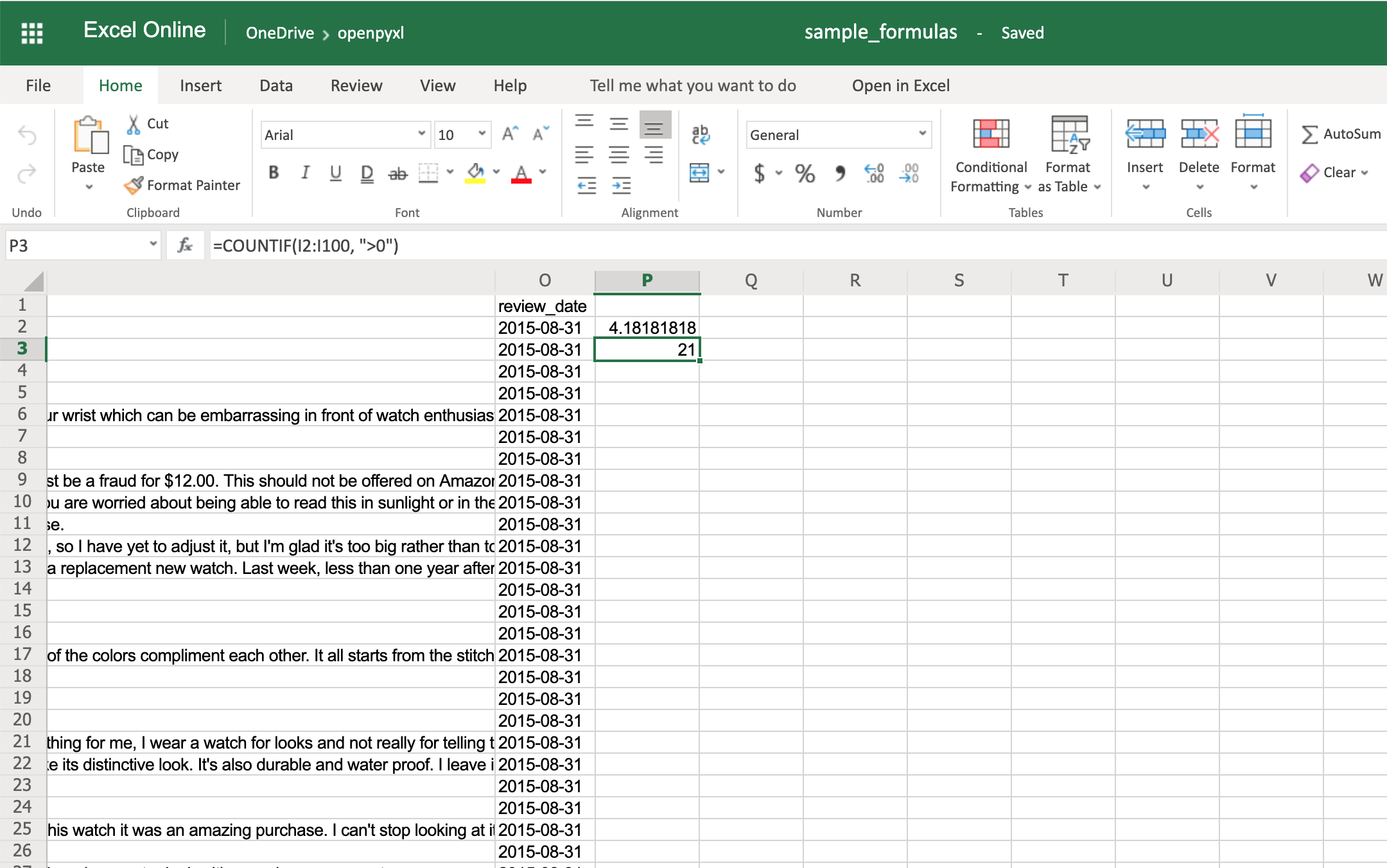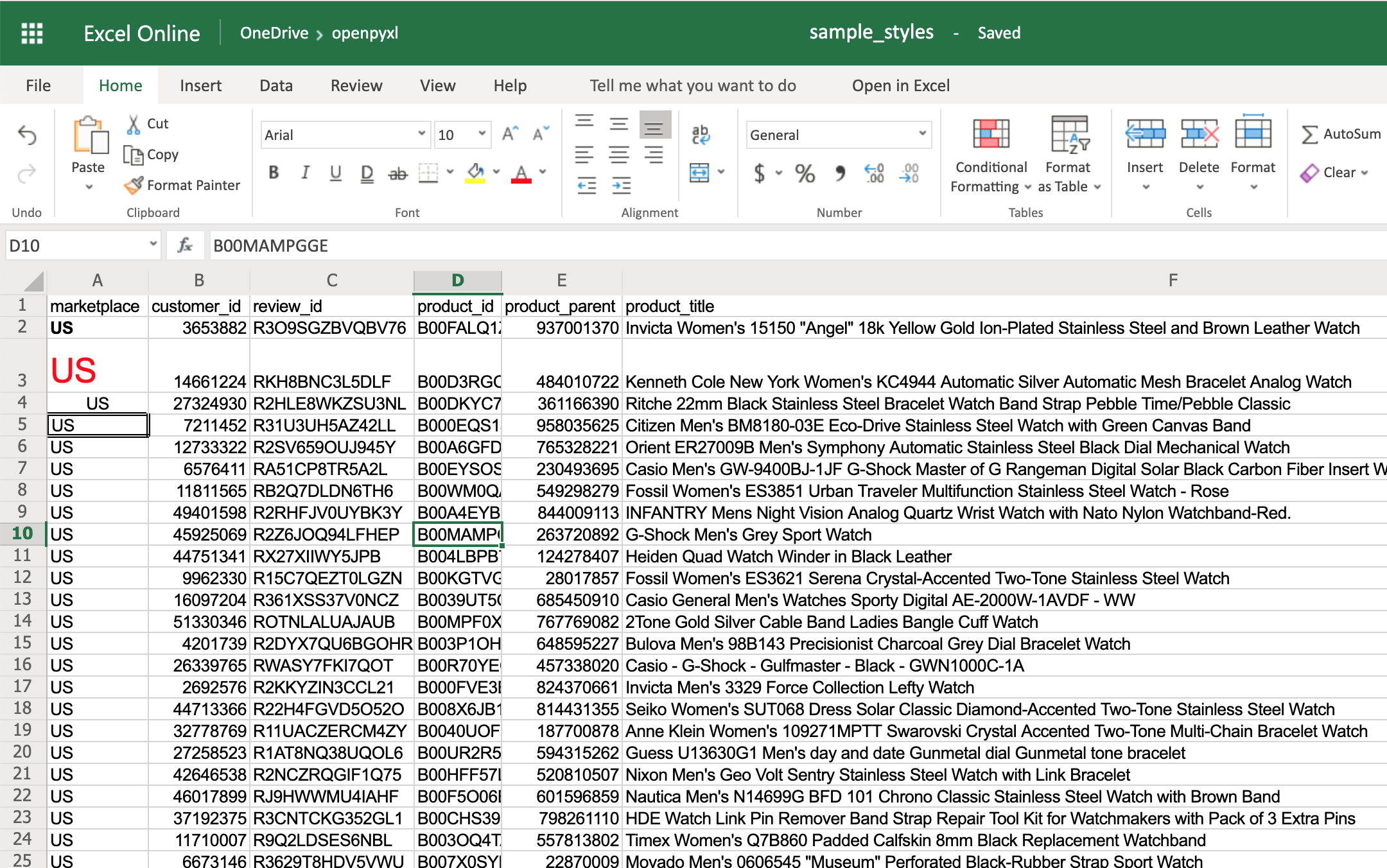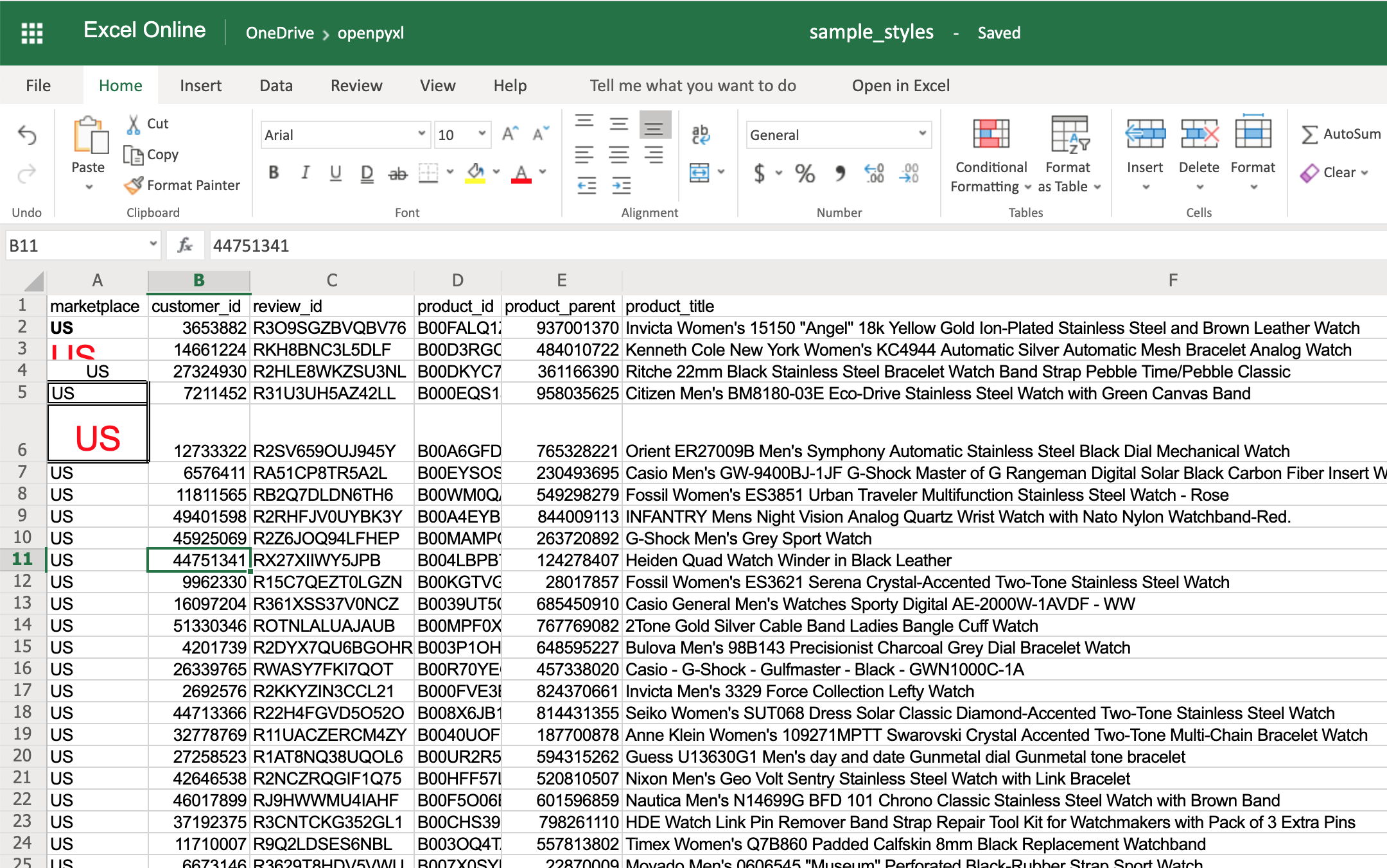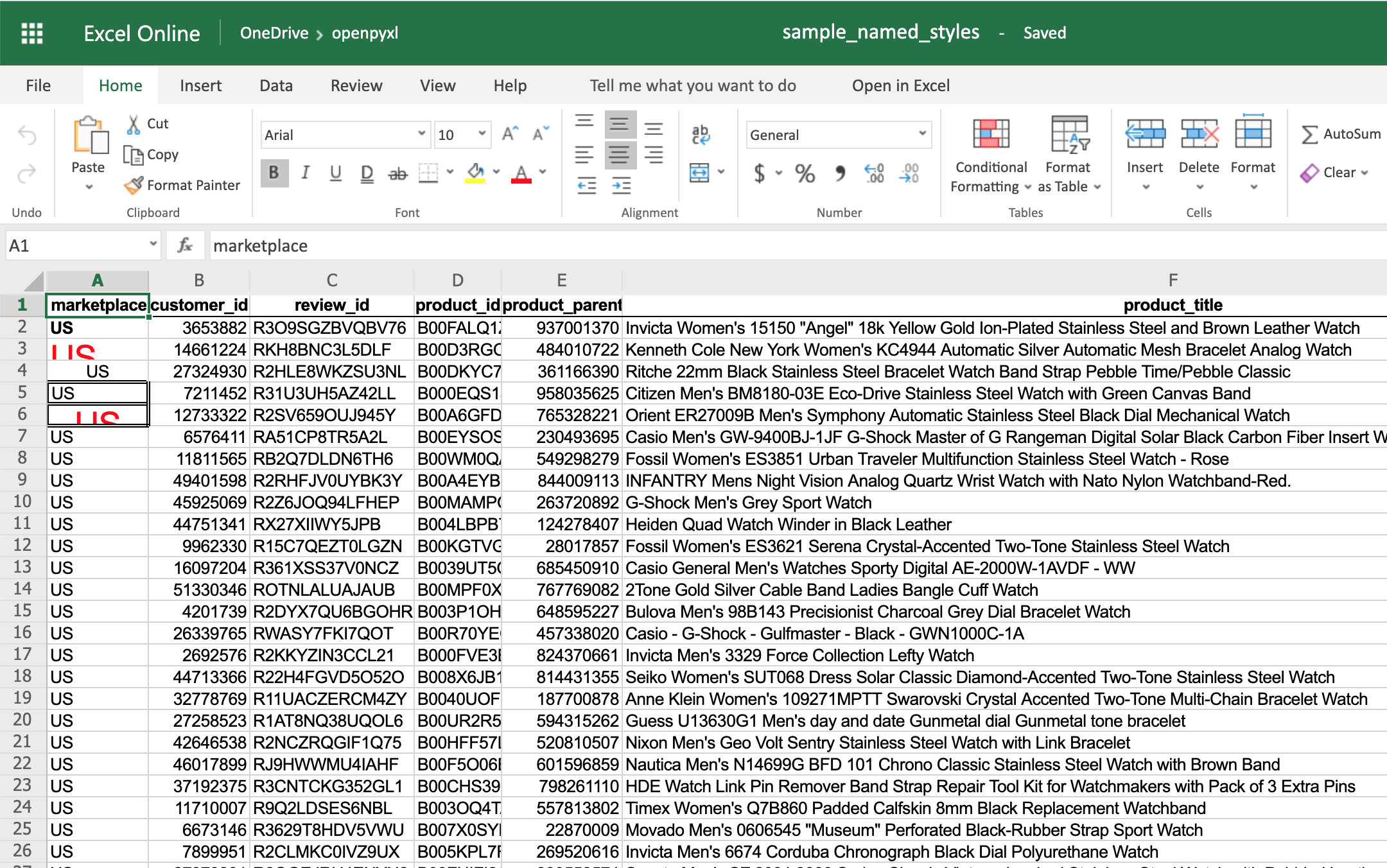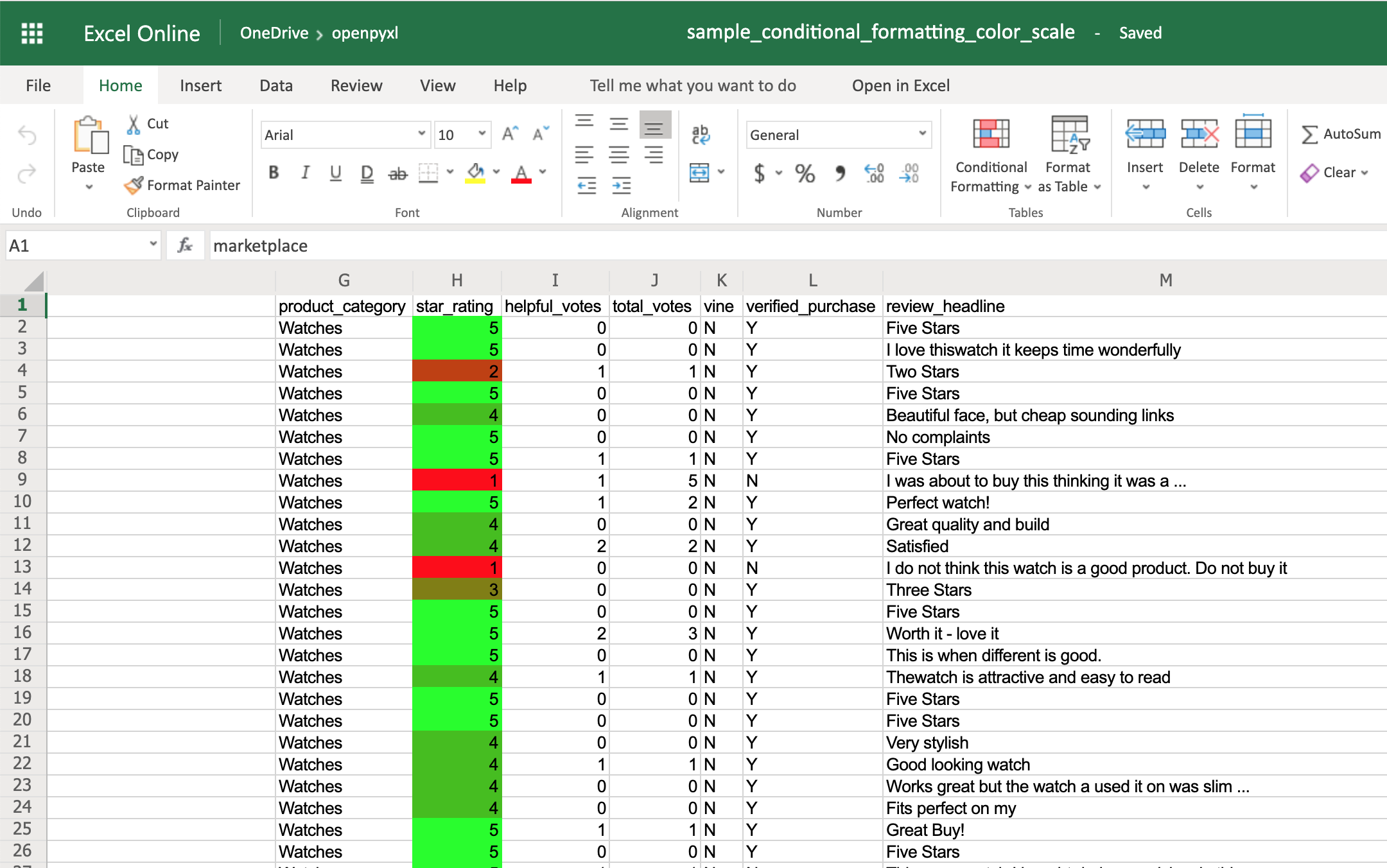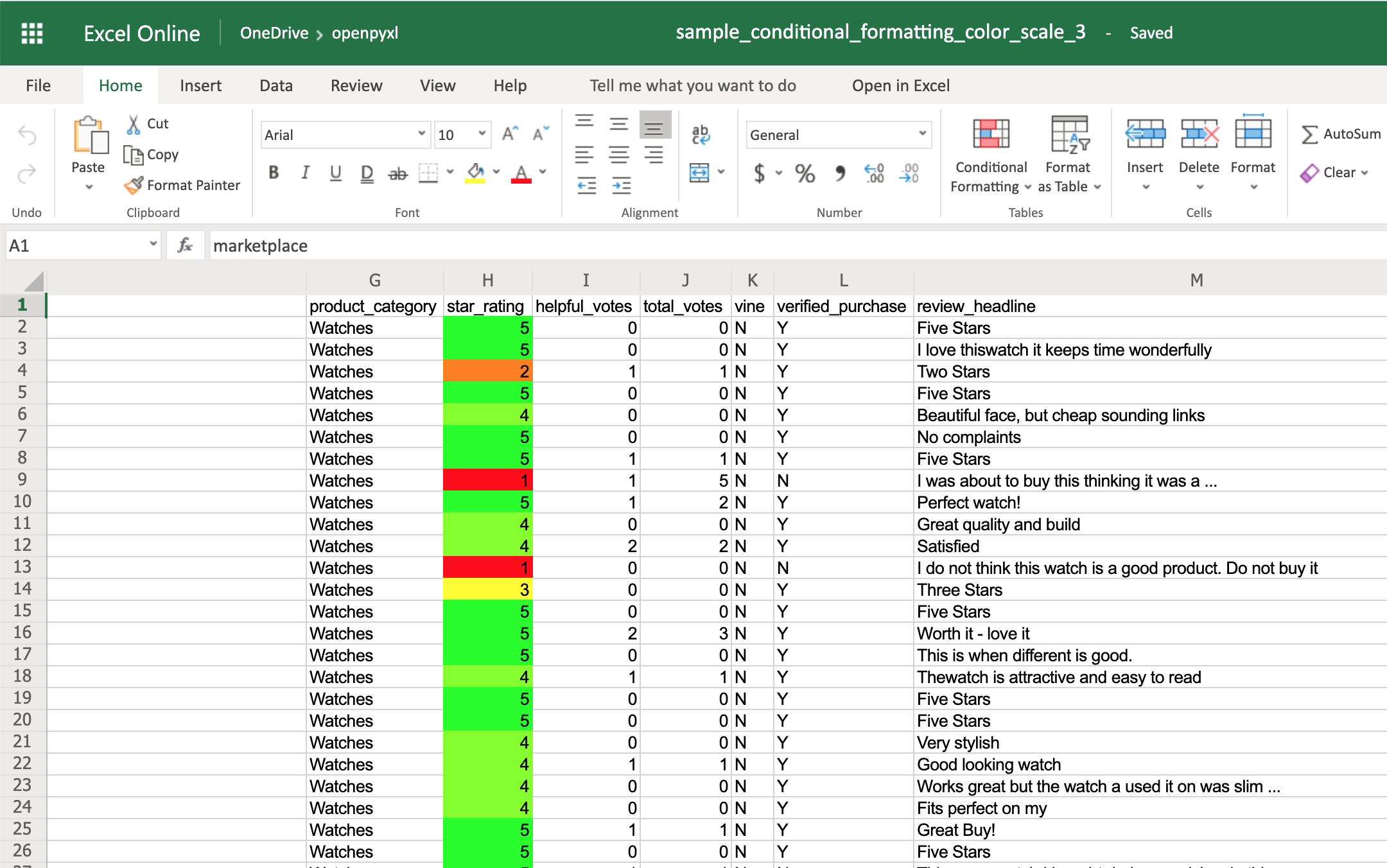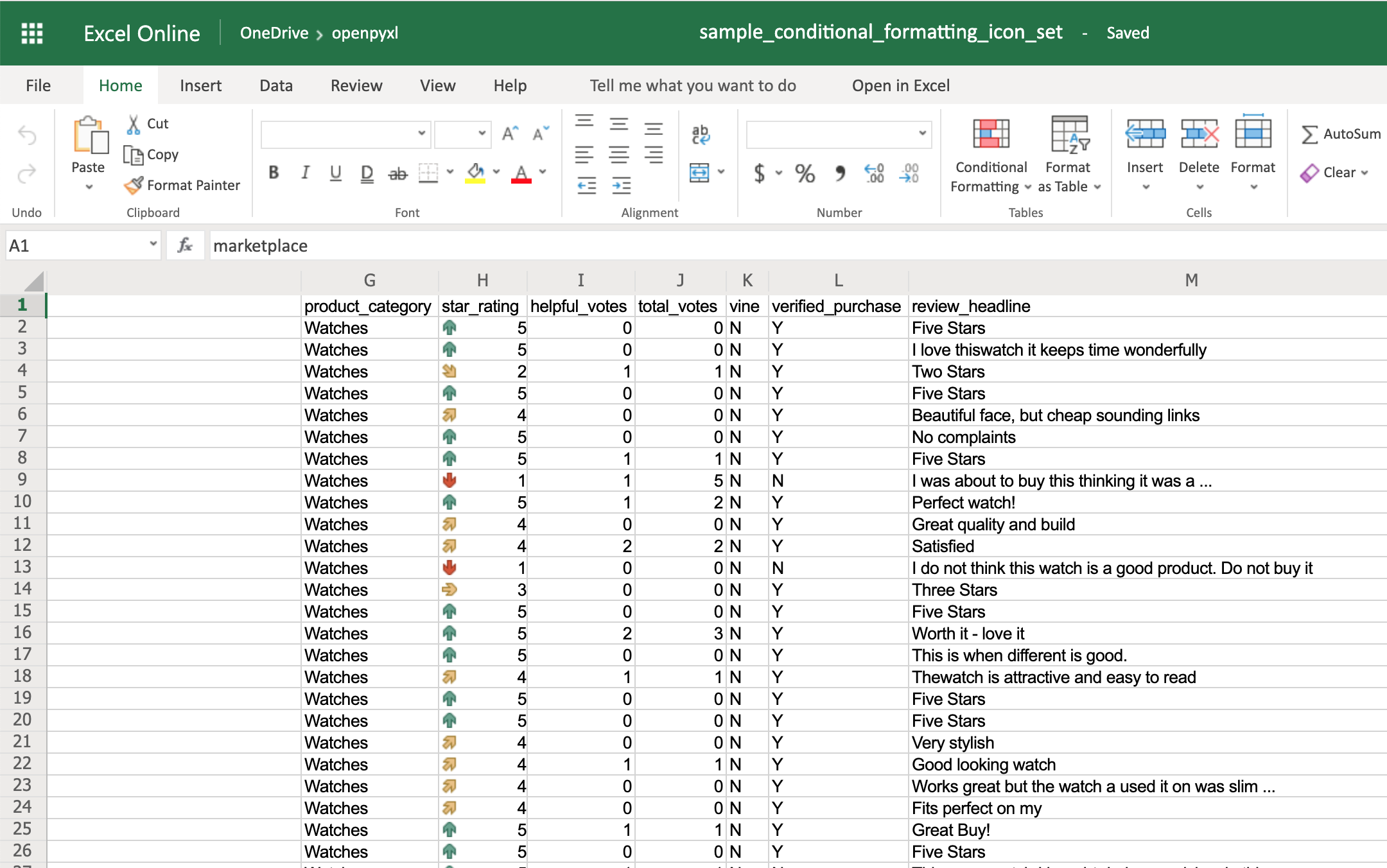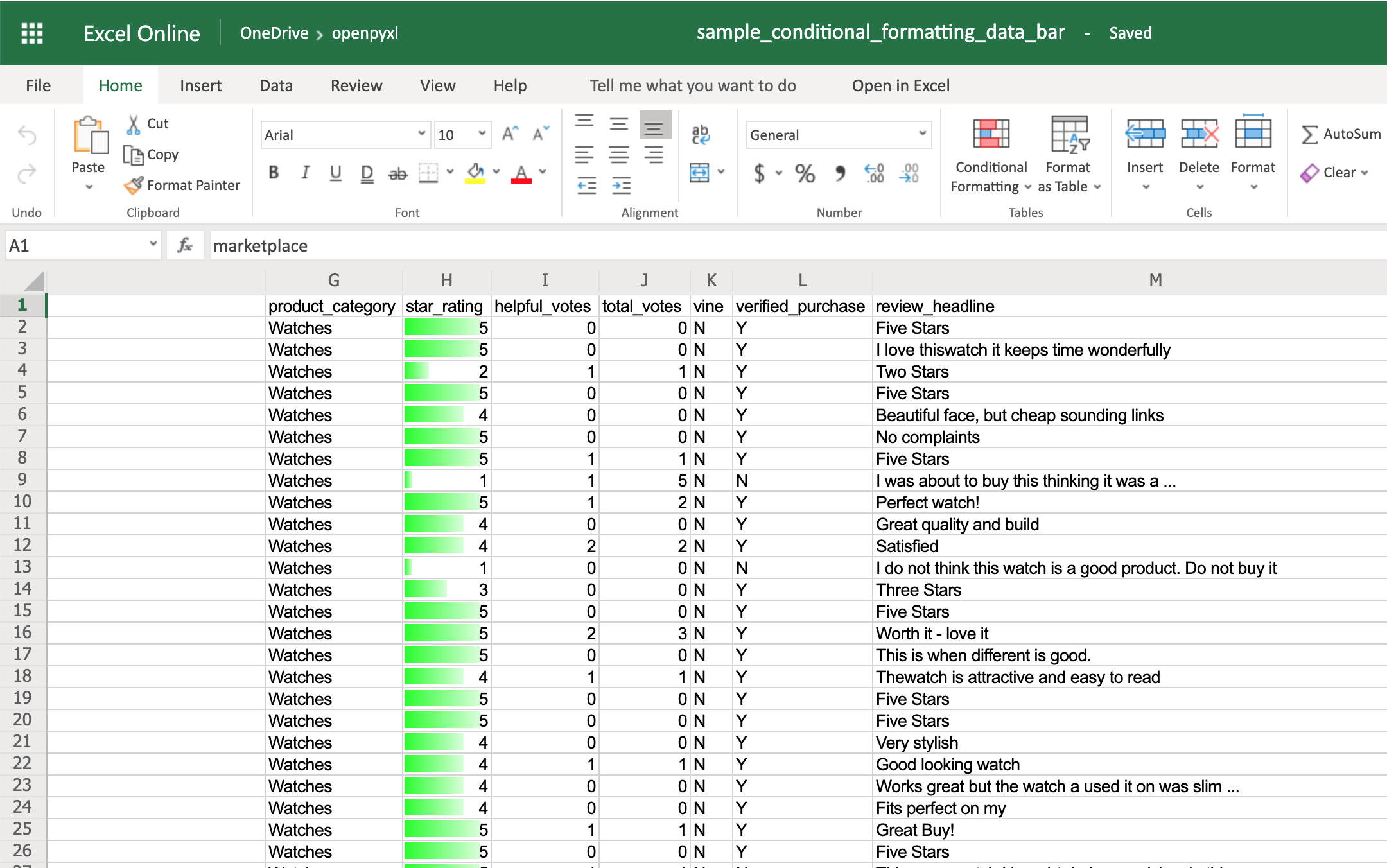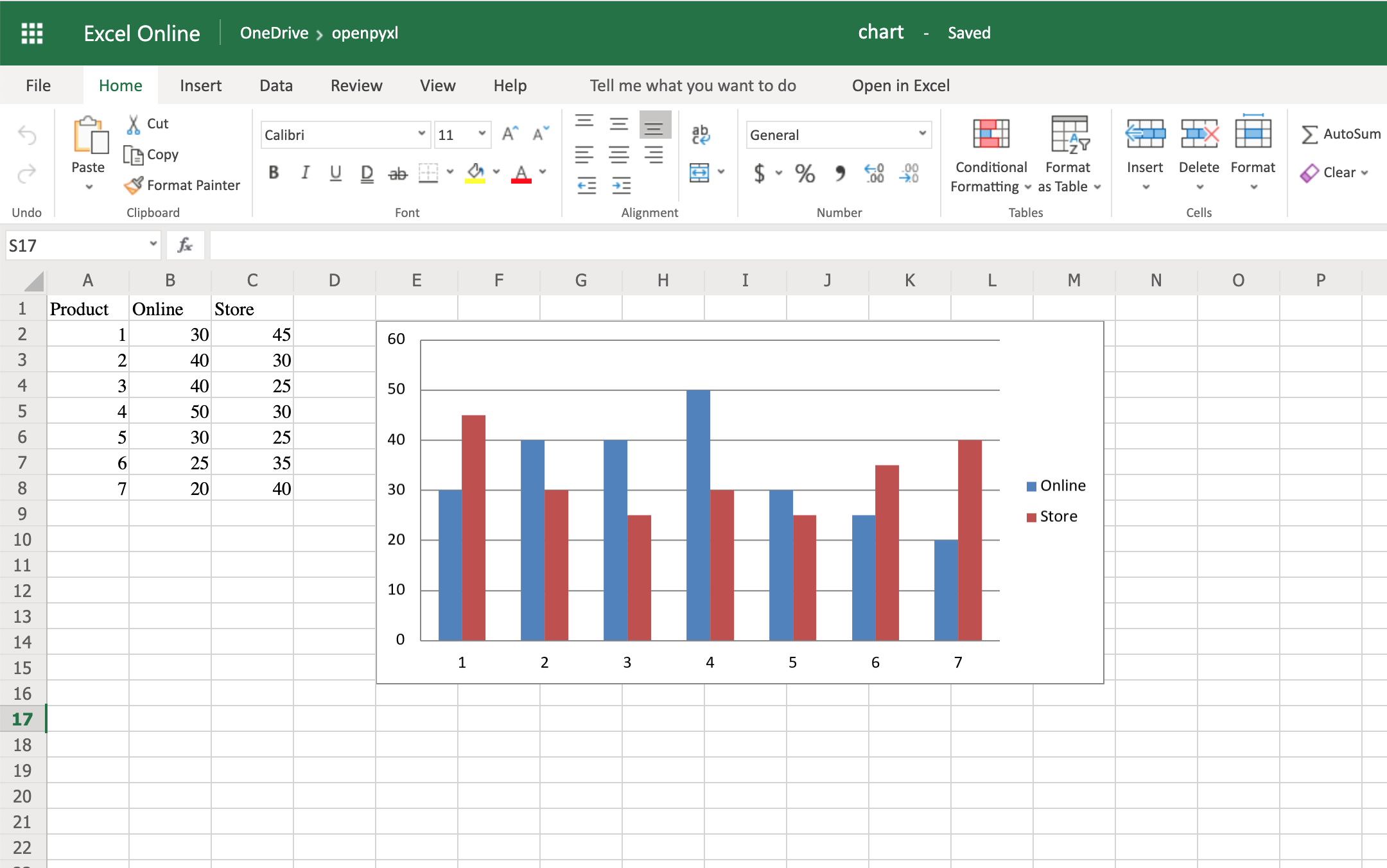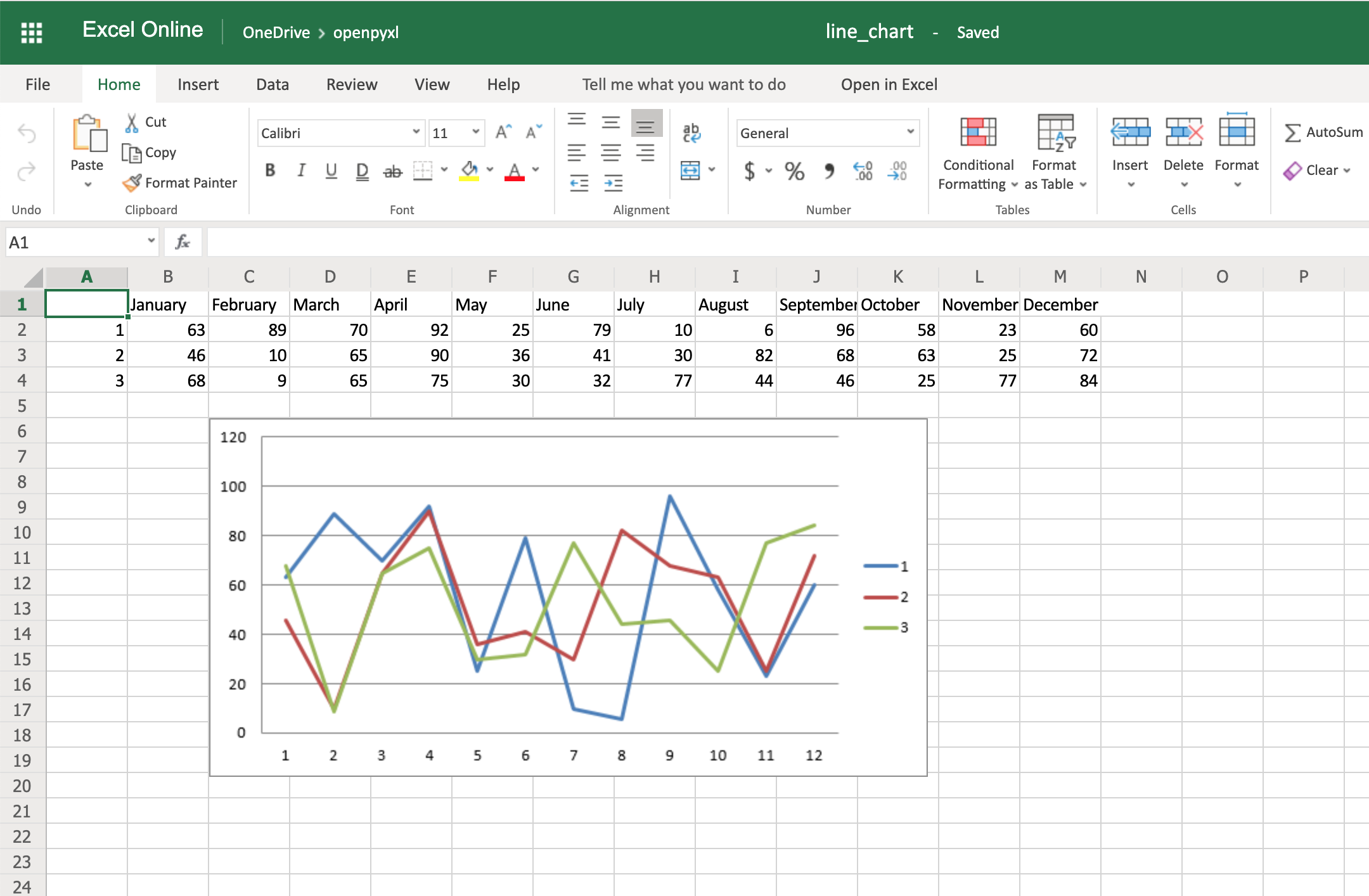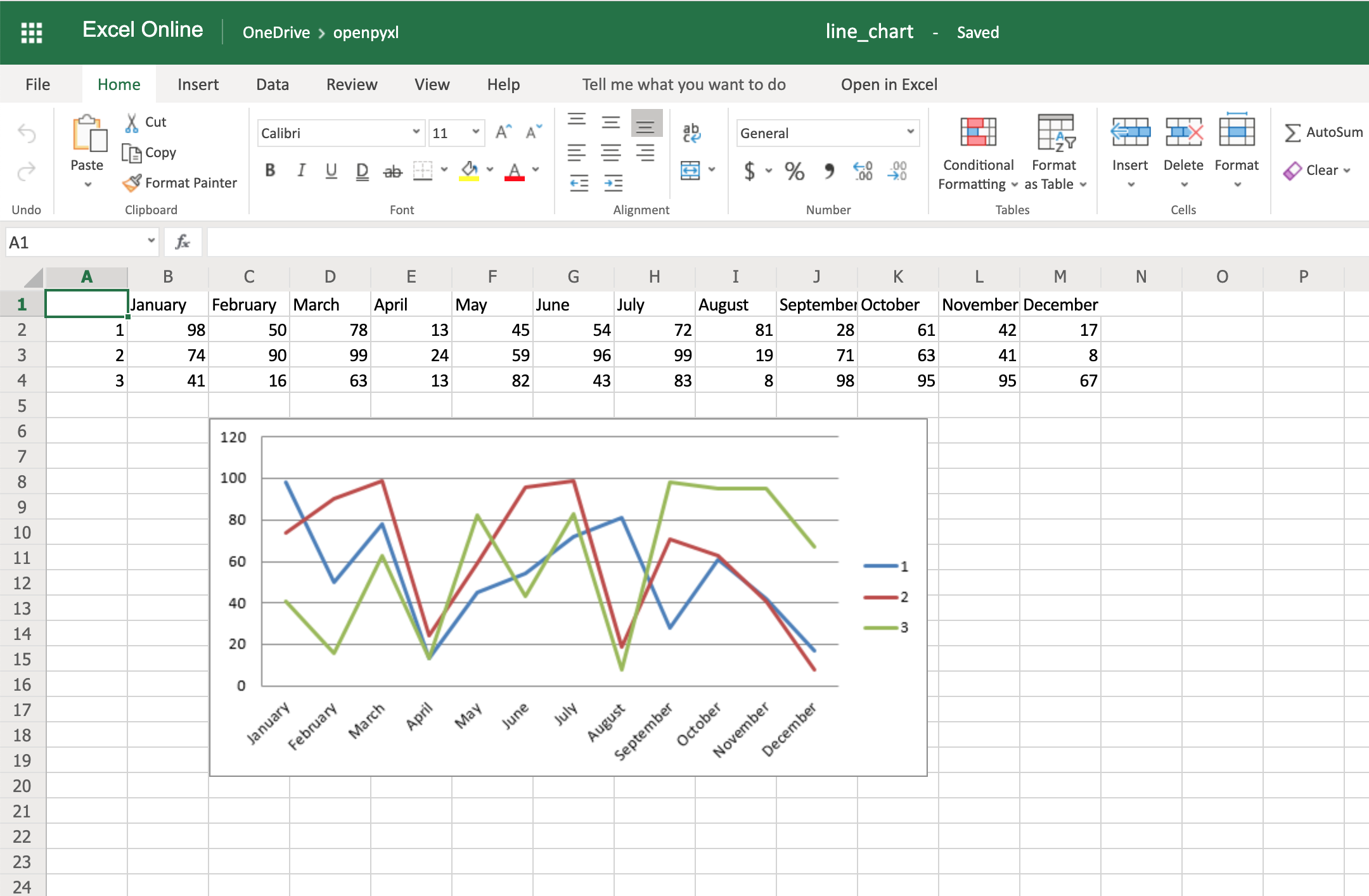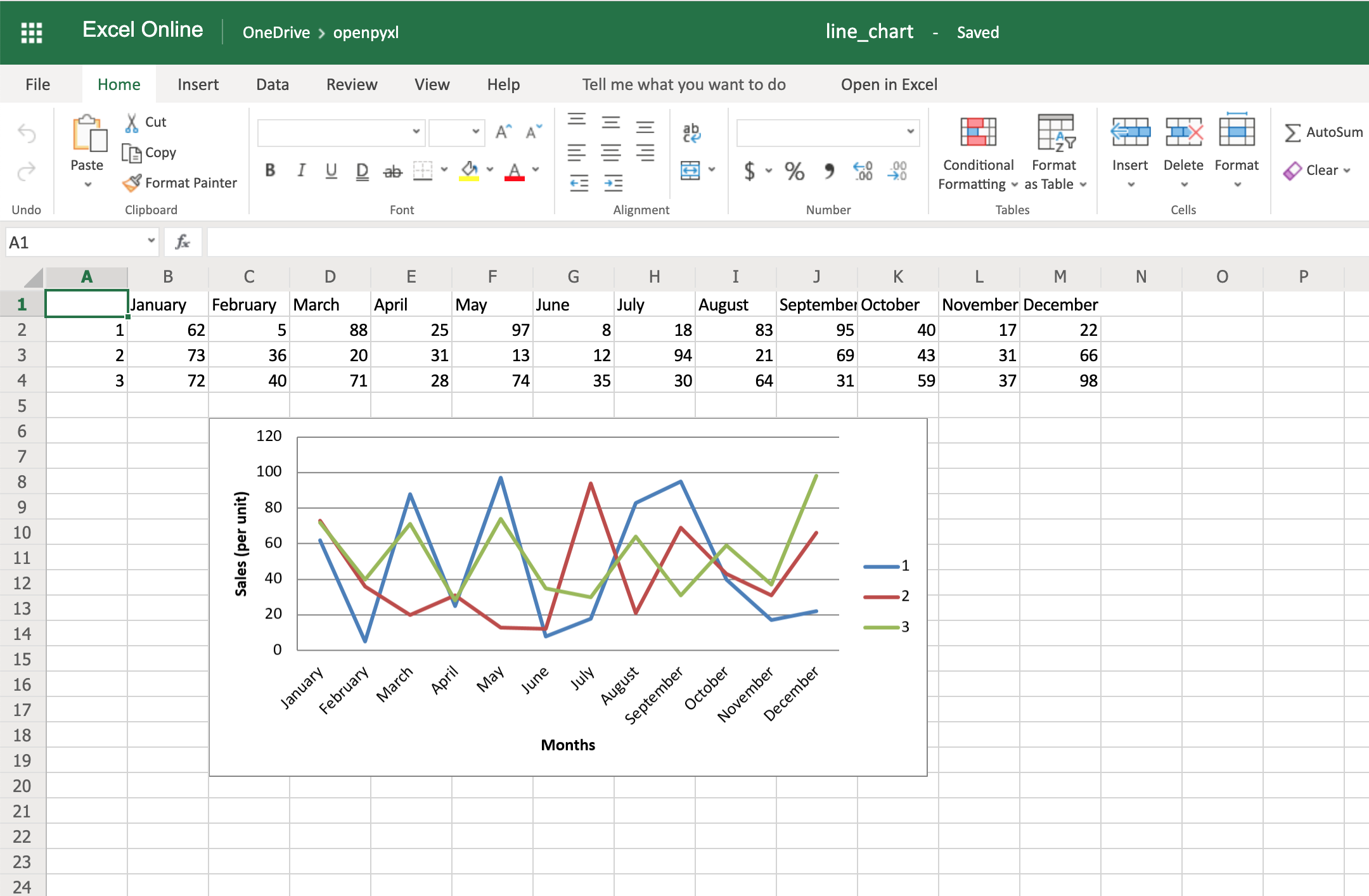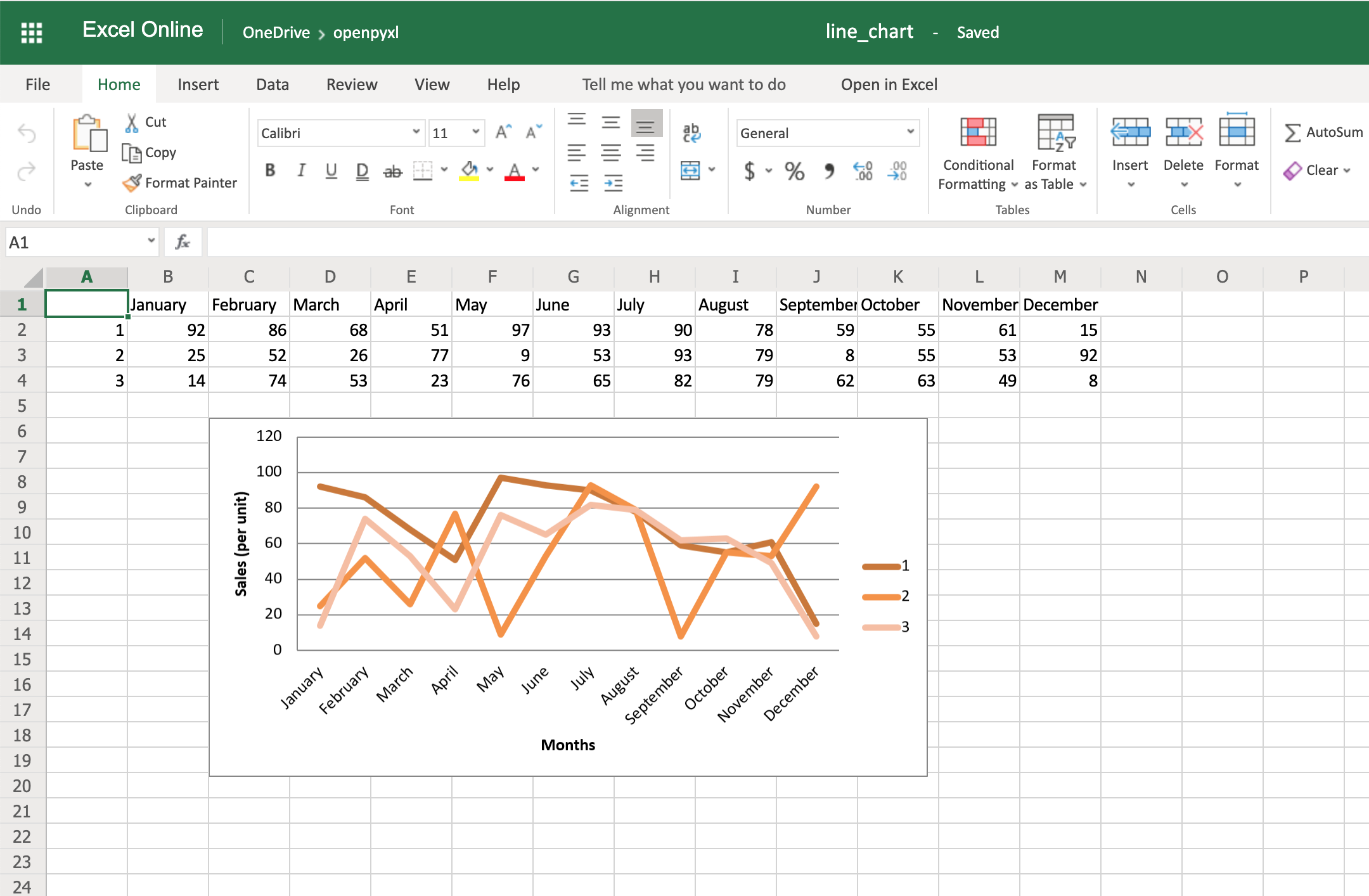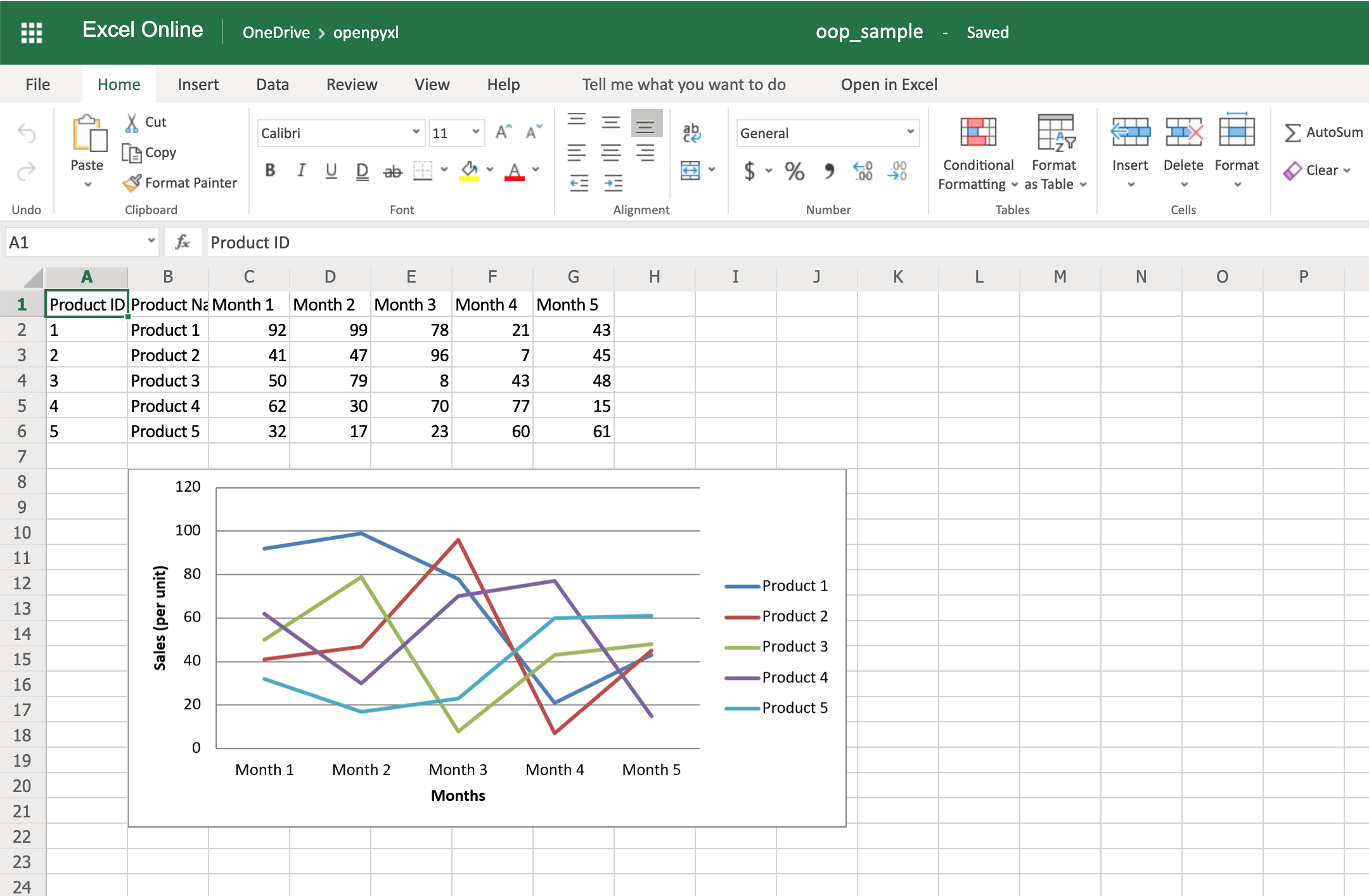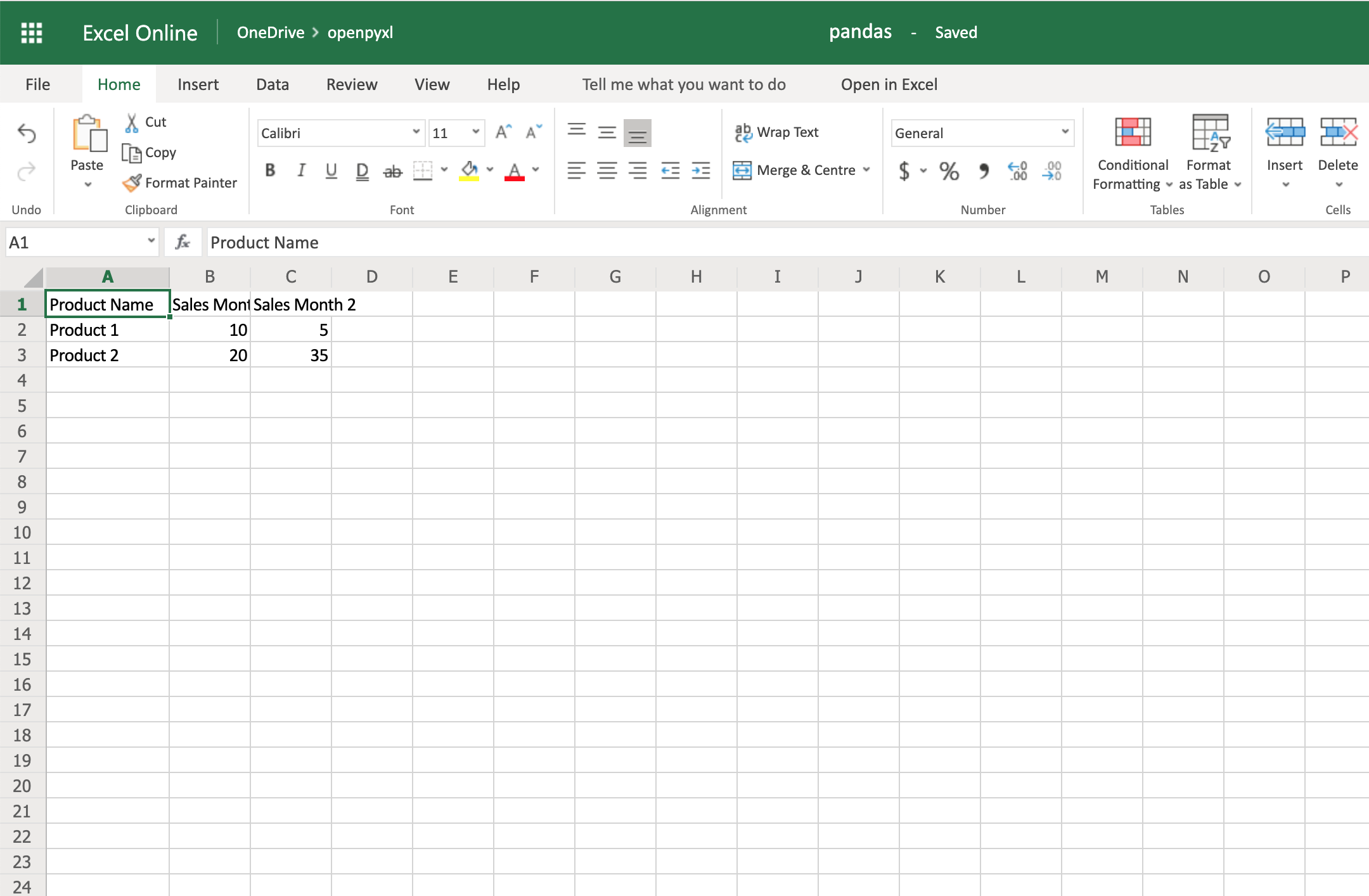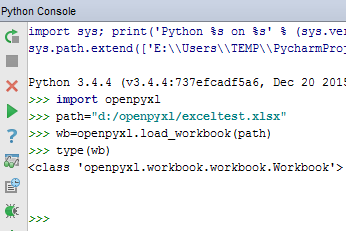Узнайте, как читать и импортировать файлы Excel в Python, как записывать данные в эти таблицы и какие библиотеки лучше всего подходят для этого.
Известный вам инструмент для организации, анализа и хранения ваших данных в таблицах — Excel — применяется и в data science. В какой-то момент вам придется иметь дело с этими таблицами, но работать именно с ними вы будете не всегда. Вот почему разработчики Python реализовали способы чтения, записи и управления не только этими файлами, но и многими другими типами файлов.
Из этого учебника узнаете, как можете работать с Excel и Python. Внутри найдете обзор библиотек, которые вы можете использовать для загрузки и записи этих таблиц в файлы с помощью Python. Вы узнаете, как работать с такими библиотеками, как pandas, openpyxl, xlrd, xlutils и pyexcel.
Данные как ваша отправная точка
Когда вы начинаете проект по data science, вам придется работать с данными, которые вы собрали по всему интернету, и с наборами данных, которые вы загрузили из других мест — Kaggle, Quandl и тд
Но чаще всего вы также найдете данные в Google или в репозиториях, которые используются другими пользователями. Эти данные могут быть в файле Excel или сохранены в файл с расширением .csv … Возможности могут иногда казаться бесконечными, но когда у вас есть данные, в первую очередь вы должны убедиться, что они качественные.
В случае с электронной таблицей вы можете не только проверить, могут ли эти данные ответить на вопрос исследования, который вы имеете в виду, но также и можете ли вы доверять данным, которые хранятся в электронной таблице.
Проверяем качество таблицы
- Представляет ли электронная таблица статические данные?
- Смешивает ли она данные, расчеты и отчетность?
- Являются ли данные в вашей электронной таблице полными и последовательными?
- Имеет ли ваша таблица систематизированную структуру рабочего листа?
- Проверяли ли вы действительные формулы в электронной таблице?
Этот список вопросов поможет убедиться, что ваша таблица не грешит против лучших практик, принятых в отрасли. Конечно, этот список не исчерпывающий, но позволит провести базовую проверку таблицы.
Лучшие практики для данных электронных таблиц
Прежде чем приступить к чтению вашей электронной таблицы на Python, вы также должны подумать о том, чтобы настроить свой файл в соответствии с некоторыми основными принципами, такими как:
- Первая строка таблицы обычно зарезервирована для заголовка, а первый столбец используется для идентификации единицы выборки;
- Избегайте имен, значений или полей с пробелами. В противном случае каждое слово будет интерпретироваться как отдельная переменная, что приведет к ошибкам, связанным с количеством элементов на строку в вашем наборе данных. По возможности, используйте:
- подчеркивания,
- тире,
- горбатый регистр, где первая буква каждого слова пишется с большой буквы
- объединяющие слова
- Короткие имена предпочтительнее длинных имен;
- старайтесь не использовать имена, которые содержат символы ?, $,%, ^, &, *, (,), -, #,? ,,, <,>, /, |, , [,], {, и };
- Удалите все комментарии, которые вы сделали в вашем файле, чтобы избежать добавления в ваш файл лишних столбцов или NA;
- Убедитесь, что все пропущенные значения в вашем наборе данных обозначены как NA.
Затем, после того, как вы внесли необходимые изменения или тщательно изучили свои данные, убедитесь, что вы сохранили внесенные изменения. Сделав это, вы можете вернуться к данным позже, чтобы отредактировать их, добавить дополнительные данные или изменить их, сохранив формулы, которые вы, возможно, использовали для расчета данных и т.д.
Если вы работаете с Microsoft Excel, вы можете сохранить файл в разных форматах: помимо расширения по умолчанию .xls или .xlsx, вы можете перейти на вкладку «Файл», нажать «Сохранить как» и выбрать одно из расширений, которые указаны в качестве параметров «Сохранить как тип». Наиболее часто используемые расширения для сохранения наборов данных в data science — это .csv и .txt (в виде текстового файла с разделителями табуляции). В зависимости от выбранного варианта сохранения поля вашего набора данных разделяются вкладками или запятыми, которые образуют символы-разделители полей вашего набора данных.
Теперь, когда вы проверили и сохранили ваши данные, вы можете начать с подготовки вашего рабочего окружения.
Готовим рабочее окружение
Как убедиться, что вы все делаете хорошо? Проверить рабочее окружение!
Когда вы работаете в терминале, вы можете сначала перейти в каталог, в котором находится ваш файл, а затем запустить Python. Убедитесь, что файл лежит именно в том каталоге, к которому вы обратились.
Возможно, вы уже начали сеанс Python и у вас нет подсказок о каталоге, в котором вы работаете. Тогда можно выполнить следующие команды:
# Import `os`
import os
# Retrieve current working directory (`cwd`)
cwd = os.getcwd()
cwd
# Change directory
os.chdir("/path/to/your/folder")
# List all files and directories in current directory
os.listdir('.')Круто, да?
Вы увидите, что эти команды очень важны не только для загрузки ваших данных, но и для дальнейшего анализа. А пока давайте продолжим: вы прошли все проверки, вы сохранили свои данные и подготовили рабочее окружение.
Можете ли вы начать с чтения данных в Python?
Установите библиотеки для чтения и записи файлов Excel
Даже если вы еще не знаете, какие библиотеки вам понадобятся для импорта ваших данных, вы должны убедиться, что у вас есть все, что нужно для установки этих библиотек, когда придет время.
Подготовка к дополнительной рабочей области: pip
Вот почему вам нужно установить pip и setuptools. Если у вас установлен Python2 ⩾ 2.7.9 или Python3 ⩾ 3.4, то можно не беспокоиться — просто убедитесь, что вы обновились до последней версии.
Для этого выполните следующую команду в своем терминале:
# Для Linux/OS X
pip install -U pip setuptools
# Для Windows
python -m pip install -U pip setuptoolsЕсли вы еще не установили pip, запустите скрипт python get-pip.py, который вы можете найти здесь. Следуйте инструкциям по установке.
Установка Anaconda
Другой вариант для работы в data science — установить дистрибутив Anaconda Python. Сделав это, вы получите простой и быстрый способ начать заниматься data science, потому что вам не нужно беспокоиться об установке отдельных библиотек, необходимых для работы.
Это особенно удобно, если вы новичок, но даже для более опытных разработчиков это способ быстро протестировать некоторые вещи без необходимости устанавливать каждую библиотеку отдельно.
Anaconda включает в себя 100 самых популярных библиотек Python, R и Scala для науки о данных и несколько сред разработки с открытым исходным кодом, таких как Jupyter и Spyder.
Установить Anaconda можно здесь. Следуйте инструкциям по установке, и вы готовы начать!
Загрузить файлы Excel в виде фреймов Pandas
Все, среда настроена, вы готовы начать импорт ваших файлов.
Один из способов, который вы часто используете для импорта ваших файлов для обработки данных, — с помощью библиотеки Pandas. Она основана на NumPy и предоставляет простые в использовании структуры данных и инструменты анализа данных Python.
Эта мощная и гибкая библиотека очень часто используется дата-инженерами для передачи своих данных в структуры данных, очень выразительных для их анализа.
Если у вас уже есть Pandas, доступные через Anaconda, вы можете просто загрузить свои файлы в Pandas DataFrames с помощью pd.Excelfile():
# импорт библиотеки pandas
import pandas as pd
# Загружаем ваш файл в переменную `file` / вместо 'example' укажите название свого файла из текущей директории
file = 'example.xlsx'
# Загружаем spreadsheet в объект pandas
xl = pd.ExcelFile(file)
# Печатаем название листов в данном файле
print(xl.sheet_names)
# Загрузить лист в DataFrame по его имени: df1
df1 = xl.parse('Sheet1')Если вы не установили Anaconda, просто выполните pip install pandas, чтобы установить библиотеку Pandas в вашей среде, а затем выполните команды, которые включены в фрагмент кода выше.
Проще простого, да?
Для чтения в файлах .csv у вас есть аналогичная функция для загрузки данных в DataFrame: read_csv(). Вот пример того, как вы можете использовать эту функцию:
# Импорт библиотеки pandas
import pandas as pd
# Загрузить csv файл
df = pd.read_csv("example.csv") Разделитель, который будет учитывать эта функция, по умолчанию является запятой, но вы можете указать альтернативный разделитель, если хотите. Перейдите к документации, чтобы узнать, какие другие аргументы вы можете указать для успешного импорта!
Обратите внимание, что есть также функции read_table() и read_fwf() для чтения файлов и таблиц с фиксированной шириной в формате DataFrames с общим разделителем. Для первой функции разделителем по умолчанию является вкладка, но вы можете снова переопределить это, а также указать альтернативный символ-разделитель. Более того, есть и другие функции, которые вы можете использовать для получения данных в DataFrames: вы можете найти их здесь.
Как записать Pandas DataFrames в файлы Excel
Допустим, что после анализа данных вы хотите записать данные обратно в новый файл. Есть также способ записать ваши Pandas DataFrames обратно в файлы с помощью функции to_excel().
Но, прежде чем использовать эту функцию, убедитесь, что у вас установлен XlsxWriter, если вы хотите записать свои данные в несколько листов в файле .xlsx:
# Установим `XlsxWriter`
pip install XlsxWriter
# Указать writer библиотеки
writer = pd.ExcelWriter('example.xlsx', engine='xlsxwriter')
# Записать ваш DataFrame в файл
yourData.to_excel(writer, 'Sheet1')
# Сохраним результат
writer.save()Обратите внимание, что в приведенном выше фрагменте кода вы используете объект ExcelWriter для вывода DataFrame.
Иными словами, вы передаете переменную Writer в функцию to_excel() и также указываете имя листа. Таким образом, вы добавляете лист с данными в существующую рабочую книгу: вы можете использовать ExcelWriter для сохранения нескольких (немного) разных DataFrames в одной рабочей книге.
Все это означает, что если вы просто хотите сохранить один DataFrame в файл, вы также можете обойтись без установки пакета XlsxWriter. Затем вы просто не указываете аргумент движка, который вы передаете в функцию pd.ExcelWriter(). Остальные шаги остаются прежними.
Аналогично функциям, которые вы использовали для чтения в файлах .csv, у вас также есть функция to_csv() для записи результатов обратно в файл, разделенный запятыми. Он снова работает так же, как когда вы использовали его для чтения в файле:
# Запишите DataFrame в csv
df.to_csv("example.csv")Если вы хотите иметь файл, разделенный табуляцией, вы также можете передать t аргументу sep. Обратите внимание, что есть другие функции, которые вы можете использовать для вывода ваших файлов. Вы можете найти их все здесь.
Пакеты для разбора файлов Excel и обратной записи с помощью Python
Помимо библиотеки Pandas, который вы будете использовать очень часто для загрузки своих данных, вы также можете использовать другие библиотеки для получения ваших данных в Python. Наш обзор основан на этой странице со списком доступных библиотек, которые вы можете использовать для работы с файлами Excel в Python.
Далее вы увидите, как использовать эти библиотеки с помощью некоторых реальных, но упрощенных примеров.
Использование виртуальных сред
Общий совет для установки — делать это в Python virtualenv без системных пакетов. Вы можете использовать virtualenv для создания изолированных сред Python: он создает папку, содержащую все необходимые исполняемые файлы для использования пакетов, которые потребуются проекту Python.
Чтобы начать работать с virtualenv, вам сначала нужно установить его. Затем перейдите в каталог, в который вы хотите поместить свой проект. Создайте virtualenv в этой папке и загрузите в определенную версию Python, если вам это нужно. Затем вы активируете виртуальную среду. После этого вы можете начать загрузку в другие библиотеки, начать работать с ними и т. д.
Совет: не забудьте деактивировать среду, когда закончите!
# Install virtualenv
$ pip install virtualenv
# Go to the folder of your project
$ cd my_folder
# Create a virtual environment `venv`
$ virtualenv venv
# Indicate the Python interpreter to use for `venv`
$ virtualenv -p /usr/bin/python2.7 venv
# Activate `venv`
$ source venv/bin/activate
# Deactivate `venv`
$ deactivateОбратите внимание, что виртуальная среда может показаться немного проблемной на первый взгляд, когда вы только начинаете работать с данными с Python. И, особенно если у вас есть только один проект, вы можете не понять, зачем вам вообще нужна виртуальная среда.
С ней будет гораздо легче, когда у вас одновременно запущено несколько проектов, и вы не хотите, чтобы они использовали одну и ту же установку Python. Или когда ваши проекты имеют противоречащие друг другу требования, виртуальная среда пригодится!
Теперь вы можете, наконец, начать установку и импорт библиотек, о которых вы читали, и загрузить их в таблицу.
Как читать и записывать файлы Excel с openpyxl
Этот пакет обычно рекомендуется, если вы хотите читать и записывать файлы .xlsx, xlsm, xltx и xltm.
Установите openpyxl с помощью pip: вы видели, как это сделать в предыдущем разделе.
Общий совет для установки этой библиотеки — делать это в виртуальной среде Python без системных библиотек. Вы можете использовать виртуальную среду для создания изолированных сред Python: она создает папку, которая содержит все необходимые исполняемые файлы для использования библиотек, которые потребуются проекту Python.
Перейдите в каталог, в котором находится ваш проект, и повторно активируйте виртуальную среду venv. Затем продолжите установку openpyxl с pip, чтобы убедиться, что вы можете читать и записывать файлы с ним:
# Активируйте virtualenv
$ source activate venv
# Установим `openpyxl` в `venv`
$ pip install openpyxlТеперь, когда вы установили openpyxl, вы можете загружать данные. Но что это за данные?
Доспутим Excel с данными, которые вы пытаетесь загрузить в Python, содержит следующие листы:
Функция load_workbook() принимает имя файла в качестве аргумента и возвращает объект рабочей книги, который представляет файл. Вы можете проверить это, запустив type (wb). Убедитесь, что вы находитесь в том каталоге, где находится ваша таблица, иначе вы получите error при импорте.
# Import `load_workbook` module from `openpyxl`
from openpyxl import load_workbook
# Load in the workbook
wb = load_workbook('./test.xlsx')
# Get sheet names
print(wb.get_sheet_names())Помните, что вы можете изменить рабочий каталог с помощью os.chdir().
Вы видите, что фрагмент кода выше возвращает имена листов книги, загруженной в Python.Можете использовать эту информацию, чтобы также получить отдельные листы рабочей книги.
Вы также можете проверить, какой лист в настоящее время активен с wb.active. Как видно из кода ниже, вы можете использовать его для загрузки другого листа из вашей книги:
# Get a sheet by name
sheet = wb.get_sheet_by_name('Sheet3')
# Print the sheet title
sheet.title
# Get currently active sheet
anotherSheet = wb.active
# Check `anotherSheet`
anotherSheetНа первый взгляд, с этими объектами рабочего листа вы не сможете многое сделать.. Однако вы можете извлечь значения из определенных ячеек на листе вашей книги, используя квадратные скобки [], в которые вы передаете точную ячейку, из которой вы хотите получить значение.
Обратите внимание, что это похоже на выбор, получение и индексирование массивов NumPy и Pandas DataFrames, но это не все, что вам нужно сделать, чтобы получить значение. Вам нужно добавить атрибут value:
# Retrieve the value of a certain cell
sheet['A1'].value
# Select element 'B2' of your sheet
c = sheet['B2']
# Retrieve the row number of your element
c.row
# Retrieve the column letter of your element
c.column
# Retrieve the coordinates of the cell
c.coordinateКак вы можете видеть, помимо значения, есть и другие атрибуты, которые вы можете использовать для проверки вашей ячейки, а именно: row, column и coordinate.
Атрибут row вернет 2;
Добавление атрибута column к c даст вам ‘B’
coordinate вернет ‘B2’.
Вы также можете получить значения ячеек с помощью функции cell(). Передайте row и column, добавьте к этим аргументам значения, соответствующие значениям ячейки, которую вы хотите получить, и, конечно же, не забудьте добавить атрибут value:
# Retrieve cell value
sheet.cell(row=1, column=2).value
# Print out values in column 2
for i in range(1, 4):
print(i, sheet.cell(row=i, column=2).value)Обратите внимание, что если вы не укажете атрибут value, вы получите <Cell Sheet3.B1>, который ничего не говорит о значении, которое содержится в этой конкретной ячейке.
Вы видите, что вы используете цикл for с помощью функции range(), чтобы помочь вам распечатать значения строк, имеющих значения в столбце 2. Если эти конкретные ячейки пусты, вы просто вернете None. Если вы хотите узнать больше о циклах for, пройдите наш курс Intermediate Python для Data Science.
Есть специальные функции, которые вы можете вызывать для получения некоторых других значений, например, get_column_letter() и column_index_from_string.
Две функции указывают примерно то, что вы можете получить, используя их, но лучше сделать их четче: хотя вы можете извлечь букву столбца с предшествующего, вы можете сделать обратное или получить адрес столбца, когда вы задаёте букву последнему. Вы можете увидеть, как это работает ниже:
# Импорт необходимых модулей из `openpyxl.utils`
from openpyxl.utils import get_column_letter, column_index_from_string
# Вывод 'A'
get_column_letter(1)
# Return '1'
column_index_from_string('A')Вы уже получили значения для строк, которые имеют значения в определенном столбце, но что вам нужно сделать, если вы хотите распечатать строки вашего файла, не сосредотачиваясь только на одном столбце? Использовать другой цикл, конечно!
Например, вы говорите, что хотите сфокусироваться на области между «А1» и «С3», где первая указывает на левый верхний угол, а вторая — на правый нижний угол области, на которой вы хотите сфокусироваться. ,
Эта область будет так называемым cellObj, который вы видите в первой строке кода ниже. Затем вы говорите, что для каждой ячейки, которая находится в этой области, вы печатаете координату и значение, которое содержится в этой ячейке. После конца каждой строки вы печатаете сообщение, которое указывает, что строка этой области cellObj напечатана.
# Напечатать строчку за строчкой
for cellObj in sheet['A1':'C3']:
for cell in cellObj:
print(cells.coordinate, cells.value)
print('--- END ---')Еще раз обратите внимание, что выбор области очень похож на выбор, получение и индексирование списка и элементов массива NumPy, где вы также используете [] и : для указания области, значения которой вы хотите получить. Кроме того, вышеприведенный цикл также хорошо использует атрибуты ячейки!
Чтобы сделать вышеприведенное объяснение и код наглядным, вы можете проверить результат, который вы получите после завершения цикла:
('A1', u'M')
('B1', u'N')
('C1', u'O')
--- END ---
('A2', 10L)
('B2', 11L)
('C2', 12L)
--- END ---
('A3', 14L)
('B3', 15L)
('C3', 16L)
--- END ---Наконец, есть некоторые атрибуты, которые вы можете использовать для проверки результата вашего импорта, а именно max_row и max_column. Эти атрибуты, конечно, и так — общие способы проверки правильности загрузки данных, но они все равно полезны.
# Вывести максимальное количество строк
sheet.max_row
# Вывести максимальное количество колонок
sheet.max_columnНаверное, вы думаете, что такой способ работы с этими файлами сложноват, особенно если вы еще хотите манипулировать данными.
Должно быть что-то попроще, верно? Так и есть!
openpyxl поддерживает Pandas DataFrames! Вы можете использовать функцию DataFrame() из библиотеки Pandas, чтобы поместить значения листа в DataFrame:
# Import `pandas`
import pandas as pd
# конвертировать Лист в DataFrame
df = pd.DataFrame(sheet.values)Если вы хотите указать заголовки и индексы, вам нужно добавить немного больше кода:
# Put the sheet values in `data`
data = sheet.values
# Indicate the columns in the sheet values
cols = next(data)[1:]
# Convert your data to a list
data = list(data)
# Read in the data at index 0 for the indices
idx = [r[0] for r in data]
# Slice the data at index 1
data = (islice(r, 1, None) for r in data)
# Make your DataFrame
df = pd.DataFrame(data, index=idx, columns=cols)Затем вы можете начать манипулировать данными со всеми функциями, которые предлагает библиотека Pandas. Но помните, что вы находитесь в виртуальной среде, поэтому, если библиотека еще не представлена, вам нужно будет установить ее снова через pip.
Чтобы записать ваши Pandas DataFrames обратно в файл Excel, вы можете легко использовать функцию dataframe_to_rows() из модуля utils:
# Import `dataframe_to_rows`
from openpyxl.utils.dataframe import dataframe_to_rows
# Initialize a workbook
wb = Workbook()
# Get the worksheet in the active workbook
ws = wb.active
# Append the rows of the DataFrame to your worksheet
for r in dataframe_to_rows(df, index=True, header=True):
ws.append(r)Но это точно не все! Библиотека openpyxl предлагает вам высокую гибкость при записи ваших данных обратно в файлы Excel, изменении стилей ячеек или использовании режима write-only. Эту библиотеку обязательно нужно знать, когда вы часто работаете с электронными таблицами ,
Совет: читайте больше о том, как вы можете изменить стили ячеек, перейти в режим write-only или как библиотека работает с NumPy здесь.
Теперь давайте также рассмотрим некоторые другие библиотеки, которые вы можете использовать для получения данных вашей электронной таблицы в Python.
Прежде чем закрыть этот раздел, не забудьте отключить виртуальную среду, когда закончите!
Чтение и форматирование Excel-файлов: xlrd
Эта библиотека идеально подходит для чтения и форматирования данных из Excel с расширением xls или xlsx.
# Import `xlrd`
import xlrd
# Open a workbook
workbook = xlrd.open_workbook('example.xls')
# Loads only current sheets to memory
workbook = xlrd.open_workbook('example.xls', on_demand = True)Когда вам не нужны данные из всей Excel-книги, вы можете использовать функции sheet_by_name() или sheet_by_index() для получения листов, которые вы хотите получить в своём анализе
# Load a specific sheet by name
worksheet = workbook.sheet_by_name('Sheet1')
# Load a specific sheet by index
worksheet = workbook.sheet_by_index(0)
# Retrieve the value from cell at indices (0,0)
sheet.cell(0, 0).valueТакже можно получить значение в определённых ячейках с вашего листа.
Перейдите к xlwt и xlutils, чтобы узнать больше о том, как они относятся к библиотеке xlrd.
Запись данных в Excel-файлы с xlwt
Если вы хотите создать таблицу со своими данными, вы можете использовать не только библиотеку XlsWriter, но и xlwt. xlwt идеально подходит для записи данных и форматирования информации в файлах с расширением .xls
Когда вы вручную создаёте файл:
# Import `xlwt`
import xlwt
# Initialize a workbook
book = xlwt.Workbook(encoding="utf-8")
# Add a sheet to the workbook
sheet1 = book.add_sheet("Python Sheet 1")
# Write to the sheet of the workbook
sheet1.write(0, 0, "This is the First Cell of the First Sheet")
# Save the workbook
book.save("spreadsheet.xls")Если вы хотите записать данные в файл, но не хотите делать все самостоятельно, вы всегда можете прибегнуть к циклу for, чтобы автоматизировать весь процесс. Составьте сценарий, в котором вы создаёте книгу и в которую добавляете лист. Укажите список со столбцами и один со значениями, которые будут заполнены на листе.
Далее у вас есть цикл for, который гарантирует, что все значения попадают в файл: вы говорите, что для каждого элемента в диапазоне от 0 до 4 (5 не включительно) вы собираетесь что-то делать. Вы будете заполнять значения построчно. Для этого вы указываете элемент строки, который появляется в каждом цикле. Далее у вас есть еще один цикл for, который будет проходить по столбцам вашего листа. Вы говорите, что для каждой строки на листе, вы будете смотреть на столбцы, которые идут с ним, и вы будете заполнять значение для каждого столбца в строке. Заполнив все столбцы строки значениями, вы перейдете к следующей строке, пока не останется строк.
# Initialize a workbook
book = xlwt.Workbook()
# Add a sheet to the workbook
sheet1 = book.add_sheet("Sheet1")
# The data
cols = ["A", "B", "C", "D", "E"]
txt = [0,1,2,3,4]
# Loop over the rows and columns and fill in the values
for num in range(5):
row = sheet1.row(num)
for index, col in enumerate(cols):
value = txt[index] + num
row.write(index, value)
# Save the result
book.save("test.xls")На скриншоте ниже представлен результат выполнения этого кода:
Теперь, когда вы увидели, как xlrd и xlwt работают друг с другом, пришло время взглянуть на библиотеку, которая тесно связана с этими двумя: xlutils.
Сборник утилит: xlutils
Эта библиотека — сборник утилит, для которого требуются и xlrd и xlwt, и которая может копировать, изменять и фильтровать существующие данные. О том, как пользоваться этими командами рассказано в разделе по openpyxl.
Вернитесь в раздел openpyxl, чтобы получить больше информации о том, как использовать этот пакет для получения данных в Python.
Использование pyexcel для чтения .xls или .xlsx файлов
Еще одна библиотека, которую можно использовать для чтения данных электронных таблиц в Python — это pyexcel; Python Wrapper, который предоставляет один API для чтения, записи и работы с данными в файлах .csv, .ods, .xls, .xlsx и .xlsm. Конечно, для этого урока вы просто сосредоточитесь на файлах .xls и .xls.
Чтобы получить ваши данные в массиве, вы можете использовать функцию get_array(), которая содержится в пакете pyexcel:
# Import `pyexcel`
import pyexcel
# Get an array from the data
my_array = pyexcel.get_array(file_name="test.xls")Вы также можете получить свои данные в упорядоченном словаре списков. Вы можете использовать функцию get_dict():
# Import `OrderedDict` module
from pyexcel._compact import OrderedDict
# Get your data in an ordered dictionary of lists
my_dict = pyexcel.get_dict(file_name="test.xls", name_columns_by_row=0)
# Get your data in a dictionary of 2D arrays
book_dict = pyexcel.get_book_dict(file_name="test.xls")Здесь видно, что если вы хотите получить словарь двумерных массивов или получить все листы рабочей книги в одном словаре, вы можете прибегнуть к get_book_dict().
Помните, что эти две структуры данных, которые были упомянуты выше, массивы и словари вашей таблицы, позволяют вам создавать DataFrames ваших данных с помощью pd.DataFrame(). Это облегчит обработку данных.
Кроме того, вы можете просто получить записи из таблицы с помощью pyexcel благодаря функции get_records(). Просто передайте аргумент file_name в функцию, и вы получите список словарей:
# Retrieve the records of the file
records = pyexcel.get_records(file_name="test.xls")Чтобы узнать, как управлять списками Python, ознакомьтесь с примерами из документации о списках Python.
Запись в файл с pyexcel
С помощью этой библиотеки можно не только загружать данные в массивы, вы также можете экспортировать свои массивы обратно в таблицу. Используйте функцию save_as() и передайте массив и имя файла назначения в аргумент dest_file_name:
# Get the data
data = [[1, 2, 3], [4, 5, 6], [7, 8, 9]]
# Save the array to a file
pyexcel.save_as(array=data, dest_file_name="array_data.xls")Обратите внимание, что если вы хотите указать разделитель, вы можете добавить аргумент dest_delimiter и передать символ, который вы хотите использовать в качестве разделителя между «».
Однако если у вас есть словарь, вам нужно использовать функцию save_book_as(). Передайте двумерный словарь в bookdict и укажите имя файла:
# The data
2d_array_dictionary = {'Sheet 1': [
['ID', 'AGE', 'SCORE']
[1, 22, 5],
[2, 15, 6],
[3, 28, 9]
],
'Sheet 2': [
['X', 'Y', 'Z'],
[1, 2, 3],
[4, 5, 6]
[7, 8, 9]
],
'Sheet 3': [
['M', 'N', 'O', 'P'],
[10, 11, 12, 13],
[14, 15, 16, 17]
[18, 19, 20, 21]
]}
# Save the data to a file
pyexcel.save_book_as(bookdict=2d_array_dictionary, dest_file_name="2d_array_data.xls")При использовании кода, напечатанного в приведенном выше примере, важно помнить, что порядок ваших данных в словаре не будет сохранен. Если вы не хотите этого, вам нужно сделать небольшой обход. Вы можете прочитать все об этом здесь.
Чтение и запись .csv файлов
Если вы все еще ищете библиотеки, которые позволяют загружать и записывать данные в файлы .csv, кроме Pandas, лучше всего использовать пакет csv:
# import `csv`
import csv
# Read in csv file
for row in csv.reader(open('data.csv'), delimiter=','):
print(row)
# Write csv file
data = [[1, 2, 3], [4, 5, 6], [7, 8, 9]]
outfile = open('data.csv', 'w')
writer = csv.writer(outfile, delimiter=';', quotechar='"')
writer.writerows(data)
outfile.close()Обратите внимание, что в пакете NumPy есть функция genfromtxt(), которая позволяет загружать данные, содержащиеся в файлах .csv, в массивы, которые затем можно поместить в DataFrames.
Финальная проверка данных
Когда у вас есть данные, не забудьте последний шаг: проверить, правильно ли загружены данные. Если вы поместили свои данные в DataFrame, вы можете легко и быстро проверить, был ли импорт успешным, выполнив следующие команды:
# Check the first entries of the DataFrame
df1.head()
# Check the last entries of the DataFrame
df1.tail()Если у вас есть данные в массиве, вы можете проверить их, используя следующие атрибуты массива: shape, ndim, dtype и т.д .:
# Inspect the shape
data.shape
# Inspect the number of dimensions
data.ndim
# Inspect the data type
data.dtype
Что дальше?
Поздравляем! Вы успешно прошли наш урок и научились читать файлы Excel на Python.
Если вы хотите продолжить работу над этой темой, попробуйте воспользоваться PyXll, который позволяет писать функции в Python и вызывать их в Excel.
When you use Python to process data, you often need to handle data in Excel. Nowadays, you basically use Pandas to read data from Excel, but there are some Python packages other than Pandas that can satisfy the need to read Excel data.
Before we begin, learn the concepts involved in Excel.
- workbook : In various libraries, a workbook is actually an excel file, which can be regarded as a database.
- sheet : In an excel file, there may be more than one sheet, a sheet can be regarded as a table in a database
- row : row is actually a row in a table, normally represented by the numbers 1, 2, 3, 4
- column : column is a column in a table, normally represented by the letters A, B, C, D
- cell : cell is a cell in a table, you can use the combination of row + column to represent, for example: A3
Differences between the file formats commonly used in Excel.
- XLS : The file format used before Excel version 2003, the binary way of saving files. xls files support a maximum of 65536 rows. xlsx supports a maximum of 1048576 rows. xls supports a maximum of 256 columns, xlsx is 16384 columns, this is the limit of the number of rows and columns is not from Excel version but the version of the file type.
- XLSX: XLSX is actually a ZIP file, that is, if you change the file name of XLSX to zip, and then you can use the unzip software to open the zip file directly, you open it to see the words, you will be able to see a lot of xml files inside.
Python Excel read/write package of xlrd, xlwt
xlrd, xlwt, xlutils is developed by Simplistix, the original website content is basically emptied, the project migrated to http://www.python-excel.org and open source in GitHub, see https://github.com/python-excel. On the website is also currently Very much not recommended for the above tools, the official currently also do not recommend the continued use of the main reasons.
- xlrd module: can read .xls, .xlsx tables
- xlwt module: can write .xls tables (can not write .xlsx files!!!)
- xlutils is not required, but additionally provides some tool functions to simplify the operation.
xlrd
Read file functionality is provided by the xlrd package. xlrd implements the xlrd.book.Book (hereafter referred to as Book), xlrd.sheet.Sheet (hereafter referred to as Sheet) and xlrd.sheet.Cell (hereafter referred to as Cell) types, which correspond to the workbook, sheet and cell concepts in Excel, where the cell is the minimum operational granularity.
xlrd load form files on a function open_workbook, commonly used parameters on two.
- filename, specify the path to open the Excel file
- on_demand, if it is True, then load the workbook on-demand form, if it is False, then directly load all forms, the default is False, in order to save resources is generally set to True, which is more obvious when the performance of large files.
After reading the Excel file to get the Workbook, the next step is to locate the Sheet. the Book class object has several important properties and methods for indexing Sheets.
- nsheets property, which indicates the number of Sheet objects contained
- sheet_names method, which returns the names of all sheets
- sheet_by_index, sheet_by_name methods, which index the sheets using the serial number and name, respectively
- sheets method, which returns a list of all Sheet objects
|
|
After getting the Sheet object, the next step is to index the rows/columns/cells and get the data of the rows/columns/cells. the Sheet class object has several important properties and methods to support the subsequent operations.
- the name property, which is the name of the form.
- nrows, ncols properties, indicating the maximum number of rows and columns read into the form. Since cells only support row number indexing, these two properties are necessary to check for out-of-bounds content.
- cell method, accepts 2 parameters, i.e. row and column serial numbers, returns Cell object, note that xlrd only supports indexing cells by row serial number, row serial number starts from 0.
- cell_value method, similar to the cell method, except that the value returned is the value in the cell, not the Cell object.
- cell_type method, returns the type of cell
- row, col method, returns a list of Cell objects composed of 1 whole row (column).
- row_types, col_types, return the type of cells in a number of columns (rows) within the specified row (column).
- row_values, col_values, returns the value of the cell in the specified row (column) of a number of columns (rows).
- row_slice, col_slice, return to the specified row (column) within a number of columns (rows) of cells, is a combination of types and values.
|
|
Note that xlrd reads excel workbooks with row and column indexes starting from 0.
- row = ws.row_values(i, ca, cb) # read the contents of the [ca, cb) column in row i, return list. note that the cb column is not included
- col = ws.col_values(i, ra, rb) # read the contents of the [ra, rb) row in column i, return to list. note that the rb row is not included
- cell= ws.cell_value(r, c) # read the contents of the cell in column j of row i
For predefined constants of data types
| predefined constants | numeric | strings |
|---|---|---|
| XL_CELL_EMPTY | 0 | empty |
| XL_CELL_TEXT | 1 | text |
| XL_CELL_NUMBER | 2 | number |
| XL_CELL_DATE | 3 | xldate |
| XL_CELL_BOOLEAN | 4 | boolean |
| XL_CELL_ERROR | 5 | error |
| XL_CELL_BLANK | 6 | blank |
The date data type is read as a floating point number and needs to be manually converted to time format, such as a cell date of 2020-2-5, xlrd module reads the value: 43866.0, there are two ways to convert a floating point number to the correct time format.
- xldate_as_tuple(xdate,datemode): returns a meta ancestor consisting of (year,month,day,hours,minutes,seconds), datemode parameter has 2 values, 0 means 1900 as the base timestamp (common), 1 means 1904 as the base timestamp. Dates before 1900-3-1 cannot be converted to tuples.
- xldate_as_datetime(xdate,datemode) (need to introduce datetime module first), return a datetime object directly, xlrd.xldate_as_datetime(xdate,datemode).strftime( ‘%Y-%m-%d %H:%M:%S’)
For indexing purposes, the cellname, cellnameabs, and colname functions of the xlrd package convert the row and column serial numbers to Excel-style cell addresses; the rowcol_to_cell and rowcol_pair_to_cellrange functions of the xlwt.Utils module can also convert the row and column serial numbers to Excel-style cell address; and col_by_name, cell_to_rowcol, cell_to_rowcol2, cellrange_to_rowcol_pair functions, the Excel-style cell address converted to row number.
|
|
The row number and cell address conversions are summarized in the following figure.
To iterate through all the cells in a sheet, usually by row and column order to get the cell by cell, and then read out the cell value to save for subsequent processing. You can also directly get a whole row (column), the whole row (column) to deal with the data.
|
|
xlwt
xlrd package can only read out the data in the form, can not do anything to rewrite the data, rewrite the data and save it to a file, by xlwt package. xlwt implements a set of xlwt.Workbook. Worksheet (hereinafter referred to as Worksheet) types, but unfortunately there is no inheritance relationship with the xlrd package, which results in the Book and Sheet objects read out of the xlrd package can not be used directly to create Workbook and Worksheet objects, but only to store the data temporarily for subsequent writing back, making the process very cumbersome.
The types, methods, functions and parameters exposed to the public by the xlwt package are also very concise and fit closely with the process of rewriting data and saving it to a file.
- Call the Workbook function of the Workbook module to create a Workbook object, the first parameter is encoding
- call the Workbook object’s add_sheet method to add Worksheet objects to Workbook, the first parameter sheetname specifies the name of the form, the second parameter cell_overwrite_ok determines whether to allow cell overwriting, it is recommended to set to True, to avoid the program may write data to the cell multiple times and throw an error.
- call the Worksheet object write method, to the Worksheet row / column / cell write data, the data used here in most cases from the xlrd package from the Excel file to read the results, the first two parameters for the row number, the third parameter is the value to be written, the fourth parameter is the cell style, such as no special needs default can be; * call the Workbook object write method, to write data to the Worksheet row / column / cell.
- Call the save method of the Workbook object to save the Workbook object to a file, with the parameters of the file name or file stream object.
Other properties, methods, functions are generally used less.
xlwt mainly involves three classes: Workbook corresponds to the workbook file, Worksheet corresponds to the worksheet, XFStyle object used to control the cell format (XF record).
|
|
Example.
|
|
There are two things to remember about saving.
- All Python libraries involving Excel operations do not support “edit and save in place”, and xlwt is no exception. “Save” is actually “Save As”, except that if you specify to save to the original file, the original file is overwritten.
- Even if you specify the extension .xlsx, the file format itself is still xls format.
Note that the date read from data.xls is essentially a numeric value, copied and written or numeric, you need to set the cell to date format in Excel to display as a date form.
xlwt also supports writing formulas, but more limited.
|
|
In addition, xlwr supports writing the contents of merged cells across rows or columns (rowx and colx starting from 0):
|
|
Setting excel cell styles
Set cell data formatting.
|
|
The style instance needs to be specified in ws.write() to take effect.
Example.
|
|
Or.
|
|
XFStyle is used to specify the cell content format, use the easyxf function to get an XFStyle object.
|
|
strg_to_parse is a string that defines the format, and can control the formatting properties including font (font), alignment (align), border form (border), color style (pattern) and cell protection (protection), etc. The specific formatting properties are listed in detail at the end of the article.
String strg_to_parse syntax format is as follows.
|
|
For example.
|
|
The parameter string num_format_str is used to specify the format of the number, e.g.
|
|
The following are some use cases for xlwt.Style.easyxf.
|
|
xlutils
xlutils depends on xlrd and xlwt and contains the following modules.
- copy: copy xlrd.Book object to xlwt.Workbook object
- display: to display information about xlrd related objects in a more friendly and secure way
- filter: a small framework for splitting and filtering existing Excel files to new Excel files
- margins: get how much useful information is contained in the Excel file
- Book object into an Excel file
- styles: a tool for formatting information in Excel files
- view: use the view information of the worksheet in workbook
Here we mainly introduce the use of two functions, the first xlutils.copy.copy(wb). From the above steps, if you are only generating a brand new Excel file, you can use the xlwt package. If you are “editing” some data in the Excel file, you must use xlrd to load the original file and make a copy of the original table, and then use xlwt to handle the cells that need to be edited, which is a cumbersome process. xlutils package copy is created to simplify this process, and can convert xlrd’s Book object to xlwt’s Workbook object.
|
|
The other is the function xlutils.filter.process(reader, *chain) in xlutils.filter.
The module xlutils.filter contains some built-in modules reader, writer and filter, and the function process() for stringing them together, with the main function of filtering and splitting Excel files.
- The reader is used to fetch data from the data source and convert it into a series of Book objects, which will then call the first filter-related method. There are some basic reader classes provided within the module.
- filterThe user gets the results needed for a specific task. Some specific methods have to be defined in the filter. The implementation of these methods can be filled with any functionality as needed, but will usually end with a call to the corresponding method of the next filter.
- writer handles the specific method in the last filter in the parameter chain. writer is usually used to copy information from the data source and write it to the output file. Since there is a lot of work involved in the writer and usually only writing binary data to the target location is slightly different, some basic writer classes are provided within the module.
- process(reader, *chain) can execute built-in or custom readers, writers and filters in tandem.
XFStyle format
format attributes
- font
- bold: boolean value, default is False
- charset: see next section for optional values, default is sys_default
- color (or color_index, color_index, color): see the next section for optional values, default is automatic
- escapement: optional value is none, superscript or subscript, default value is none
- family: a string containing the font family of the font, the default value is none
- height: the height value obtained by multiplying point size by 20, the default is 200, corresponding to 10pt
- italic: boolean value, default is False
- name: a string containing the name of the font, default is Arial
- outline: Boolean value, default is False
- shadow: Boolean value, default is False
- struck_out: Boolean value, default is False
- underline: boolean value or one of none, single, single_acc, double, double_acc. The default value is none
- alignment (or align)
- direction (or dire): one of the general, lr, rl, default general
- horizontal (or horiz, horz): one of the following: general, left, center|centre, right, filled, justified, center|centre_across_selection, distributed one of the following, the default value is general
- indent (or inde): indent value 0 to 15, default value 0
- rotation (or rota): integer value between -90 and +90 or stacked, one of none, default is none
- shrink_to_fit (or shri, shrink): boolean value, default is False
- vertical (or vert): one of top, center|centre, bottom, justified, distributed, default is bottom
- wrap: Boolean value, default is False
- borders (or borders)
- left: border style, see the next section for details
- right: border style, see next section
- top: border style, see next section
- bottom: border style, see next section
- diag: the border style, see the next section
- left_colour (or left_color): color value, see next section, default is automatic
- right_colour (or right_color): color value, see next section, default is automatic
- top_colour (or top_color): color value, see next section, default is automatic
- bottom_colour (or bottom_color): color value, see next section, default is automatic
- diag_colour (or diag_color): color value, see next section, default is automatic
- need_diag_1: Boolean value, default is False
- need_diag_2: Boolean value, default is False
- pattern
- back_colour (or back_color, pattern_back_colour, pattern_back_color): color value, see the next section, default is automatic
- fore_colour (or fore_color, pattern_fore_colour, pattern_fore_color): color value, see next section for details, default is automatic
- pattern: no_fill, none, solid, solid_fill, solid_pattern, fine_dots, alt_bars, sparse_dots, thick_horz_bands, thick_vert_bands, thick_ backward_diag, thick_forward_diag, big_spots, bricks, thin_horz_bands, thin_vert_bands, thin_backward_diag, thin_forward_diag, squares, and diamonds one of them, default is none
- protection
- cell_locked: Boolean value, default is True
- formula_hidden: Boolean value, default is False
Description of the values taken
Boolean
- True can be represented as 1, yes, true, or on.
- False can be 0, no, false, or off.
charset
The optional values for the character set are as follows.
|
|
color
The available values for color are as follows.
| aqua | dark_red_ega | light_blue | plum |
|---|---|---|---|
| black | dark_teal | light_green | purple_ega |
| blue | dark_yellow | light_orange | red |
| blue_gray | gold | light_turquoise | rose |
| bright_green | gray_ega | light_yellow | sea_green |
| brown | gray25 | lime | silver_ega |
| coral | gray40 | magenta_ega | sky_blue |
| cyan_ega | gray50 | ocean_blue | tan |
| dark_blue | gray80 | olive_ega | teal |
| dark_blue_ega | green | olive_green | teal_ega |
| dark_green | ice_blue | orange | turquoise |
| dark_green_ega | indigo | pale_blue | violet |
| dark_purple | ivory | periwinkle | white |
| dark_red | lavender | pink | yellow |
borderline
Can be an integer value from 0 to 13, or one of the following values.
|
|
Reference link.
- https://github.com/python-excel
- http://xlrd.readthedocs.io/en/latest/
- http://xlwt.readthedocs.io/en/latest/api.html
- http://xlutils.readthedocs.io/en/latest/
XlsxWriter is a Python module for writing documents in Excel 2007+ XLSX file format.
xlsxwriter can be used to write text, numbers, formulas and hyperlinks to multiple worksheets, supports formatting and more, and includes.
- 100% compatible with Excel XLSX files.
- Full formatting.
- Merge cells.
- Defined names.
- Charting.
- Automatic filtering.
- Data validation and drop-down lists.
- Conditional formatting.
- Worksheet png/jpeg/bmp/wmf/emf images.
- Rich multi-format strings.
- Cell annotation.
- Integration with Pandas.
- Text boxes.
- Support for adding macros.
- Memory-optimized mode for writing large files.
Pros.
- More powerful: Relatively speaking, this is the most powerful tool other than Excel itself. Font settings, foreground color background color, border settings, view zoom (zoom), cell merge, autofilter, freeze panes, formulas, data validation, cell comments, row height and column width settings, etc.
- Support for large file writes: If the amount of data is very large, you can enable constant memory mode, which is a sequential write mode that writes a row of data as soon as you get it, without keeping all the data in memory.
Disadvantages.
- No read and modify support: The author did not intend to make an XlsxReader to provide read operations. If you can’t read, you can’t modify. It can only be used to create new files. When you write data in a cell, there is still no way to read the information that has been written unless you have saved the relevant content yourself.
- XLS files are not supported: XLS is the format used in Office 2013 or earlier and is a binary format file. XLSX is a compressed package made up of a series of XML files (the final X stands for XML). If you have to create a lower version of XLS file, please go to xlwt.
- Pivot Table is not supported at this time.
xlsxwriter easy to use
|
|
We can also set the style to the excel table, set the style to the table using the add_format method.
|
|
The xlsxwriter package allows us to insert data by row and column, using the following methods.
|
|
Common functions of xlsxwriter module
Set cell formatting
Set the formatting directly by means of a dictionary.
|
|
Set the cell format by means of the format object.
|
|
There are many more operations like this for some cell tables, so you can study them according to your needs.
|
|
Common chart types.
- area: Creates an Area (solid line) style sheet.
- bar: Creates a bar style (transposed histogram) chart.
- column: Creates a column style (histogram) chart.
- line: Creates a line chart.
- pie: Creates a pie-style chart.
- doughnut: Creates a doughnut style chart.
- scatter: Creates a scatter chart style chart.
- stock: Creates a stock style chart.
- radar: Creates a radar style sheet.
Sample Code Explanation
|
|
Types supported by XlsxWriter
Excel often treats different types of input data, such as strings and numbers, differently, though usually transparently to the user. the XlsxWriter view emulates this with the worksheet.write() method, by mapping Python data types to the types supported by Excel.
The write() method serves as a generic alias for several more specific methods.
- write_string()
- write_number()
- write_blank()
- write_formula()
- write_datetime()
- write_boolean()
- write_url()
In the code here, we use some of these methods to handle different types of data.
|
|
This is mainly to show that if you need more control over the data you write to the worksheet, you can use the appropriate methods. In this simple example, the write() method actually works out well.
Date handling is also new to the program.
Dates and times in Excel are floating-point numbers applied in a numeric format to make it easier to display them in the correct format. If the date and time are Python datetime objects, then XlsxWriter will automatically do the required numeric conversion. However, we also need to add numeric formatting to ensure that Excel displays them as dates.
|
|
Finally, set_column() is needed to adjust the width of column B so that the date can be displayed clearly.
|
|
Reference links.
- https://xlsxwriter.readthedocs.io/
Python Excel Reading and Writing with OpenPyXL
And you can make detailed settings for the cells in the Excel file, including cell styles and other content, and even support the insertion of charts, print settings and other content. openpyxl can read and write xltm, xltx, xlsm, xlsx and other types of files.
The general process of using openpyxl is: create/read excel file -> select sheet object -> operate on form/cell -> save excel
Create/read excel files
|
|
sheet form operations
|
|
Cell object
|
|
Format style setting
|
|
Other
|
|
Python Excel manipulation of xlwings
xlwings is a BSD-licensed Python based library. It makes it easy to call each other between Python and Excel:
- Scripting: Automate the processing of Excel data in Python or interact with Excel using VBA-like syntax.
- Macros: Replace VBA macros with powerful and clean Python code.
- UDFs (User Defined Functions): Write User Defined Functions (UDFs) in Python, for windows only.
- REST API: Open Excel workbooks to the outside through the REST API.
- Support for Windows and MacOS
xlwings open source free , can be very easy to read and write data in Excel files , and cell formatting changes . xlwings can also seamlessly connect with matplotlib, Numpy and Pandas , support for reading and writing Numpy, Pandas data types , matplotlib visual charts into excel. The most important thing is that xlwings can call the program written by VBA in Excel file, and also can let VBA call the program written in Python. It supports reading of .xls files and reading and writing of .xlsx files.
The main structure of xlwings.
As you can see, the direct interface with xlwings is the apps, that is, the Excel application, then the workbook books and worksheet sheets, and finally the cell area range, which is quite different from openpyxl, and because of this, xlwings needs to still have the Excel application environment installed.
App common syntax
|
|
Book common syntax
|
|
Sheet common syntax
|
|
Range common syntax
|
|
Transformer
|
|
Reference link.
- https://github.com/xlwings/xlwings
- https://docs.xlwings.org/zh_CN/latest/index.html
PyExcelerate is claimed to be the best performing Python writing package for Excel xlsx files. It is also relatively easy to use.
|
|
PyExcel is an open source Excel manipulation library. It wraps a set of APIs for reading and writing file data , this set of APIs accept parameters including two keyword collections , one specifying the data source , the other specifying the destination file , each collection has many keyword parameters to control the read and write details . pyexcel package also implements a workbook , form types for accessing , manipulating and saving data , read and write operations are very fancy.
Read the file
pyexcel contains some get functions for reading files: get_array, get_dict, get_record, get_book, get_book_dict, get_sheet. These methods convert the file content to various types such as array, dict, sheet/book, etc., masking the file media to be csv/tsv text, xls/xlsx table files, dict/list types, sql database tables, and other details. There is also an equivalent set of iget series functions, the only difference being the return generator for efficiency.
- The get_sheet function takes the sheet_name parameter, which is used to specify the sheet to be read for Excel tables with multiple sheets, or the 1st sheet if default. get_sheet function also takes the name_columns_by_row/name_rows_by_column parameter for the specified row/column as the column/row name. The default value is 0, which represents the 1st row, and the sheet.Sheet class has a method with the same name for the same operation. Several other functions are more similar to get_sheet and accept the same parameters.
- The get_array function converts the file data into an array, i.e. a nested list, with each element of the list corresponding to one row of the table.
- The get_dict function converts the file data into an ordered dictionary, using the field in the first row as the key and subsequent rows of values forming a list as the value.
- get_record function converts the file data into a list formed by an ordered dictionary, each line of data corresponds to an ordered dictionary, and the dictionary uses the field of the first line of the file as the key and the line of data as the value.
- get_book function converts the file into a book.Book object. If read from a csv file, it contains only 1 sheet, the name is the file name; if read from an xls file, it contains all the sheets in the xls file.
- get_book_dict function converts the file data into an ordered dictionary of multiple sheets, with sheet name as key and sheet data in the form of a nested list as value, which is more useful in Excel tables containing multiple sheets; for csv files, as there is only 1 sheet, the returned ordered dictionary has only 1 item.
Data Access
Book and Sheet
Book and pyexcel.book.Sheet types are implemented in pyexcel, which correspond to the concept of book and sheet in Excel sheet files, and can be obtained as book/sheet objects by the above get series functions, or by pyexcel.Book()/ pyexcel.Sheet() function to create.
After getting the book object, the next step is to access the sheets in the book. pyexcel.book.Book class object can index the corresponding sheets by serial number, or you can call the sheet_by_index and sheet_by_name methods to get the specified sheet content, and call the sheet_names method to return Calling the sheet_names method returns the names of all the sheets contained in the book object.
The pyexcel.sheet.Sheet class object has a texttable property, which means that the text, in addition to the sheet name, and the dotted line character to draw the table border, directly print the variable sh and print sh.texttable effect is the same.
In addition, pyexcel.sheet.Sheet class has several very useful properties.
- content property, compared to displaying the sheet directly, there is less of the sheet name in the first row.
- csv property, the csv form of the sheet data, without the table box line.
- array property, the array form of the sheet data (nested list), the same as the get_array function returns.
- row/column property, very similar to nested list, supports accessing specified row/column by subscript, serial number starts from 0.
Rows and Columns
After getting pyexcel.sheet.Sheet object, besides using row/column property to get all the row/column objects collection for further iterative traversal, you can also index any row/column by serial number, which starts from 0. When the serial number exceeds the table row/column range, an IndexError error is thrown, and you can use the row_range/column_range methods of the sheet object to check the row/column range. row_at/column_at methods of pyexcel.sheet. The serial number index is equivalent.
Cells
The pyexcel.sheet.Sheet object supports binary serial number indexing of any cell, or replacing the serial number with a row/column name (please note the code comments below). It can also be indexed in its entirety as an Excel sheet cell address without any conversion.
Rewrite the file
Rewriting a file includes two steps: rewriting variable values and writing variable objects to the file, which is recommended to be done through pyexcel.book.Sheet or pyexcel.book.
For pyexcel.book.Sheet class object, row and column properties support add, delete and change operations like list, and both have save_as method for writing objects to file. In addition, pyexcel provides the save series wrapper functions: save_as, save_book_as to write to a file, and when specifying the destination file, the parameter names used are prefixed with “dest_” compared to the get series. For example, get series use file_name to specify the source of the data file, save series use dest_file_name to specify the destination file path; get series use delimiter parameter to specify the csv separator, save series use dest_delimiter to specify the separator used when writing to csv files. pyexcel. Sheet class object can be added, deleted or changed in whole rows/columns, and can also be positioned to assign values to specific cells, and the number of elements should be consistent with the number of columns/rows when using a list of whole rows/columns to assign values. For pyexcel.book.Book class object, you can either extend the whole book as a whole like an operation list, or index only some sheets and then stitch and assign values as a whole. pyexcel.book.Sheet also implements form transpose, region, cut, paste, and map application. paste, map application (map), row filtering (filter), formatting (format) and other fancy operations.
Book class object’s save_as method, which is simple and straightforward, and is recommended for operating Excel. You can also use the pyexcel package level save series wrapper functions, which are more suitable for file type conversion, and there is an equivalent set of isave series functions, the main difference is that the variables are only read in when writing, to improve efficiency. These save methods/functions above will automatically discern the format type based on the destination file extension. pyexcel.book.Sheet or pyexcel.book.Book classes also implement the save_to series of functions to write objects to database, ORM, memory, etc.
Summary
- The pyexcel package encapsulates the get series of functions for reading and converting data from files, all of which can flexibly support multiple ways of reading files. For manipulating Excel files, the get_sheet function is recommended to be preferred.
- pyexcel package support for different formats of files depends on different plug-in packages.
- pyexcel package internally implements the book.Sheet or pyexcel.book.Book type, which corresponds to the workbook and form concepts of Excel files, providing a variety of flexible methods for data access, deletion, and visualization.
- Book type has the save series of methods to write object variables to files, databases, memory, etc., which is recommended and preferred; also the pyexcel package level save_as series of wrapper functions are very convenient for converting file types; these methods/functions for writing to files automatically discriminate based on the destination file extensions The format type is automatically determined by the destination file extension.
- cookbook package encapsulates some utility functions, such as multi-type file merge, table split;
- book.Sheet and pyexcel.book.Book and other classes do not implement the full method, call some will throw an error, be aware of this big hole, this article in the ipython environment when writing examples of the error is not given, which is also the reason for the prompt number is not consecutive.
Reference links.
- http://docs.pyexcel.org
Other tools.
- Excel formula tool: https://github.com/vinci1it2000/formulas
Время на прочтение
10 мин
Количество просмотров 290K
Первая часть статьи была опубликована тут.
Как читать и редактировать Excel файлы при помощи openpyxl
ПЕРЕВОД
Оригинал статьи — www.datacamp.com/community/tutorials/python-excel-tutorial
Автор — Karlijn Willems
Эта библиотека пригодится, если вы хотите читать и редактировать файлы .xlsx, xlsm, xltx и xltm.
Установите openpyxl using pip. Общие рекомендации по установке этой библиотеки — сделать это в виртуальной среде Python без системных библиотек. Вы можете использовать виртуальную среду для создания изолированных сред Python: она создает папку, содержащую все необходимые файлы, для использования библиотек, которые потребуются для Python.
Перейдите в директорию, в которой находится ваш проект, и повторно активируйте виртуальную среду venv. Затем перейдите к установке openpyxl с помощью pip, чтобы убедиться, что вы можете читать и записывать с ним файлы:
# Activate virtualenv
$ source activate venv
# Install `openpyxl` in `venv`
$ pip install openpyxl
Теперь, когда вы установили openpyxl, вы можете начать загрузку данных. Но что именно это за данные? Например, в книге с данными, которые вы пытаетесь получить на Python, есть следующие листы:
Функция load_workbook () принимает имя файла в качестве аргумента и возвращает объект рабочей книги, который представляет файл. Это можно проверить запуском type (wb). Не забудьте убедиться, что вы находитесь в правильной директории, где расположена электронная таблица. В противном случае вы получите сообщение об ошибке при импорте.
# Import `load_workbook` module from `openpyxl`
from openpyxl import load_workbook
# Load in the workbook
wb = load_workbook('./test.xlsx')
# Get sheet names
print(wb.get_sheet_names())Помните, вы можете изменить рабочий каталог с помощью os.chdir (). Фрагмент кода выше возвращает имена листов книги, загруженной в Python. Вы можете использовать эту информацию для получения отдельных листов книги. Также вы можете проверить, какой лист активен в настоящий момент с помощью wb.active. В приведенном ниже коде, вы также можете использовать его для загрузки данных на другом листе книги:
# Get a sheet by name
sheet = wb.get_sheet_by_name('Sheet3')
# Print the sheet title
sheet.title
# Get currently active sheet
anotherSheet = wb.active
# Check `anotherSheet`
anotherSheetНа первый взгляд, с этими объектами Worksheet мало что можно сделать. Однако, можно извлекать значения из определенных ячеек на листе книги, используя квадратные скобки [], к которым нужно передавать точную ячейку, из которой вы хотите получить значение.
Обратите внимание, это похоже на выбор, получение и индексирование массивов NumPy и Pandas DataFrames, но это еще не все, что нужно сделать, чтобы получить значение. Нужно еще добавить значение атрибута:
# Retrieve the value of a certain cell
sheet['A1'].value
# Select element 'B2' of your sheet
c = sheet['B2']
# Retrieve the row number of your element
c.row
# Retrieve the column letter of your element
c.column
# Retrieve the coordinates of the cell
c.coordinateПомимо value, есть и другие атрибуты, которые можно использовать для проверки ячейки, а именно row, column и coordinate:
Атрибут row вернет 2;
Добавление атрибута column к “С” даст вам «B»;
coordinate вернет «B2».
Вы также можете получить значения ячеек с помощью функции cell (). Передайте аргументы row и column, добавьте значения к этим аргументам, которые соответствуют значениям ячейки, которые вы хотите получить, и, конечно же, не забудьте добавить атрибут value:
# Retrieve cell value
sheet.cell(row=1, column=2).value
# Print out values in column 2
for i in range(1, 4):
print(i, sheet.cell(row=i, column=2).value)Обратите внимание: если вы не укажете значение атрибута value, вы получите <Cell Sheet3.B1>, который ничего не говорит о значении, которое содержится в этой конкретной ячейке.
Вы используете цикл с помощью функции range (), чтобы помочь вам вывести значения строк, которые имеют значения в столбце 2. Если эти конкретные ячейки пусты, вы получите None.
Более того, существуют специальные функции, которые вы можете вызвать, чтобы получить другие значения, например get_column_letter () и column_index_from_string.
В двух функциях уже более или менее указано, что вы можете получить, используя их. Но лучше всего сделать их явными: пока вы можете получить букву прежнего столбца, можно сделать обратное или получить индекс столбца, перебирая букву за буквой. Как это работает:
# Import relevant modules from `openpyxl.utils`
from openpyxl.utils import get_column_letter, column_index_from_string
# Return 'A'
get_column_letter(1)
# Return '1'
column_index_from_string('A')Вы уже получили значения для строк, которые имеют значения в определенном столбце, но что нужно сделать, если нужно вывести строки файла, не сосредотачиваясь только на одном столбце?
Конечно, использовать другой цикл.
Например, вы хотите сосредоточиться на области, находящейся между «A1» и «C3», где первый указывает левый верхний угол, а второй — правый нижний угол области, на которой вы хотите сфокусироваться. Эта область будет так называемой cellObj, которую вы видите в первой строке кода ниже. Затем вы указываете, что для каждой ячейки, которая находится в этой области, вы хотите вывести координату и значение, которое содержится в этой ячейке. После окончания каждой строки вы хотите выводить сообщение-сигнал о том, что строка этой области cellObj была выведена.
# Print row per row
for cellObj in sheet['A1':'C3']:
for cell in cellObj:
print(cells.coordinate, cells.value)
print('--- END ---')Обратите внимание, что выбор области очень похож на выбор, получение и индексирование списка и элементы NumPy, где вы также используете квадратные скобки и двоеточие чтобы указать область, из которой вы хотите получить значения. Кроме того, вышеприведенный цикл также хорошо использует атрибуты ячейки!
Чтобы визуализировать описанное выше, возможно, вы захотите проверить результат, который вернет вам завершенный цикл:
('A1', u'M')
('B1', u'N')
('C1', u'O')
--- END ---
('A2', 10L)
('B2', 11L)
('C2', 12L)
--- END ---
('A3', 14L)
('B3', 15L)
('C3', 16L)
--- END ---Наконец, есть некоторые атрибуты, которые вы можете использовать для проверки результата импорта, а именно max_row и max_column. Эти атрибуты, конечно, являются общими способами обеспечения правильной загрузки данных, но тем не менее в данном случае они могут и будут полезны.
# Retrieve the maximum amount of rows
sheet.max_row
# Retrieve the maximum amount of columns
sheet.max_column
Это все очень классно, но мы почти слышим, что вы сейчас думаете, что это ужасно трудный способ работать с файлами, особенно если нужно еще и управлять данными.
Должно быть что-то проще, не так ли? Всё так!
Openpyxl имеет поддержку Pandas DataFrames. И можно использовать функцию DataFrame () из пакета Pandas, чтобы поместить значения листа в DataFrame:
# Import `pandas`
import pandas as pd
# Convert Sheet to DataFrame
df = pd.DataFrame(sheet.values)
Если вы хотите указать заголовки и индексы, вам нужно добавить немного больше кода:
# Put the sheet values in `data`
data = sheet.values
# Indicate the columns in the sheet values
cols = next(data)[1:]
# Convert your data to a list
data = list(data)
# Read in the data at index 0 for the indices
idx = [r[0] for r in data]
# Slice the data at index 1
data = (islice(r, 1, None) for r in data)
# Make your DataFrame
df = pd.DataFrame(data, index=idx, columns=cols)Затем вы можете начать управлять данными при помощи всех функций, которые есть в Pandas. Но помните, что вы находитесь в виртуальной среде, поэтому, если библиотека еще не подключена, вам нужно будет установить ее снова через pip.
Чтобы записать Pandas DataFrames обратно в файл Excel, можно использовать функцию dataframe_to_rows () из модуля utils:
# Import `dataframe_to_rows`
from openpyxl.utils.dataframe import dataframe_to_rows
# Initialize a workbook
wb = Workbook()
# Get the worksheet in the active workbook
ws = wb.active
# Append the rows of the DataFrame to your worksheet
for r in dataframe_to_rows(df, index=True, header=True):
ws.append(r)Но это определенно не все! Библиотека openpyxl предлагает вам высокую гибкость в отношении того, как вы записываете свои данные в файлы Excel, изменяете стили ячеек или используете режим только для записи. Это делает ее одной из тех библиотек, которую вам точно необходимо знать, если вы часто работаете с электронными таблицами.
И не забудьте деактивировать виртуальную среду, когда закончите работу с данными!
Теперь давайте рассмотрим некоторые другие библиотеки, которые вы можете использовать для получения данных в электронной таблице на Python.
Готовы узнать больше?
Чтение и форматирование Excel файлов xlrd
Эта библиотека идеальна, если вы хотите читать данные и форматировать данные в файлах с расширением .xls или .xlsx.
# Import `xlrd`
import xlrd
# Open a workbook
workbook = xlrd.open_workbook('example.xls')
# Loads only current sheets to memory
workbook = xlrd.open_workbook('example.xls', on_demand = True)Если вы не хотите рассматривать всю книгу, можно использовать такие функции, как sheet_by_name () или sheet_by_index (), чтобы извлекать листы, которые необходимо использовать в анализе.
# Load a specific sheet by name
worksheet = workbook.sheet_by_name('Sheet1')
# Load a specific sheet by index
worksheet = workbook.sheet_by_index(0)
# Retrieve the value from cell at indices (0,0)
sheet.cell(0, 0).value
Наконец, можно получить значения по определенным координатам, обозначенным индексами.
О том, как xlwt и xlutils, соотносятся с xlrd расскажем дальше.
Запись данных в Excel файл при помощи xlrd
Если нужно создать электронные таблицы, в которых есть данные, кроме библиотеки XlsxWriter можно использовать библиотеки xlwt. Xlwt идеально подходит для записи и форматирования данных в файлы с расширением .xls.
Когда вы вручную хотите записать в файл, это будет выглядеть так:
# Import `xlwt`
import xlwt
# Initialize a workbook
book = xlwt.Workbook(encoding="utf-8")
# Add a sheet to the workbook
sheet1 = book.add_sheet("Python Sheet 1")
# Write to the sheet of the workbook
sheet1.write(0, 0, "This is the First Cell of the First Sheet")
# Save the workbook
book.save("spreadsheet.xls")Если нужно записать данные в файл, то для минимизации ручного труда можно прибегнуть к циклу for. Это позволит немного автоматизировать процесс. Делаем скрипт, в котором создается книга, в которую добавляется лист. Далее указываем список со столбцами и со значениями, которые будут перенесены на рабочий лист.
Цикл for будет следить за тем, чтобы все значения попадали в файл: задаем, что с каждым элементом в диапазоне от 0 до 4 (5 не включено) мы собираемся производить действия. Будем заполнять значения строка за строкой. Для этого указываем row элемент, который будет “прыгать” в каждом цикле. А далее у нас следующий for цикл, который пройдется по столбцам листа. Задаем условие, что для каждой строки на листе смотрим на столбец и заполняем значение для каждого столбца в строке. Когда заполнили все столбцы строки значениями, переходим к следующей строке, пока не заполним все имеющиеся строки.
# Initialize a workbook
book = xlwt.Workbook()
# Add a sheet to the workbook
sheet1 = book.add_sheet("Sheet1")
# The data
cols = ["A", "B", "C", "D", "E"]
txt = [0,1,2,3,4]
# Loop over the rows and columns and fill in the values
for num in range(5):
row = sheet1.row(num)
for index, col in enumerate(cols):
value = txt[index] + num
row.write(index, value)
# Save the result
book.save("test.xls")В качестве примера скриншот результирующего файла:
Теперь, когда вы видели, как xlrd и xlwt взаимодействуют вместе, пришло время посмотреть на библиотеку, которая тесно связана с этими двумя: xlutils.
Коллекция утилит xlutils
Эта библиотека в основном представляет собой набор утилит, для которых требуются как xlrd, так и xlwt. Включает в себя возможность копировать и изменять/фильтровать существующие файлы. Вообще говоря, оба этих случая подпадают теперь под openpyxl.
Использование pyexcel для чтения файлов .xls или .xlsx
Еще одна библиотека, которую можно использовать для чтения данных таблиц в Python — pyexcel. Это Python Wrapper, который предоставляет один API для чтения, обработки и записи данных в файлах .csv, .ods, .xls, .xlsx и .xlsm.
Чтобы получить данные в массиве, можно использовать функцию get_array (), которая содержится в пакете pyexcel:
# Import `pyexcel`
import pyexcel
# Get an array from the data
my_array = pyexcel.get_array(file_name="test.xls")
Также можно получить данные в упорядоченном словаре списков, используя функцию get_dict ():
# Import `OrderedDict` module
from pyexcel._compact import OrderedDict
# Get your data in an ordered dictionary of lists
my_dict = pyexcel.get_dict(file_name="test.xls", name_columns_by_row=0)
# Get your data in a dictionary of 2D arrays
book_dict = pyexcel.get_book_dict(file_name="test.xls")Однако, если вы хотите вернуть в словарь двумерные массивы или, иными словами, получить все листы книги в одном словаре, стоит использовать функцию get_book_dict ().
Имейте в виду, что обе упомянутые структуры данных, массивы и словари вашей электронной таблицы, позволяют создавать DataFrames ваших данных с помощью pd.DataFrame (). Это упростит обработку ваших данных!
Наконец, вы можете просто получить записи с pyexcel благодаря функции get_records (). Просто передайте аргумент file_name функции и обратно получите список словарей:
# Retrieve the records of the file
records = pyexcel.get_records(file_name="test.xls")Записи файлов при помощи pyexcel
Так же, как загрузить данные в массивы с помощью этого пакета, можно также легко экспортировать массивы обратно в электронную таблицу. Для этого используется функция save_as () с передачей массива и имени целевого файла в аргумент dest_file_name:
# Get the data
data = [[1, 2, 3], [4, 5, 6], [7, 8, 9]]
# Save the array to a file
pyexcel.save_as(array=data, dest_file_name="array_data.xls")Обратите внимание: если указать разделитель, то можно добавить аргумент dest_delimiter и передать символ, который хотите использовать, в качестве разделителя между “”.
Однако, если у вас есть словарь, нужно будет использовать функцию save_book_as (). Передайте двумерный словарь в bookdict и укажите имя файла, и все ОК:
# The data
2d_array_dictionary = {'Sheet 1': [
['ID', 'AGE', 'SCORE']
[1, 22, 5],
[2, 15, 6],
[3, 28, 9]
],
'Sheet 2': [
['X', 'Y', 'Z'],
[1, 2, 3],
[4, 5, 6]
[7, 8, 9]
],
'Sheet 3': [
['M', 'N', 'O', 'P'],
[10, 11, 12, 13],
[14, 15, 16, 17]
[18, 19, 20, 21]
]}
# Save the data to a file
pyexcel.save_book_as(bookdict=2d_array_dictionary, dest_file_name="2d_array_data.xls")Помните, что когда используете код, который напечатан в фрагменте кода выше, порядок данных в словаре не будет сохранен!
Чтение и запись .csv файлов
Если вы все еще ищете библиотеки, которые позволяют загружать и записывать данные в CSV-файлы, кроме Pandas, рекомендуем библиотеку csv:
# import `csv`
import csv
# Read in csv file
for row in csv.reader(open('data.csv'), delimiter=','):
print(row)
# Write csv file
data = [[1, 2, 3], [4, 5, 6], [7, 8, 9]]
outfile = open('data.csv', 'w')
writer = csv.writer(outfile, delimiter=';', quotechar='"')
writer.writerows(data)
outfile.close()Обратите внимание, что NumPy имеет функцию genfromtxt (), которая позволяет загружать данные, содержащиеся в CSV-файлах в массивах, которые затем можно помещать в DataFrames.
Финальная проверка данных
Когда данные подготовлены, не забудьте последний шаг: проверьте правильность загрузки данных. Если вы поместили свои данные в DataFrame, вы можете легко и быстро проверить, был ли импорт успешным, выполнив следующие команды:
# Check the first entries of the DataFrame
df1.head()
# Check the last entries of the DataFrame
df1.tail()Note: Используйте DataCamp Pandas Cheat Sheet, когда вы планируете загружать файлы в виде Pandas DataFrames.
Если данные в массиве, вы можете проверить его, используя следующие атрибуты массива: shape, ndim, dtype и т.д.:
# Inspect the shape
data.shape
# Inspect the number of dimensions
data.ndim
# Inspect the data type
data.dtypeЧто дальше?
Поздравляем, теперь вы знаете, как читать файлы Excel в Python 
Если вы хотите глубже погрузиться в тему — знакомьтесь с PyXll, которая позволяет записывать функции в Python и вызывать их в Excel.
Watch Now This tutorial has a related video course created by the Real Python team. Watch it together with the written tutorial to deepen your understanding: Editing Excel Spreadsheets in Python With openpyxl
Excel spreadsheets are one of those things you might have to deal with at some point. Either it’s because your boss loves them or because marketing needs them, you might have to learn how to work with spreadsheets, and that’s when knowing openpyxl comes in handy!
Spreadsheets are a very intuitive and user-friendly way to manipulate large datasets without any prior technical background. That’s why they’re still so commonly used today.
In this article, you’ll learn how to use openpyxl to:
- Manipulate Excel spreadsheets with confidence
- Extract information from spreadsheets
- Create simple or more complex spreadsheets, including adding styles, charts, and so on
This article is written for intermediate developers who have a pretty good knowledge of Python data structures, such as dicts and lists, but also feel comfortable around OOP and more intermediate level topics.
Before You Begin
If you ever get asked to extract some data from a database or log file into an Excel spreadsheet, or if you often have to convert an Excel spreadsheet into some more usable programmatic form, then this tutorial is perfect for you. Let’s jump into the openpyxl caravan!
Practical Use Cases
First things first, when would you need to use a package like openpyxl in a real-world scenario? You’ll see a few examples below, but really, there are hundreds of possible scenarios where this knowledge could come in handy.
Importing New Products Into a Database
You are responsible for tech in an online store company, and your boss doesn’t want to pay for a cool and expensive CMS system.
Every time they want to add new products to the online store, they come to you with an Excel spreadsheet with a few hundred rows and, for each of them, you have the product name, description, price, and so forth.
Now, to import the data, you’ll have to iterate over each spreadsheet row and add each product to the online store.
Exporting Database Data Into a Spreadsheet
Say you have a Database table where you record all your users’ information, including name, phone number, email address, and so forth.
Now, the Marketing team wants to contact all users to give them some discounted offer or promotion. However, they don’t have access to the Database, or they don’t know how to use SQL to extract that information easily.
What can you do to help? Well, you can make a quick script using openpyxl that iterates over every single User record and puts all the essential information into an Excel spreadsheet.
That’s gonna earn you an extra slice of cake at your company’s next birthday party!
Appending Information to an Existing Spreadsheet
You may also have to open a spreadsheet, read the information in it and, according to some business logic, append more data to it.
For example, using the online store scenario again, say you get an Excel spreadsheet with a list of users and you need to append to each row the total amount they’ve spent in your store.
This data is in the Database and, in order to do this, you have to read the spreadsheet, iterate through each row, fetch the total amount spent from the Database and then write back to the spreadsheet.
Not a problem for openpyxl!
Learning Some Basic Excel Terminology
Here’s a quick list of basic terms you’ll see when you’re working with Excel spreadsheets:
| Term | Explanation |
|---|---|
| Spreadsheet or Workbook | A Spreadsheet is the main file you are creating or working with. |
| Worksheet or Sheet | A Sheet is used to split different kinds of content within the same spreadsheet. A Spreadsheet can have one or more Sheets. |
| Column | A Column is a vertical line, and it’s represented by an uppercase letter: A. |
| Row | A Row is a horizontal line, and it’s represented by a number: 1. |
| Cell | A Cell is a combination of Column and Row, represented by both an uppercase letter and a number: A1. |
Getting Started With openpyxl
Now that you’re aware of the benefits of a tool like openpyxl, let’s get down to it and start by installing the package. For this tutorial, you should use Python 3.7 and openpyxl 2.6.2. To install the package, you can do the following:
After you install the package, you should be able to create a super simple spreadsheet with the following code:
from openpyxl import Workbook
workbook = Workbook()
sheet = workbook.active
sheet["A1"] = "hello"
sheet["B1"] = "world!"
workbook.save(filename="hello_world.xlsx")
The code above should create a file called hello_world.xlsx in the folder you are using to run the code. If you open that file with Excel you should see something like this:
Woohoo, your first spreadsheet created!
Reading Excel Spreadsheets With openpyxl
Let’s start with the most essential thing one can do with a spreadsheet: read it.
You’ll go from a straightforward approach to reading a spreadsheet to more complex examples where you read the data and convert it into more useful Python structures.
Dataset for This Tutorial
Before you dive deep into some code examples, you should download this sample dataset and store it somewhere as sample.xlsx:
This is one of the datasets you’ll be using throughout this tutorial, and it’s a spreadsheet with a sample of real data from Amazon’s online product reviews. This dataset is only a tiny fraction of what Amazon provides, but for testing purposes, it’s more than enough.
A Simple Approach to Reading an Excel Spreadsheet
Finally, let’s start reading some spreadsheets! To begin with, open our sample spreadsheet:
>>>
>>> from openpyxl import load_workbook
>>> workbook = load_workbook(filename="sample.xlsx")
>>> workbook.sheetnames
['Sheet 1']
>>> sheet = workbook.active
>>> sheet
<Worksheet "Sheet 1">
>>> sheet.title
'Sheet 1'
In the code above, you first open the spreadsheet sample.xlsx using load_workbook(), and then you can use workbook.sheetnames to see all the sheets you have available to work with. After that, workbook.active selects the first available sheet and, in this case, you can see that it selects Sheet 1 automatically. Using these methods is the default way of opening a spreadsheet, and you’ll see it many times during this tutorial.
Now, after opening a spreadsheet, you can easily retrieve data from it like this:
>>>
>>> sheet["A1"]
<Cell 'Sheet 1'.A1>
>>> sheet["A1"].value
'marketplace'
>>> sheet["F10"].value
"G-Shock Men's Grey Sport Watch"
To return the actual value of a cell, you need to do .value. Otherwise, you’ll get the main Cell object. You can also use the method .cell() to retrieve a cell using index notation. Remember to add .value to get the actual value and not a Cell object:
>>>
>>> sheet.cell(row=10, column=6)
<Cell 'Sheet 1'.F10>
>>> sheet.cell(row=10, column=6).value
"G-Shock Men's Grey Sport Watch"
You can see that the results returned are the same, no matter which way you decide to go with. However, in this tutorial, you’ll be mostly using the first approach: ["A1"].
The above shows you the quickest way to open a spreadsheet. However, you can pass additional parameters to change the way a spreadsheet is loaded.
Additional Reading Options
There are a few arguments you can pass to load_workbook() that change the way a spreadsheet is loaded. The most important ones are the following two Booleans:
- read_only loads a spreadsheet in read-only mode allowing you to open very large Excel files.
- data_only ignores loading formulas and instead loads only the resulting values.
Importing Data From a Spreadsheet
Now that you’ve learned the basics about loading a spreadsheet, it’s about time you get to the fun part: the iteration and actual usage of the values within the spreadsheet.
This section is where you’ll learn all the different ways you can iterate through the data, but also how to convert that data into something usable and, more importantly, how to do it in a Pythonic way.
Iterating Through the Data
There are a few different ways you can iterate through the data depending on your needs.
You can slice the data with a combination of columns and rows:
>>>
>>> sheet["A1:C2"]
((<Cell 'Sheet 1'.A1>, <Cell 'Sheet 1'.B1>, <Cell 'Sheet 1'.C1>),
(<Cell 'Sheet 1'.A2>, <Cell 'Sheet 1'.B2>, <Cell 'Sheet 1'.C2>))
You can get ranges of rows or columns:
>>>
>>> # Get all cells from column A
>>> sheet["A"]
(<Cell 'Sheet 1'.A1>,
<Cell 'Sheet 1'.A2>,
...
<Cell 'Sheet 1'.A99>,
<Cell 'Sheet 1'.A100>)
>>> # Get all cells for a range of columns
>>> sheet["A:B"]
((<Cell 'Sheet 1'.A1>,
<Cell 'Sheet 1'.A2>,
...
<Cell 'Sheet 1'.A99>,
<Cell 'Sheet 1'.A100>),
(<Cell 'Sheet 1'.B1>,
<Cell 'Sheet 1'.B2>,
...
<Cell 'Sheet 1'.B99>,
<Cell 'Sheet 1'.B100>))
>>> # Get all cells from row 5
>>> sheet[5]
(<Cell 'Sheet 1'.A5>,
<Cell 'Sheet 1'.B5>,
...
<Cell 'Sheet 1'.N5>,
<Cell 'Sheet 1'.O5>)
>>> # Get all cells for a range of rows
>>> sheet[5:6]
((<Cell 'Sheet 1'.A5>,
<Cell 'Sheet 1'.B5>,
...
<Cell 'Sheet 1'.N5>,
<Cell 'Sheet 1'.O5>),
(<Cell 'Sheet 1'.A6>,
<Cell 'Sheet 1'.B6>,
...
<Cell 'Sheet 1'.N6>,
<Cell 'Sheet 1'.O6>))
You’ll notice that all of the above examples return a tuple. If you want to refresh your memory on how to handle tuples in Python, check out the article on Lists and Tuples in Python.
There are also multiple ways of using normal Python generators to go through the data. The main methods you can use to achieve this are:
.iter_rows().iter_cols()
Both methods can receive the following arguments:
min_rowmax_rowmin_colmax_col
These arguments are used to set boundaries for the iteration:
>>>
>>> for row in sheet.iter_rows(min_row=1,
... max_row=2,
... min_col=1,
... max_col=3):
... print(row)
(<Cell 'Sheet 1'.A1>, <Cell 'Sheet 1'.B1>, <Cell 'Sheet 1'.C1>)
(<Cell 'Sheet 1'.A2>, <Cell 'Sheet 1'.B2>, <Cell 'Sheet 1'.C2>)
>>> for column in sheet.iter_cols(min_row=1,
... max_row=2,
... min_col=1,
... max_col=3):
... print(column)
(<Cell 'Sheet 1'.A1>, <Cell 'Sheet 1'.A2>)
(<Cell 'Sheet 1'.B1>, <Cell 'Sheet 1'.B2>)
(<Cell 'Sheet 1'.C1>, <Cell 'Sheet 1'.C2>)
You’ll notice that in the first example, when iterating through the rows using .iter_rows(), you get one tuple element per row selected. While when using .iter_cols() and iterating through columns, you’ll get one tuple per column instead.
One additional argument you can pass to both methods is the Boolean values_only. When it’s set to True, the values of the cell are returned, instead of the Cell object:
>>>
>>> for value in sheet.iter_rows(min_row=1,
... max_row=2,
... min_col=1,
... max_col=3,
... values_only=True):
... print(value)
('marketplace', 'customer_id', 'review_id')
('US', 3653882, 'R3O9SGZBVQBV76')
If you want to iterate through the whole dataset, then you can also use the attributes .rows or .columns directly, which are shortcuts to using .iter_rows() and .iter_cols() without any arguments:
>>>
>>> for row in sheet.rows:
... print(row)
(<Cell 'Sheet 1'.A1>, <Cell 'Sheet 1'.B1>, <Cell 'Sheet 1'.C1>
...
<Cell 'Sheet 1'.M100>, <Cell 'Sheet 1'.N100>, <Cell 'Sheet 1'.O100>)
These shortcuts are very useful when you’re iterating through the whole dataset.
Manipulate Data Using Python’s Default Data Structures
Now that you know the basics of iterating through the data in a workbook, let’s look at smart ways of converting that data into Python structures.
As you saw earlier, the result from all iterations comes in the form of tuples. However, since a tuple is nothing more than an immutable list, you can easily access its data and transform it into other structures.
For example, say you want to extract product information from the sample.xlsx spreadsheet and into a dictionary where each key is a product ID.
A straightforward way to do this is to iterate over all the rows, pick the columns you know are related to product information, and then store that in a dictionary. Let’s code this out!
First of all, have a look at the headers and see what information you care most about:
>>>
>>> for value in sheet.iter_rows(min_row=1,
... max_row=1,
... values_only=True):
... print(value)
('marketplace', 'customer_id', 'review_id', 'product_id', ...)
This code returns a list of all the column names you have in the spreadsheet. To start, grab the columns with names:
product_idproduct_parentproduct_titleproduct_category
Lucky for you, the columns you need are all next to each other so you can use the min_column and max_column to easily get the data you want:
>>>
>>> for value in sheet.iter_rows(min_row=2,
... min_col=4,
... max_col=7,
... values_only=True):
... print(value)
('B00FALQ1ZC', 937001370, 'Invicta Women's 15150 "Angel" 18k Yellow...)
('B00D3RGO20', 484010722, "Kenneth Cole New York Women's KC4944...)
...
Nice! Now that you know how to get all the important product information you need, let’s put that data into a dictionary:
import json
from openpyxl import load_workbook
workbook = load_workbook(filename="sample.xlsx")
sheet = workbook.active
products = {}
# Using the values_only because you want to return the cells' values
for row in sheet.iter_rows(min_row=2,
min_col=4,
max_col=7,
values_only=True):
product_id = row[0]
product = {
"parent": row[1],
"title": row[2],
"category": row[3]
}
products[product_id] = product
# Using json here to be able to format the output for displaying later
print(json.dumps(products))
The code above returns a JSON similar to this:
{
"B00FALQ1ZC": {
"parent": 937001370,
"title": "Invicta Women's 15150 ...",
"category": "Watches"
},
"B00D3RGO20": {
"parent": 484010722,
"title": "Kenneth Cole New York ...",
"category": "Watches"
}
}
Here you can see that the output is trimmed to 2 products only, but if you run the script as it is, then you should get 98 products.
Convert Data Into Python Classes
To finalize the reading section of this tutorial, let’s dive into Python classes and see how you could improve on the example above and better structure the data.
For this, you’ll be using the new Python Data Classes that are available from Python 3.7. If you’re using an older version of Python, then you can use the default Classes instead.
So, first things first, let’s look at the data you have and decide what you want to store and how you want to store it.
As you saw right at the start, this data comes from Amazon, and it’s a list of product reviews. You can check the list of all the columns and their meaning on Amazon.
There are two significant elements you can extract from the data available:
- Products
- Reviews
A Product has:
- ID
- Title
- Parent
- Category
The Review has a few more fields:
- ID
- Customer ID
- Stars
- Headline
- Body
- Date
You can ignore a few of the review fields to make things a bit simpler.
So, a straightforward implementation of these two classes could be written in a separate file classes.py:
import datetime
from dataclasses import dataclass
@dataclass
class Product:
id: str
parent: str
title: str
category: str
@dataclass
class Review:
id: str
customer_id: str
stars: int
headline: str
body: str
date: datetime.datetime
After defining your data classes, you need to convert the data from the spreadsheet into these new structures.
Before doing the conversion, it’s worth looking at our header again and creating a mapping between columns and the fields you need:
>>>
>>> for value in sheet.iter_rows(min_row=1,
... max_row=1,
... values_only=True):
... print(value)
('marketplace', 'customer_id', 'review_id', 'product_id', ...)
>>> # Or an alternative
>>> for cell in sheet[1]:
... print(cell.value)
marketplace
customer_id
review_id
product_id
product_parent
...
Let’s create a file mapping.py where you have a list of all the field names and their column location (zero-indexed) on the spreadsheet:
# Product fields
PRODUCT_ID = 3
PRODUCT_PARENT = 4
PRODUCT_TITLE = 5
PRODUCT_CATEGORY = 6
# Review fields
REVIEW_ID = 2
REVIEW_CUSTOMER = 1
REVIEW_STARS = 7
REVIEW_HEADLINE = 12
REVIEW_BODY = 13
REVIEW_DATE = 14
You don’t necessarily have to do the mapping above. It’s more for readability when parsing the row data, so you don’t end up with a lot of magic numbers lying around.
Finally, let’s look at the code needed to parse the spreadsheet data into a list of product and review objects:
from datetime import datetime
from openpyxl import load_workbook
from classes import Product, Review
from mapping import PRODUCT_ID, PRODUCT_PARENT, PRODUCT_TITLE,
PRODUCT_CATEGORY, REVIEW_DATE, REVIEW_ID, REVIEW_CUSTOMER,
REVIEW_STARS, REVIEW_HEADLINE, REVIEW_BODY
# Using the read_only method since you're not gonna be editing the spreadsheet
workbook = load_workbook(filename="sample.xlsx", read_only=True)
sheet = workbook.active
products = []
reviews = []
# Using the values_only because you just want to return the cell value
for row in sheet.iter_rows(min_row=2, values_only=True):
product = Product(id=row[PRODUCT_ID],
parent=row[PRODUCT_PARENT],
title=row[PRODUCT_TITLE],
category=row[PRODUCT_CATEGORY])
products.append(product)
# You need to parse the date from the spreadsheet into a datetime format
spread_date = row[REVIEW_DATE]
parsed_date = datetime.strptime(spread_date, "%Y-%m-%d")
review = Review(id=row[REVIEW_ID],
customer_id=row[REVIEW_CUSTOMER],
stars=row[REVIEW_STARS],
headline=row[REVIEW_HEADLINE],
body=row[REVIEW_BODY],
date=parsed_date)
reviews.append(review)
print(products[0])
print(reviews[0])
After you run the code above, you should get some output like this:
Product(id='B00FALQ1ZC', parent=937001370, ...)
Review(id='R3O9SGZBVQBV76', customer_id=3653882, ...)
That’s it! Now you should have the data in a very simple and digestible class format, and you can start thinking of storing this in a Database or any other type of data storage you like.
Using this kind of OOP strategy to parse spreadsheets makes handling the data much simpler later on.
Appending New Data
Before you start creating very complex spreadsheets, have a quick look at an example of how to append data to an existing spreadsheet.
Go back to the first example spreadsheet you created (hello_world.xlsx) and try opening it and appending some data to it, like this:
from openpyxl import load_workbook
# Start by opening the spreadsheet and selecting the main sheet
workbook = load_workbook(filename="hello_world.xlsx")
sheet = workbook.active
# Write what you want into a specific cell
sheet["C1"] = "writing ;)"
# Save the spreadsheet
workbook.save(filename="hello_world_append.xlsx")
Et voilà, if you open the new hello_world_append.xlsx spreadsheet, you’ll see the following change:
Notice the additional writing 
C1.
Writing Excel Spreadsheets With openpyxl
There are a lot of different things you can write to a spreadsheet, from simple text or number values to complex formulas, charts, or even images.
Let’s start creating some spreadsheets!
Creating a Simple Spreadsheet
Previously, you saw a very quick example of how to write “Hello world!” into a spreadsheet, so you can start with that:
1from openpyxl import Workbook
2
3filename = "hello_world.xlsx"
4
5workbook = Workbook()
6sheet = workbook.active
7
8sheet["A1"] = "hello"
9sheet["B1"] = "world!"
10
11workbook.save(filename=filename)
The highlighted lines in the code above are the most important ones for writing. In the code, you can see that:
- Line 5 shows you how to create a new empty workbook.
- Lines 8 and 9 show you how to add data to specific cells.
- Line 11 shows you how to save the spreadsheet when you’re done.
Even though these lines above can be straightforward, it’s still good to know them well for when things get a bit more complicated.
One thing you can do to help with coming code examples is add the following method to your Python file or console:
>>>
>>> def print_rows():
... for row in sheet.iter_rows(values_only=True):
... print(row)
It makes it easier to print all of your spreadsheet values by just calling print_rows().
Basic Spreadsheet Operations
Before you get into the more advanced topics, it’s good for you to know how to manage the most simple elements of a spreadsheet.
Adding and Updating Cell Values
You already learned how to add values to a spreadsheet like this:
>>>
>>> sheet["A1"] = "value"
There’s another way you can do this, by first selecting a cell and then changing its value:
>>>
>>> cell = sheet["A1"]
>>> cell
<Cell 'Sheet'.A1>
>>> cell.value
'hello'
>>> cell.value = "hey"
>>> cell.value
'hey'
The new value is only stored into the spreadsheet once you call workbook.save().
The openpyxl creates a cell when adding a value, if that cell didn’t exist before:
>>>
>>> # Before, our spreadsheet has only 1 row
>>> print_rows()
('hello', 'world!')
>>> # Try adding a value to row 10
>>> sheet["B10"] = "test"
>>> print_rows()
('hello', 'world!')
(None, None)
(None, None)
(None, None)
(None, None)
(None, None)
(None, None)
(None, None)
(None, None)
(None, 'test')
As you can see, when trying to add a value to cell B10, you end up with a tuple with 10 rows, just so you can have that test value.
Managing Rows and Columns
One of the most common things you have to do when manipulating spreadsheets is adding or removing rows and columns. The openpyxl package allows you to do that in a very straightforward way by using the methods:
.insert_rows().delete_rows().insert_cols().delete_cols()
Every single one of those methods can receive two arguments:
idxamount
Using our basic hello_world.xlsx example again, let’s see how these methods work:
>>>
>>> print_rows()
('hello', 'world!')
>>> # Insert a column before the existing column 1 ("A")
>>> sheet.insert_cols(idx=1)
>>> print_rows()
(None, 'hello', 'world!')
>>> # Insert 5 columns between column 2 ("B") and 3 ("C")
>>> sheet.insert_cols(idx=3, amount=5)
>>> print_rows()
(None, 'hello', None, None, None, None, None, 'world!')
>>> # Delete the created columns
>>> sheet.delete_cols(idx=3, amount=5)
>>> sheet.delete_cols(idx=1)
>>> print_rows()
('hello', 'world!')
>>> # Insert a new row in the beginning
>>> sheet.insert_rows(idx=1)
>>> print_rows()
(None, None)
('hello', 'world!')
>>> # Insert 3 new rows in the beginning
>>> sheet.insert_rows(idx=1, amount=3)
>>> print_rows()
(None, None)
(None, None)
(None, None)
(None, None)
('hello', 'world!')
>>> # Delete the first 4 rows
>>> sheet.delete_rows(idx=1, amount=4)
>>> print_rows()
('hello', 'world!')
The only thing you need to remember is that when inserting new data (rows or columns), the insertion happens before the idx parameter.
So, if you do insert_rows(1), it inserts a new row before the existing first row.
It’s the same for columns: when you call insert_cols(2), it inserts a new column right before the already existing second column (B).
However, when deleting rows or columns, .delete_... deletes data starting from the index passed as an argument.
For example, when doing delete_rows(2) it deletes row 2, and when doing delete_cols(3) it deletes the third column (C).
Managing Sheets
Sheet management is also one of those things you might need to know, even though it might be something that you don’t use that often.
If you look back at the code examples from this tutorial, you’ll notice the following recurring piece of code:
This is the way to select the default sheet from a spreadsheet. However, if you’re opening a spreadsheet with multiple sheets, then you can always select a specific one like this:
>>>
>>> # Let's say you have two sheets: "Products" and "Company Sales"
>>> workbook.sheetnames
['Products', 'Company Sales']
>>> # You can select a sheet using its title
>>> products_sheet = workbook["Products"]
>>> sales_sheet = workbook["Company Sales"]
You can also change a sheet title very easily:
>>>
>>> workbook.sheetnames
['Products', 'Company Sales']
>>> products_sheet = workbook["Products"]
>>> products_sheet.title = "New Products"
>>> workbook.sheetnames
['New Products', 'Company Sales']
If you want to create or delete sheets, then you can also do that with .create_sheet() and .remove():
>>>
>>> workbook.sheetnames
['Products', 'Company Sales']
>>> operations_sheet = workbook.create_sheet("Operations")
>>> workbook.sheetnames
['Products', 'Company Sales', 'Operations']
>>> # You can also define the position to create the sheet at
>>> hr_sheet = workbook.create_sheet("HR", 0)
>>> workbook.sheetnames
['HR', 'Products', 'Company Sales', 'Operations']
>>> # To remove them, just pass the sheet as an argument to the .remove()
>>> workbook.remove(operations_sheet)
>>> workbook.sheetnames
['HR', 'Products', 'Company Sales']
>>> workbook.remove(hr_sheet)
>>> workbook.sheetnames
['Products', 'Company Sales']
One other thing you can do is make duplicates of a sheet using copy_worksheet():
>>>
>>> workbook.sheetnames
['Products', 'Company Sales']
>>> products_sheet = workbook["Products"]
>>> workbook.copy_worksheet(products_sheet)
<Worksheet "Products Copy">
>>> workbook.sheetnames
['Products', 'Company Sales', 'Products Copy']
If you open your spreadsheet after saving the above code, you’ll notice that the sheet Products Copy is a duplicate of the sheet Products.
Freezing Rows and Columns
Something that you might want to do when working with big spreadsheets is to freeze a few rows or columns, so they remain visible when you scroll right or down.
Freezing data allows you to keep an eye on important rows or columns, regardless of where you scroll in the spreadsheet.
Again, openpyxl also has a way to accomplish this by using the worksheet freeze_panes attribute. For this example, go back to our sample.xlsx spreadsheet and try doing the following:
>>>
>>> workbook = load_workbook(filename="sample.xlsx")
>>> sheet = workbook.active
>>> sheet.freeze_panes = "C2"
>>> workbook.save("sample_frozen.xlsx")
If you open the sample_frozen.xlsx spreadsheet in your favorite spreadsheet editor, you’ll notice that row 1 and columns A and B are frozen and are always visible no matter where you navigate within the spreadsheet.
This feature is handy, for example, to keep headers within sight, so you always know what each column represents.
Here’s how it looks in the editor:
Notice how you’re at the end of the spreadsheet, and yet, you can see both row 1 and columns A and B.
Adding Filters
You can use openpyxl to add filters and sorts to your spreadsheet. However, when you open the spreadsheet, the data won’t be rearranged according to these sorts and filters.
At first, this might seem like a pretty useless feature, but when you’re programmatically creating a spreadsheet that is going to be sent and used by somebody else, it’s still nice to at least create the filters and allow people to use it afterward.
The code below is an example of how you would add some filters to our existing sample.xlsx spreadsheet:
>>>
>>> # Check the used spreadsheet space using the attribute "dimensions"
>>> sheet.dimensions
'A1:O100'
>>> sheet.auto_filter.ref = "A1:O100"
>>> workbook.save(filename="sample_with_filters.xlsx")
You should now see the filters created when opening the spreadsheet in your editor:
You don’t have to use sheet.dimensions if you know precisely which part of the spreadsheet you want to apply filters to.
Adding Formulas
Formulas (or formulae) are one of the most powerful features of spreadsheets.
They gives you the power to apply specific mathematical equations to a range of cells. Using formulas with openpyxl is as simple as editing the value of a cell.
You can see the list of formulas supported by openpyxl:
>>>
>>> from openpyxl.utils import FORMULAE
>>> FORMULAE
frozenset({'ABS',
'ACCRINT',
'ACCRINTM',
'ACOS',
'ACOSH',
'AMORDEGRC',
'AMORLINC',
'AND',
...
'YEARFRAC',
'YIELD',
'YIELDDISC',
'YIELDMAT',
'ZTEST'})
Let’s add some formulas to our sample.xlsx spreadsheet.
Starting with something easy, let’s check the average star rating for the 99 reviews within the spreadsheet:
>>>
>>> # Star rating is column "H"
>>> sheet["P2"] = "=AVERAGE(H2:H100)"
>>> workbook.save(filename="sample_formulas.xlsx")
If you open the spreadsheet now and go to cell P2, you should see that its value is: 4.18181818181818. Have a look in the editor:
You can use the same methodology to add any formulas to your spreadsheet. For example, let’s count the number of reviews that had helpful votes:
>>>
>>> # The helpful votes are counted on column "I"
>>> sheet["P3"] = '=COUNTIF(I2:I100, ">0")'
>>> workbook.save(filename="sample_formulas.xlsx")
You should get the number 21 on your P3 spreadsheet cell like so:
You’ll have to make sure that the strings within a formula are always in double quotes, so you either have to use single quotes around the formula like in the example above or you’ll have to escape the double quotes inside the formula: "=COUNTIF(I2:I100, ">0")".
There are a ton of other formulas you can add to your spreadsheet using the same procedure you tried above. Give it a go yourself!
Adding Styles
Even though styling a spreadsheet might not be something you would do every day, it’s still good to know how to do it.
Using openpyxl, you can apply multiple styling options to your spreadsheet, including fonts, borders, colors, and so on. Have a look at the openpyxl documentation to learn more.
You can also choose to either apply a style directly to a cell or create a template and reuse it to apply styles to multiple cells.
Let’s start by having a look at simple cell styling, using our sample.xlsx again as the base spreadsheet:
>>>
>>> # Import necessary style classes
>>> from openpyxl.styles import Font, Color, Alignment, Border, Side
>>> # Create a few styles
>>> bold_font = Font(bold=True)
>>> big_red_text = Font(color="00FF0000", size=20)
>>> center_aligned_text = Alignment(horizontal="center")
>>> double_border_side = Side(border_style="double")
>>> square_border = Border(top=double_border_side,
... right=double_border_side,
... bottom=double_border_side,
... left=double_border_side)
>>> # Style some cells!
>>> sheet["A2"].font = bold_font
>>> sheet["A3"].font = big_red_text
>>> sheet["A4"].alignment = center_aligned_text
>>> sheet["A5"].border = square_border
>>> workbook.save(filename="sample_styles.xlsx")
If you open your spreadsheet now, you should see quite a few different styles on the first 5 cells of column A:
There you go. You got:
- A2 with the text in bold
- A3 with the text in red and bigger font size
- A4 with the text centered
- A5 with a square border around the text
You can also combine styles by simply adding them to the cell at the same time:
>>>
>>> # Reusing the same styles from the example above
>>> sheet["A6"].alignment = center_aligned_text
>>> sheet["A6"].font = big_red_text
>>> sheet["A6"].border = square_border
>>> workbook.save(filename="sample_styles.xlsx")
Have a look at cell A6 here:
When you want to apply multiple styles to one or several cells, you can use a NamedStyle class instead, which is like a style template that you can use over and over again. Have a look at the example below:
>>>
>>> from openpyxl.styles import NamedStyle
>>> # Let's create a style template for the header row
>>> header = NamedStyle(name="header")
>>> header.font = Font(bold=True)
>>> header.border = Border(bottom=Side(border_style="thin"))
>>> header.alignment = Alignment(horizontal="center", vertical="center")
>>> # Now let's apply this to all first row (header) cells
>>> header_row = sheet[1]
>>> for cell in header_row:
... cell.style = header
>>> workbook.save(filename="sample_styles.xlsx")
If you open the spreadsheet now, you should see that its first row is bold, the text is aligned to the center, and there’s a small bottom border! Have a look below:
As you saw above, there are many options when it comes to styling, and it depends on the use case, so feel free to check openpyxl documentation and see what other things you can do.
Conditional Formatting
This feature is one of my personal favorites when it comes to adding styles to a spreadsheet.
It’s a much more powerful approach to styling because it dynamically applies styles according to how the data in the spreadsheet changes.
In a nutshell, conditional formatting allows you to specify a list of styles to apply to a cell (or cell range) according to specific conditions.
For example, a widespread use case is to have a balance sheet where all the negative totals are in red, and the positive ones are in green. This formatting makes it much more efficient to spot good vs bad periods.
Without further ado, let’s pick our favorite spreadsheet—sample.xlsx—and add some conditional formatting.
You can start by adding a simple one that adds a red background to all reviews with less than 3 stars:
>>>
>>> from openpyxl.styles import PatternFill
>>> from openpyxl.styles.differential import DifferentialStyle
>>> from openpyxl.formatting.rule import Rule
>>> red_background = PatternFill(fgColor="00FF0000")
>>> diff_style = DifferentialStyle(fill=red_background)
>>> rule = Rule(type="expression", dxf=diff_style)
>>> rule.formula = ["$H1<3"]
>>> sheet.conditional_formatting.add("A1:O100", rule)
>>> workbook.save("sample_conditional_formatting.xlsx")
Now you’ll see all the reviews with a star rating below 3 marked with a red background:
Code-wise, the only things that are new here are the objects DifferentialStyle and Rule:
DifferentialStyleis quite similar toNamedStyle, which you already saw above, and it’s used to aggregate multiple styles such as fonts, borders, alignment, and so forth.Ruleis responsible for selecting the cells and applying the styles if the cells match the rule’s logic.
Using a Rule object, you can create numerous conditional formatting scenarios.
However, for simplicity sake, the openpyxl package offers 3 built-in formats that make it easier to create a few common conditional formatting patterns. These built-ins are:
ColorScaleIconSetDataBar
The ColorScale gives you the ability to create color gradients:
>>>
>>> from openpyxl.formatting.rule import ColorScaleRule
>>> color_scale_rule = ColorScaleRule(start_type="min",
... start_color="00FF0000", # Red
... end_type="max",
... end_color="0000FF00") # Green
>>> # Again, let's add this gradient to the star ratings, column "H"
>>> sheet.conditional_formatting.add("H2:H100", color_scale_rule)
>>> workbook.save(filename="sample_conditional_formatting_color_scale.xlsx")
Now you should see a color gradient on column H, from red to green, according to the star rating:
You can also add a third color and make two gradients instead:
>>>
>>> from openpyxl.formatting.rule import ColorScaleRule
>>> color_scale_rule = ColorScaleRule(start_type="num",
... start_value=1,
... start_color="00FF0000", # Red
... mid_type="num",
... mid_value=3,
... mid_color="00FFFF00", # Yellow
... end_type="num",
... end_value=5,
... end_color="0000FF00") # Green
>>> # Again, let's add this gradient to the star ratings, column "H"
>>> sheet.conditional_formatting.add("H2:H100", color_scale_rule)
>>> workbook.save(filename="sample_conditional_formatting_color_scale_3.xlsx")
This time, you’ll notice that star ratings between 1 and 3 have a gradient from red to yellow, and star ratings between 3 and 5 have a gradient from yellow to green:
The IconSet allows you to add an icon to the cell according to its value:
>>>
>>> from openpyxl.formatting.rule import IconSetRule
>>> icon_set_rule = IconSetRule("5Arrows", "num", [1, 2, 3, 4, 5])
>>> sheet.conditional_formatting.add("H2:H100", icon_set_rule)
>>> workbook.save("sample_conditional_formatting_icon_set.xlsx")
You’ll see a colored arrow next to the star rating. This arrow is red and points down when the value of the cell is 1 and, as the rating gets better, the arrow starts pointing up and becomes green:
The openpyxl package has a full list of other icons you can use, besides the arrow.
Finally, the DataBar allows you to create progress bars:
>>>
>>> from openpyxl.formatting.rule import DataBarRule
>>> data_bar_rule = DataBarRule(start_type="num",
... start_value=1,
... end_type="num",
... end_value="5",
... color="0000FF00") # Green
>>> sheet.conditional_formatting.add("H2:H100", data_bar_rule)
>>> workbook.save("sample_conditional_formatting_data_bar.xlsx")
You’ll now see a green progress bar that gets fuller the closer the star rating is to the number 5:
As you can see, there are a lot of cool things you can do with conditional formatting.
Here, you saw only a few examples of what you can achieve with it, but check the openpyxl documentation to see a bunch of other options.
Adding Images
Even though images are not something that you’ll often see in a spreadsheet, it’s quite cool to be able to add them. Maybe you can use it for branding purposes or to make spreadsheets more personal.
To be able to load images to a spreadsheet using openpyxl, you’ll have to install Pillow:
Apart from that, you’ll also need an image. For this example, you can grab the Real Python logo below and convert it from .webp to .png using an online converter such as cloudconvert.com, save the final file as logo.png, and copy it to the root folder where you’re running your examples:
Afterward, this is the code you need to import that image into the hello_word.xlsx spreadsheet:
from openpyxl import load_workbook
from openpyxl.drawing.image import Image
# Let's use the hello_world spreadsheet since it has less data
workbook = load_workbook(filename="hello_world.xlsx")
sheet = workbook.active
logo = Image("logo.png")
# A bit of resizing to not fill the whole spreadsheet with the logo
logo.height = 150
logo.width = 150
sheet.add_image(logo, "A3")
workbook.save(filename="hello_world_logo.xlsx")
You have an image on your spreadsheet! Here it is:
The image’s left top corner is on the cell you chose, in this case, A3.
Adding Pretty Charts
Another powerful thing you can do with spreadsheets is create an incredible variety of charts.
Charts are a great way to visualize and understand loads of data quickly. There are a lot of different chart types: bar chart, pie chart, line chart, and so on. openpyxl has support for a lot of them.
Here, you’ll see only a couple of examples of charts because the theory behind it is the same for every single chart type:
For any chart you want to build, you’ll need to define the chart type: BarChart, LineChart, and so forth, plus the data to be used for the chart, which is called Reference.
Before you can build your chart, you need to define what data you want to see represented in it. Sometimes, you can use the dataset as is, but other times you need to massage the data a bit to get additional information.
Let’s start by building a new workbook with some sample data:
1from openpyxl import Workbook
2from openpyxl.chart import BarChart, Reference
3
4workbook = Workbook()
5sheet = workbook.active
6
7# Let's create some sample sales data
8rows = [
9 ["Product", "Online", "Store"],
10 [1, 30, 45],
11 [2, 40, 30],
12 [3, 40, 25],
13 [4, 50, 30],
14 [5, 30, 25],
15 [6, 25, 35],
16 [7, 20, 40],
17]
18
19for row in rows:
20 sheet.append(row)
Now you’re going to start by creating a bar chart that displays the total number of sales per product:
22chart = BarChart()
23data = Reference(worksheet=sheet,
24 min_row=1,
25 max_row=8,
26 min_col=2,
27 max_col=3)
28
29chart.add_data(data, titles_from_data=True)
30sheet.add_chart(chart, "E2")
31
32workbook.save("chart.xlsx")
There you have it. Below, you can see a very straightforward bar chart showing the difference between online product sales online and in-store product sales:
Like with images, the top left corner of the chart is on the cell you added the chart to. In your case, it was on cell E2.
Try creating a line chart instead, changing the data a bit:
1import random
2from openpyxl import Workbook
3from openpyxl.chart import LineChart, Reference
4
5workbook = Workbook()
6sheet = workbook.active
7
8# Let's create some sample sales data
9rows = [
10 ["", "January", "February", "March", "April",
11 "May", "June", "July", "August", "September",
12 "October", "November", "December"],
13 [1, ],
14 [2, ],
15 [3, ],
16]
17
18for row in rows:
19 sheet.append(row)
20
21for row in sheet.iter_rows(min_row=2,
22 max_row=4,
23 min_col=2,
24 max_col=13):
25 for cell in row:
26 cell.value = random.randrange(5, 100)
With the above code, you’ll be able to generate some random data regarding the sales of 3 different products across a whole year.
Once that’s done, you can very easily create a line chart with the following code:
28chart = LineChart()
29data = Reference(worksheet=sheet,
30 min_row=2,
31 max_row=4,
32 min_col=1,
33 max_col=13)
34
35chart.add_data(data, from_rows=True, titles_from_data=True)
36sheet.add_chart(chart, "C6")
37
38workbook.save("line_chart.xlsx")
Here’s the outcome of the above piece of code:
One thing to keep in mind here is the fact that you’re using from_rows=True when adding the data. This argument makes the chart plot row by row instead of column by column.
In your sample data, you see that each product has a row with 12 values (1 column per month). That’s why you use from_rows. If you don’t pass that argument, by default, the chart tries to plot by column, and you’ll get a month-by-month comparison of sales.
Another difference that has to do with the above argument change is the fact that our Reference now starts from the first column, min_col=1, instead of the second one. This change is needed because the chart now expects the first column to have the titles.
There are a couple of other things you can also change regarding the style of the chart. For example, you can add specific categories to the chart:
cats = Reference(worksheet=sheet,
min_row=1,
max_row=1,
min_col=2,
max_col=13)
chart.set_categories(cats)
Add this piece of code before saving the workbook, and you should see the month names appearing instead of numbers:
Code-wise, this is a minimal change. But in terms of the readability of the spreadsheet, this makes it much easier for someone to open the spreadsheet and understand the chart straight away.
Another thing you can do to improve the chart readability is to add an axis. You can do it using the attributes x_axis and y_axis:
chart.x_axis.title = "Months"
chart.y_axis.title = "Sales (per unit)"
This will generate a spreadsheet like the below one:
As you can see, small changes like the above make reading your chart a much easier and quicker task.
There is also a way to style your chart by using Excel’s default ChartStyle property. In this case, you have to choose a number between 1 and 48. Depending on your choice, the colors of your chart change as well:
# You can play with this by choosing any number between 1 and 48
chart.style = 24
With the style selected above, all lines have some shade of orange:
There is no clear documentation on what each style number looks like, but this spreadsheet has a few examples of the styles available.
Here’s the full code used to generate the line chart with categories, axis titles, and style:
import random
from openpyxl import Workbook
from openpyxl.chart import LineChart, Reference
workbook = Workbook()
sheet = workbook.active
# Let's create some sample sales data
rows = [
["", "January", "February", "March", "April",
"May", "June", "July", "August", "September",
"October", "November", "December"],
[1, ],
[2, ],
[3, ],
]
for row in rows:
sheet.append(row)
for row in sheet.iter_rows(min_row=2,
max_row=4,
min_col=2,
max_col=13):
for cell in row:
cell.value = random.randrange(5, 100)
# Create a LineChart and add the main data
chart = LineChart()
data = Reference(worksheet=sheet,
min_row=2,
max_row=4,
min_col=1,
max_col=13)
chart.add_data(data, titles_from_data=True, from_rows=True)
# Add categories to the chart
cats = Reference(worksheet=sheet,
min_row=1,
max_row=1,
min_col=2,
max_col=13)
chart.set_categories(cats)
# Rename the X and Y Axis
chart.x_axis.title = "Months"
chart.y_axis.title = "Sales (per unit)"
# Apply a specific Style
chart.style = 24
# Save!
sheet.add_chart(chart, "C6")
workbook.save("line_chart.xlsx")
There are a lot more chart types and customization you can apply, so be sure to check out the package documentation on this if you need some specific formatting.
Convert Python Classes to Excel Spreadsheet
You already saw how to convert an Excel spreadsheet’s data into Python classes, but now let’s do the opposite.
Let’s imagine you have a database and are using some Object-Relational Mapping (ORM) to map DB objects into Python classes. Now, you want to export those same objects into a spreadsheet.
Let’s assume the following data classes to represent the data coming from your database regarding product sales:
from dataclasses import dataclass
from typing import List
@dataclass
class Sale:
quantity: int
@dataclass
class Product:
id: str
name: str
sales: List[Sale]
Now, let’s generate some random data, assuming the above classes are stored in a db_classes.py file:
1import random
2
3# Ignore these for now. You'll use them in a sec ;)
4from openpyxl import Workbook
5from openpyxl.chart import LineChart, Reference
6
7from db_classes import Product, Sale
8
9products = []
10
11# Let's create 5 products
12for idx in range(1, 6):
13 sales = []
14
15 # Create 5 months of sales
16 for _ in range(5):
17 sale = Sale(quantity=random.randrange(5, 100))
18 sales.append(sale)
19
20 product = Product(id=str(idx),
21 name="Product %s" % idx,
22 sales=sales)
23 products.append(product)
By running this piece of code, you should get 5 products with 5 months of sales with a random quantity of sales for each month.
Now, to convert this into a spreadsheet, you need to iterate over the data and append it to the spreadsheet:
25workbook = Workbook()
26sheet = workbook.active
27
28# Append column names first
29sheet.append(["Product ID", "Product Name", "Month 1",
30 "Month 2", "Month 3", "Month 4", "Month 5"])
31
32# Append the data
33for product in products:
34 data = [product.id, product.name]
35 for sale in product.sales:
36 data.append(sale.quantity)
37 sheet.append(data)
That’s it. That should allow you to create a spreadsheet with some data coming from your database.
However, why not use some of that cool knowledge you gained recently to add a chart as well to display that data more visually?
All right, then you could probably do something like this:
38chart = LineChart()
39data = Reference(worksheet=sheet,
40 min_row=2,
41 max_row=6,
42 min_col=2,
43 max_col=7)
44
45chart.add_data(data, titles_from_data=True, from_rows=True)
46sheet.add_chart(chart, "B8")
47
48cats = Reference(worksheet=sheet,
49 min_row=1,
50 max_row=1,
51 min_col=3,
52 max_col=7)
53chart.set_categories(cats)
54
55chart.x_axis.title = "Months"
56chart.y_axis.title = "Sales (per unit)"
57
58workbook.save(filename="oop_sample.xlsx")
Now we’re talking! Here’s a spreadsheet generated from database objects and with a chart and everything:
That’s a great way for you to wrap up your new knowledge of charts!
Bonus: Working With Pandas
Even though you can use Pandas to handle Excel files, there are few things that you either can’t accomplish with Pandas or that you’d be better off just using openpyxl directly.
For example, some of the advantages of using openpyxl are the ability to easily customize your spreadsheet with styles, conditional formatting, and such.
But guess what, you don’t have to worry about picking. In fact, openpyxl has support for both converting data from a Pandas DataFrame into a workbook or the opposite, converting an openpyxl workbook into a Pandas DataFrame.
First things first, remember to install the pandas package:
Then, let’s create a sample DataFrame:
1import pandas as pd
2
3data = {
4 "Product Name": ["Product 1", "Product 2"],
5 "Sales Month 1": [10, 20],
6 "Sales Month 2": [5, 35],
7}
8df = pd.DataFrame(data)
Now that you have some data, you can use .dataframe_to_rows() to convert it from a DataFrame into a worksheet:
10from openpyxl import Workbook
11from openpyxl.utils.dataframe import dataframe_to_rows
12
13workbook = Workbook()
14sheet = workbook.active
15
16for row in dataframe_to_rows(df, index=False, header=True):
17 sheet.append(row)
18
19workbook.save("pandas.xlsx")
You should see a spreadsheet that looks like this:
If you want to add the DataFrame’s index, you can change index=True, and it adds each row’s index into your spreadsheet.
On the other hand, if you want to convert a spreadsheet into a DataFrame, you can also do it in a very straightforward way like so:
import pandas as pd
from openpyxl import load_workbook
workbook = load_workbook(filename="sample.xlsx")
sheet = workbook.active
values = sheet.values
df = pd.DataFrame(values)
Alternatively, if you want to add the correct headers and use the review ID as the index, for example, then you can also do it like this instead:
import pandas as pd
from openpyxl import load_workbook
from mapping import REVIEW_ID
workbook = load_workbook(filename="sample.xlsx")
sheet = workbook.active
data = sheet.values
# Set the first row as the columns for the DataFrame
cols = next(data)
data = list(data)
# Set the field "review_id" as the indexes for each row
idx = [row[REVIEW_ID] for row in data]
df = pd.DataFrame(data, index=idx, columns=cols)
Using indexes and columns allows you to access data from your DataFrame easily:
>>>
>>> df.columns
Index(['marketplace', 'customer_id', 'review_id', 'product_id',
'product_parent', 'product_title', 'product_category', 'star_rating',
'helpful_votes', 'total_votes', 'vine', 'verified_purchase',
'review_headline', 'review_body', 'review_date'],
dtype='object')
>>> # Get first 10 reviews' star rating
>>> df["star_rating"][:10]
R3O9SGZBVQBV76 5
RKH8BNC3L5DLF 5
R2HLE8WKZSU3NL 2
R31U3UH5AZ42LL 5
R2SV659OUJ945Y 4
RA51CP8TR5A2L 5
RB2Q7DLDN6TH6 5
R2RHFJV0UYBK3Y 1
R2Z6JOQ94LFHEP 5
RX27XIIWY5JPB 4
Name: star_rating, dtype: int64
>>> # Grab review with id "R2EQL1V1L6E0C9", using the index
>>> df.loc["R2EQL1V1L6E0C9"]
marketplace US
customer_id 15305006
review_id R2EQL1V1L6E0C9
product_id B004LURNO6
product_parent 892860326
review_headline Five Stars
review_body Love it
review_date 2015-08-31
Name: R2EQL1V1L6E0C9, dtype: object
There you go, whether you want to use openpyxl to prettify your Pandas dataset or use Pandas to do some hardcore algebra, you now know how to switch between both packages.
Conclusion
Phew, after that long read, you now know how to work with spreadsheets in Python! You can rely on openpyxl, your trustworthy companion, to:
- Extract valuable information from spreadsheets in a Pythonic manner
- Create your own spreadsheets, no matter the complexity level
- Add cool features such as conditional formatting or charts to your spreadsheets
There are a few other things you can do with openpyxl that might not have been covered in this tutorial, but you can always check the package’s official documentation website to learn more about it. You can even venture into checking its source code and improving the package further.
Feel free to leave any comments below if you have any questions, or if there’s any section you’d love to hear more about.
Watch Now This tutorial has a related video course created by the Real Python team. Watch it together with the written tutorial to deepen your understanding: Editing Excel Spreadsheets in Python With openpyxl
This is a comprehensive Python Openpyxl Tutorial to read and write MS Excel files in Python. Openpyxl is
a Python module to deal with Excel files without involving MS Excel
application software. It is used extensively in different operations
from data copying to data mining and data analysis by computer
operators to data analysts and data scientists. openpyxl is the most used module in python to handle excel files. If you have to read data from excel, or you want to write data or draw some charts, accessing sheets, renaming sheets, adding or deleting sheets, formatting and styling in sheets or any other task, openpyxl will do the job for you.
If you want to Read, Write and Manipulate(Copy, cut, paste, delete or search for an item or value etc) Excel files in Python with simple and practical examples I will suggest you to see this simple and to the point
Python Excel Openpyxl Course with examples about how to deal with MS Excel files in Python. This video course teaches efficiently how to manipulate excel files and automate tasks.
Everything you do in Microsoft Excel, can be automated with Python. So why not use the power of Python and make your life easy. You can make intelligent and thinking Excel sheets, bringing the power of logic and thinking of Python to Excel which is usually static, hence bringing flexibility in Excel and a number of opportunities.
Automate your Excel Tasks and save Time and Effort. You can save dozens or hundreds of hours by Python Excel Automation with just a single click get your tasks done with in seconds which used to take hours of Manual Excel and Data Entry Work.
First
we discuss some of the keywords used in Python excel relationship which
are used in openpyxl programming for excel.
Basics for Python excel openpyxl work:
- An Excel file is usually called as Spreadsheet however in
openpyxl we call it Workbook. - A single Workbook is usually saved in a file with extension
.xlsx - A Workbook may have as less as one sheet and as many as
dozens of worksheets. - Active sheet is the worksheet user is viewing or viewed
before closing the file. - Each sheet consists of vertical columns, known as Column
starting from A. - Each sheet consists of rows, called as Row. Numbering
starts from 1. - Row and column meet at a box called Cell. Each cell has
specific address in refrence to Row and Column. The cell may contain
number, formula or text. - The grid of cells make the work area or worksheet in excel.
The start: Reading data from an Excel sheet:
Lets suppose we have this Excel file which we are going to use in our
example. Its name is testfile.xlsx. You can either create a new excel
file and fill in the data as it is shown in figure or download it and
save it in your root folder. Mean the python folder in which all python
files are located.
| Date Time | Region | Name | Item | Quantity | Rate | Total |
| 7/6/14 4:50 AM | AB | Connor | Pencil | 15 | 1.99 | 29.85 |
| 4/23/14 2:25 PM | DG | Shane | Binder | 20 | 19.99 | 399.8 |
| 5/9/14 4:45 AM | PQ | Thatcher | Pencil | 25 | 4.99 | 124.8 |
| 13/26/2014 9:54:00 PM |
AR | Gordon | Pen | 30 | 19.99 | 599.7 |
| 3/15/14 6:00 AM | TX | James | Pencil | 35 | 2.99 | 104.7 |
| 4/1/14 12:00 AM | CA | Jones | Binder | 40 | 4.99 | 199.6 |
| 4/18/14 12:00 AM | ND | Stuart | Pencil | 45 | 1.99 | 89.55 |
Sample file for reading. testfile.xlsx Its better
that you create excel file and fill in the same data.
Now after downloading and installing openpyxl and after having this
testfile in root folder lets get to the task.In case you don’t know
what is your root directory for python. Type in the following code at
prompt.
>>>import os
>>>os.getcwd(
)
We will import operating system, and then call function get current working directory
getcwd( )
it will tell the current working directory for python, the result may
be like that, as it is in my interpreter.
‘C:\Python34’
Yes you are wise enough to know that I am using Python 3.4 for this
tutorial.
If you want to change the
current working directory you can use the command
os.chdir( ). For example you have a file named abc.xlsx saved in myfiles folder which is in C: root directory, then you may use
>>>os.ch.dir(«c:/myfiles»)
With this code now you can work on files saved in myfiles directory on C drive. If you want to work with excel files in Python for a Live 1 on 1 Python Openpyxl Training you may
contact us live 1 on 1 interactive Openpyxl training by an expert. Learn each and everything about how to deal with excel files in python like reading, writing, sorting, editing, making high quality graphs and charts in matplotlib.
Opening excel files in Python:
First we will import openpyxl module with this statement
>>>
import openpyxl
If there is no error message then it would mean openpyxl has been
correctly installed and now it is available to work with Excel files.
Next thing we are going to do is to load the Workbook testfile.xlsx
with the help of following code
>>>wb= openpyxl.load_workbook(‘testfile.xlsx’)
openpyxl.load_workbook(‘testfile.xlsx’) is a function. It
takes the file name as parameter or argument and returns a workbook
datatype. Workbook datatype infact represents the file just like as
File object represents a text file that is opened. After loading the
testfile.xlsx we will see what type of handle is available by typing
>>type
(wb)
<class
‘openpyxl.workbook.workbook.Workbook’>
The green colored line should be seen on the python shell. If you get
this line up to here then all is well. Now a summary of commands we
have typed with their output in python shell. Command typed by us is
shown in blue, while response of interpreter is shown in green here and
through out this tutorial.
>>>
import os
>>>
os.getcwd()
‘C:\Python34’
>>>
import openpyxl
>>>
wb=openpyxl.load_workbook(‘testfile.xlsx’)
>>>
type(wb)
<class
‘openpyxl.workbook.workbook.Workbook’>
>>>
Accessing sheets from the loaded workbook:
We have to know the name of excel file to access it, now we can read
and know about it more. To get information about the number of sheets
in a workbook, and their names there is a function get_sheet_names( ).
This function returns the names of the sheets in a workbook and you can
count the names to tell about total number of sheets in current
workbook. The code will be
>>> wb.get_sheet_names()
[‘Sheet1’,
‘Sheet2’, ‘Sheet3’]
You can see that the function has returned three sheet names, which
means the file has three sheets. Now you can do a little practice.
Change the sheet names, save the file. Load the file again and see the
results. We change the sheet names as
S1, S2, S3
and then save the Excel file. We have
to load the file again so that changes appear in the response. We are
creating a new workbook object. Code will remain same. Write in the
following code.
>>> wb=openpyxl.load_workbook(‘testfile.xlsx’)
>>>
wb.get_sheet_names()
[‘S1,
‘S2’, ‘S3’]
Now we see that sheet names are changed in output. You can practice a
bit more. Please keep in mind, the more you work on this, the more you
learn. Books and tutorials are for guidance, you have to be creative to
master the art. Now change the sheet names to their orginal ones again.
You will have to load the file once again for changes to take effect.
After knowing names we can access any sheet at one time. Lets suppose
we want to access Sheet3. Following code should be written
>>> import openpyxl
>>>
wb=openpyxl.load_workbook(‘testfile.xlsx’)
>>>
wb.get_sheet_names()
[‘Sheet1’,
‘Sheet2’, ‘Sheet3’]
>>>
sheet=wb.get_sheet_by_name(‘Sheet3’)
the function get_sheet_by_name(‘Sheet3’)
is used to access a particular sheet. This function takes the name of
sheet as argument and returns a sheet object. We store that in a
variable and can use it like…
>>> sheet
<Worksheet
«Sheet3»>
>>>
type(sheet)
<class
‘openpyxl.worksheet.worksheet.Worksheet’>
>>>
sheet.title
‘Sheet3’
>>>
if we write sheet
it will tell which sheet is it pointing to, as in code, the shell
replies with Worksheet «Sheet3».
If we want to ask type of sheet object. type(sheet)
It will tell what is the object sheet pointing to?
>>>
type(sheet)
<class ‘openpyxl.worksheet.worksheet.Worksheet’>
sheet.title tells the title of sheet that is referenced by sheet
object.
Some more code with sheet. If we want to access the active sheet. The
interpreter will write the name of active sheet>
>>>
wb.active
<Worksheet
«Sheet1»>
Accessing data in Cells of Worksheet:
For accessing data from sheet cells we refer by sheet and then the cell
address.
>>>
sheet[‘A2’].value
datetime.datetime(2014,
7, 6, 4, 50, 30)
Another way of accessing cell data is like
>>>
e=sheet[‘B2’]
>>>
e.value
‘AB’
>>>
e.row
2
>>>
e.column
‘B’
>>>
Getting data from cells with the help of rows and columns:
>>> sheet.cell(row=2, column=4)
<Cell
Sheet1.D2>
>>>
sheet.cell(row=2, column=4).value
‘Pencil’
Instead of getting one value from a column, now we print whole column,
see the syntax. Ofcourse we will use iteration else we will have to
write print statement again and again.
For printing whole column the code will be
>>> for x in range (1,9):
print(x,sheet.cell(row=x,column=4).value)
1
Item
2
Pencil
3
Binder
4
Pencil
5
Pen
6
Pencil
7
Binder
8
Pencil
>>>
Now after printing the one complete column, what comes next? Print
multiple columns, and as our file is a small one, we print all the
columns here. See the code here.
for y in range (1,9,1):
print(sheet.cell(row=y,column=1).value,sheet.cell(row=y,column=2).value,
sheet.cell(row=y,column=3).value,sheet.cell(row=y,column=4).value,
sheet.cell(row=y,column=5).value, sheet.cell(row=y,column=6).value,
sheet.cell(row=y,column=7).value,sheet.cell(row=y,column=8).value)
This code will print all the columns in the worksheet. Hence upto now,
we accessed an excel file, loaded it in memory, accessed sheets, and in
the end accessed individual cells, keep tuned for next. (Professor M.N)
If you want to Read, Write and Manipulate(Copy, cut, paste, delete or search for an item or value etc) Excel files in Python with simple and practical examples I will suggest you to see this simple and to the point
Python Excel Openpyxl Course with examples about how to deal with MS Excel files in Python. This video course teaches efficiently how to manipulate excel files and automate tasks.
Everything you do in Microsoft Excel, can be automated with Python. So why not use the power of Python and make your life easy. You can make intelligent and thinking Excel sheets, bringing the power of logic and thinking of Python to Excel which is usually static, hence bringing flexibility in Excel and a number of opportunities.
Automate your Excel Tasks and save Time and Effort. You can save dozens or hundreds of hours by Python Excel Automation with just a single click get your tasks done with in seconds which used to take hours of Manual Excel and Data Entry Work.
Now after reading Excel files in Python, its time to learn
How to write to Excel Files in Python
The Python library Openpyxl reads and writes Excel files with .xlsx, .xlsm, and .xltm extensions. Furthermore, this tool assists developers in collaborating and executing tasks with Excel files in a procedural manner. This includes reading and writing information, as well as offering functions to manage Excel documents, such as creating charts, handling sheet names, and implementing conditional formatting.
Additionally, it provides more advanced capabilities for Excel document manipulation. It can help automate repetitive tasks, process large amounts of data, or integrate Excel with other tools.
Where it is being used
Data analysts use it to automate their process of reading, writing, and modifying data in excel files for massive data analysis, manipulation, and visualization tasks.
Let me give you an example: A person could use openpyxl to read an excel file, perform data transformations, and then write the transformed data back to the same or a different file.
Some of the tasks that are involved in working with excel files are :
- Automating data processing and analysis tasks
- Integrating Excel data with other systems
- Automating repetitive tasks in Excel
- Working with large amounts of data in Excel
Individuals and organizations across various fields can use it to extend their data processing to include excel, especially for those working with Python.
Functions of openpyxl:
Openpyxl supports many features for reading, writing, and manipulating excel files. Some include :
- Reading data from an existing file (.xlsx file)
- Writing data to an existing or new file
- Modifying cells, rows, and columns in an excel file
- Adding charts, images, and tables to a .xlsx file
- Formatting cells such as font size, color, and bold text.
Let’s see in detail about reading and writing data from excel with simple codes.
Reading data from a File
Reading data from an existing file in openpyxl is the process of getting data from the Excel (.xlsx) file and storing it in a very programmatic way so that it can be used in your Python code. Follow these steps:
Import the openpyxl library: Start by importing the openpyxl library into your Python code using the following line:
Load the workbook: Use the openpyxl.load_workbook() function to load the Excel file into your Python code. The function takes the file path of the Excel file as an argument.
workbook = openpyxl.load_workbook("example.xlsx")
Select the worksheet: The Excel file comprises one or more worksheets. To access a specific worksheet, you can now use the workbook[sheet_name] syntax, where sheet_name is the worksheet name you want to access. Moreover, you can access the active worksheet using the ‘workbook.active’ property.
Access the cells: Once you have selected the worksheet, you can access individual cells within it. To access a cell, you use the cell property of the worksheet object, passing the row and column numbers as arguments.
cell = sheet.cell(row=1, column=1)
To retrieve the cell value: To retrieve the data stored in a cell, you can use the value property of the cell object.
These are some of the functions that are used in reading data from an existing file using openpyxl.
Writing data to the excel file
Writing data to an existing file or a new file in openpyxl is the process of adding or updating data in an excel (.xlsx) file using Python. This can be done for an existing file or a new file that you want to create. This involves the following steps as well :
Import the openpyxl library: Start by importing the openpyxl library into your Python code, similar to what we have done in reading the data using the following line:
To load or create the workbook: If you want to write to an existing file, use the ‘openpyxl.load_workbook()’ function to load the Excel file into your Python code. The function takes the file path of the Excel file as an argument.
workbook = openpyxl.load_workbook("existing_file.xlsx")
Then, if you want to create a new file, use openpyxl.workbook() function to create a new workbook.
workbook = openpyxl.Workbook()
To select or create the worksheet
Further, to write data to a cell, use the cell property of the worksheet object, passing the row and column numbers as arguments. Then, set the value property of the cell object to the data you want to write.
sheet.cell(row=1, column=1).value = "Data 1" sheet.cell(row=2, column=1).value = "Data 2"
To save the workbook: Finally, save the workbook to the file using the workbook.save() method, passing the file path as an argument.
workbook.save("new_file.xlsx")
These are some of the functions that are used in writing data from an existing file or in a new file.
Features of openpyxl:
The openpyxl library supports various features. You can use them to format and manipulate the contents of Microsoft Excel (.xlsx) files in Python. To use these features, you must load the workbook, select the sheet, and then access the cells and their properties. You can then use the available methods and attributes to set cell values, add hyperlinks, merge cells, apply bold formatting, etc. Finally, you need to save the changes to the workbook to persist the modifications.
Some of the features we are going to see in detail are:
- openpyxl append
- openpyxl bold
- openpyxl hyperlink
- openpyxl conditional formatting
- openpyxl merge cells
Openpyxl append:
“Append” refers to adding new data to the end of an existing sheet in an Excel workbook. To do this using openpyxl, you need to load the current workbook, select the sheet you want to add data to, find the last row in the sheet, create a new row by incrementing the previous row, and assign values to the cells in the new row. Finally, you need to save the changes to the workbook.
Openpyxl bold
Bold in openpyxl refers to a font style used to make the text in a cell appear in bold typeface. In Openpyxl, you can apply the bold font style to cells in an Excel sheet by setting the font.the bold attribute of a cell to True.
Openpyxl hyperlink
Hyperlink in an Excel worksheet can be done using openpyxl, you can use the Hyperlink class.
Here’s a codec example of how to add a hyperlink to a cell:
from openpyxl import Workbook
from openpyxl.styles import Font
from openpyxl.utils import get_column_letter
from openpyxl.worksheet.hyperlink import Hyperlink
wb = Workbook()
ws = wb.active
font = Font(bold=True)
c = ws['A1']
c.font = font
# Add a hyperlink to cell A1
url = "https://www.example.com"
c.value = "Example Website"
c.hyperlink = Hyperlink(url, "Visit the Website")
wb.save("example.xlsx")
This will add a hyperlink to the excel.
Conditional formatting using openpyxl:
It allows you to add conditional formatting to worksheets. You can use the conditional_formatting attribute of a worksheet object to add conditional formatting rules to a cell or range of cells.
Here is a simple example: you can add a color scale rule that varies cell color based on cell value, with low values appearing red and high values appearing green. To add the rule, use the add method of the conditional_formatting attribute and specify the range and the direction you want to apply.
from openpyxl import Workbook
from openpyxl.formatting.rule import ColorScaleRule
wb = Workbook()
ws = wb.active
data = [ [1, 2, 3],
[4, 5, 6],
[7, 8, 9], ]
for row in data:
ws.append(row) #appending the row
color_scale = ColorScaleRule(start_type='percentile', start_value=10, start_color='ff0000',
end_type='percentile', end_value=90, end_color='00ff00')
ws.conditional_formatting.add('A1:C3', color_scale) #implementing conditional formatting
wb.save('conditional_formatting.xlsx') #saving the workbook
Merge cells in openpyxl:
It provides the capability to merge cells in a worksheet. Use the merge_cells method of the Worksheet object to merge cells in a rectangular range by specifying the cell range with a string argument passed to the method.
For example, ws.merge_cells(‘A1:C1’) will merge the cells from A1 to C1. Merging cells helps format a worksheet and make it more readable. However, it’s important to note that only the value of the top-left cell in the merged range will be preserved after merging cells. The other cells will be overwritten. So it’s best to merge cells after entering the data you want to keep in the merged range.
Comparison between openpyxl and xlrd:
| Openpyxl | xlrd |
|---|---|
| It is a library for reading and writing Excel 2010 xlsx/xlsm/xltx/xltm files. | xlrd is a library for reading data and formatting information from Excel files, including xls and xlsx files. |
| We use openpyxl.workbook method to open the excel file in openpyxl. | We use xlrd.open_workbook method to open the excel file in xlrd. |
| It allows for creating and modifying Excel spreadsheets and provides many options for formatting and styling. | It does not provide a way to write or modify Excel files, but it has extensive support for reading and formatting information. |
| In It, it is possible to search the records per range conditions. | In xlrd, searching the records as per range conditions is impossible. |
Comparison between openpyxl and pandas
| Openpyxl | Pandas |
|---|---|
| As we know that the purpose of openpyxl is to read and write excel files. | While pandas is a library for data analysis and manipulation. |
| Represents data in the form of cells, rows, and columns of an Excel worksheet | Pandas represent data in a data frame, a two-dimensional labeled data structure. |
| Provides basic operations for reading and writing Excel files | Pandas provides a rich set of data analysis and manipulation operations, including filtering, aggregation, and transformation. |
| It is slower than Pandas when reading and writing large Excel files, as it operates on a cell-by-cell basis. | It reads data into memory and operates on the data frame, which is faster for large datasets. |
FAQs
Which is better, openpyxl vs. XlsxWriter?
Openpyxl offers more Excel control and formatting features, while XlsxWriter is optimized for high performance and low memory use, focusing on fast data writing. Openpyxl has more features, but XlsxWriter is easier and faster.
Which is better, Pandas or openpyxl?
If you’re working with large amounts of data and need to perform complex analysis, Pandas is likely the better choice. If you’re working with Excel files and want to manipulate or read their contents in Python, Openpyxl is the better choice.
Is openpyxl needed for Pandas?
No, openpyxl is not needed for Pandas. Pandas can read and write to various file formats, including Excel files, without the need for openpyxl. It can interact with Excel files at a more low-level, but it is not a required dependency for Pandas.
Conclusion
In short, openpyxl can be used to:
- Read and write data to/from Excel files
- Create new Excel files
- Modify existing Excel files
- Extract information from Excel files
We also learned about the features and studied comparisons between openpyxl vs. xlrd and vs. pandas.
By using openpyxl, you can save time and effort by automating Excel tasks and integrating Excel with other tools and systems.
Trending Python Articles
-
Master Time Formatting with strftime in Python
●April 1, 2023
-
Mastering Python Curly Brackets: A Comprehensive Guide
by Namrata Gulati●April 1, 2023
-
Unlocking the Secrets of the Python @ Symbol
by Namrata Gulati●March 31, 2023
-
Tracing the Untraceable with Python Tracer
by Python Pool●March 21, 2023
The business world uses Microsoft Office. Their spreadsheet software solution, Microsoft Excel, is especially popular. Excel is used to store tabular data, create reports, graph trends, and much more. Before diving into working with Excel with Python, let’s clarify some special terminology:
- Spreadsheet or Workbook – The file itself (.xls or .xlsx).
- Worksheet or Sheet – A single sheet of content within a Workbook. Spreadsheets can contain multiple Worksheets.
- Column – A vertical line of data that is labeled with letters, starting with “A”.
- Row – A horizontal line of data labeled with numbers, starting with 1.
- Cell – A combination of Column and Row, like “A1”.
In this article, you will be using Python to work with Excel Spreadsheets. You will learn about the following:
- Python Excel Packages
- Getting Sheets from a Workbook
- Reading Cell Data
- Iterating Over Rows and Columns
- Writing Excel Spreadsheets
- Adding and Removing Sheets
- Adding and Deleting Rows and Columns
Excel is used by most companies and universities. It can be used in many different ways and enhanced using Visual Basic for Applications (VBA). However, VBA is kind of clunky — which is why it’s good to learn how to use Excel with Python.
Let’s find out how to work with Microsoft Excel spreadsheets using the Python programming language now!
Python Excel Packages
You can use Python to create, read and write Excel spreadsheets. However, Python’s standard library does not have support for working with Excel; to do so, you will need to install a 3rd party package. The most popular one is OpenPyXL. You can read its documentation here:
- https://openpyxl.readthedocs.io/en/stable/
OpenPyXL is not your only choice. There are several other packages that support Microsoft Excel:
- xlrd – For reading older Excel (.xls) documents
- xlwt – For writing older Excel (.xls) documents
- xlwings – Works with new Excel formats and has macro capabilities
A couple years ago, the first two used to be the most popular libraries to use with Excel documents. However, the author of those packages has stopped supporting them. The xlwings package has lots of promise, but does not work on all platforms and requires that Microsoft Excel is installed.
You will be using OpenPyXL in this article because it is actively developed and supported. OpenPyXL doesn’t require Microsoft Excel to be installed, and it works on all platforms.
You can install OpenPyXL using pip:
$ python -m pip install openpyxl
After the installation has completed, let’s find out how to use OpenPyXL to read an Excel spreadsheet!
Getting Sheets from a Workbook
The first step is to find an Excel file to use with OpenPyXL. There is a books.xlsx file that is provided for you in this book’s Github repository. You can download it by going to this URL:
- https://github.com/driscollis/python101code/tree/master/chapter38_excel
Feel free to use your own file, although the output from your own file won’t match the sample output in this book.
The next step is to write some code to open the spreadsheet. To do that, create a new file named open_workbook.py and add this code to it:
# open_workbook.py
from openpyxl import load_workbook
def open_workbook(path):
workbook = load_workbook(filename=path)
print(f'Worksheet names: {workbook.sheetnames}')
sheet = workbook.active
print(sheet)
print(f'The title of the Worksheet is: {sheet.title}')
if __name__ == '__main__':
open_workbook('books.xlsx')
In this example, you import load_workbook() from openpyxl and then create open_workbook() which takes in the path to your Excel spreadsheet. Next, you use load_workbook() to create an openpyxl.workbook.workbook.Workbook object. This object allows you to access the sheets and cells in your spreadsheet. And yes, it really does have the double workbook in its name. That’s not a typo!
The rest of the open_workbook() function demonstrates how to print out all the currently defined sheets in your spreadsheet, get the currently active sheet and print out the title of that sheet.
When you run this code, you will see the following output:
Worksheet names: ['Sheet 1 - Books'] <Worksheet "Sheet 1 - Books"> The title of the Worksheet is: Sheet 1 - Books
Now that you know how to access the sheets in the spreadsheet, you are ready to move on to accessing cell data!
Reading Cell Data
When you are working with Microsoft Excel, the data is stored in cells. You need a way to access those cells from Python to be able to extract that data. OpenPyXL makes this process straight-forward.
Create a new file named workbook_cells.py and add this code to it:
# workbook_cells.py
from openpyxl import load_workbook
def get_cell_info(path):
workbook = load_workbook(filename=path)
sheet = workbook.active
print(sheet)
print(f'The title of the Worksheet is: {sheet.title}')
print(f'The value of {sheet["A2"].value=}')
print(f'The value of {sheet["A3"].value=}')
cell = sheet['B3']
print(f'{cell.value=}')
if __name__ == '__main__':
get_cell_info('books.xlsx')
This code will load up the Excel file in an OpenPyXL workbook. You will grab the active sheet and then print out its title and a couple of different cell values. You can access a cell by using the sheet object followed by square brackets with the column name and row number inside of it. For example, sheet["A2"] will get you the cell at column “A”, row 2. To get the value of that cell, you use the value attribute.
Note: This code is using a new feature that was added to f-strings in Python 3.8. If you run this with an earlier version, you will receive an error.
When you run this code, you will get this output:
<Worksheet "Sheet 1 - Books"> The title of the Worksheet is: Sheet 1 - Books The value of sheet["A2"].value='Title' The value of sheet["A3"].value='Python 101' cell.value='Mike Driscoll'
You can get additional information about a cell using some of its other attributes. Add the following function to your file and update the conditional statement at the end to run it:
def get_info_by_coord(path):
workbook = load_workbook(filename=path)
sheet = workbook.active
cell = sheet['A2']
print(f'Row {cell.row}, Col {cell.column} = {cell.value}')
print(f'{cell.value=} is at {cell.coordinate=}')
if __name__ == '__main__':
get_info_by_coord('books.xlsx')
In this example, you use the row and column attributes of the cell object to get the row and column information. Note that column “A” maps to “1”, “B” to “2”, etcetera. If you were to iterate over the Excel document, you could use the coordinate attribute to get the cell name.
When you run this code, the output will look like this:
Row 2, Col 1 = Title cell.value='Title' is at cell.coordinate='A2'
Speaking of iterating, let’s find out how to do that next!
Iterating Over Rows and Columns
Sometimes you will need to iterate over the entire Excel spreadsheet or portions of the spreadsheet. OpenPyXL allows you to do that in a few different ways. Create a new file named iterating_over_cells.py and add the following code to it:
# iterating_over_cells.py
from openpyxl import load_workbook
def iterating_range(path):
workbook = load_workbook(filename=path)
sheet = workbook.active
for cell in sheet['A']:
print(cell)
if __name__ == '__main__':
iterating_range('books.xlsx')
Here you load up the spreadsheet and then loop over all the cells in column “A”. For each cell, you print out the cell object. You could use some of the cell attributes you learned about in the previous section if you wanted to format the output more granularly.
This what you get from running this code:
<Cell 'Sheet 1 - Books'.A1> <Cell 'Sheet 1 - Books'.A2> <Cell 'Sheet 1 - Books'.A3> <Cell 'Sheet 1 - Books'.A4> <Cell 'Sheet 1 - Books'.A5> <Cell 'Sheet 1 - Books'.A6> <Cell 'Sheet 1 - Books'.A7> <Cell 'Sheet 1 - Books'.A8> <Cell 'Sheet 1 - Books'.A9> <Cell 'Sheet 1 - Books'.A10> # output truncated for brevity
The output is truncated as it will print out quite a few cells by default. OpenPyXL provides other ways to iterate over rows and columns by using the iter_rows() and iter_cols() functions. These methods accept several arguments:
min_rowmax_rowmin_colmax_col
You can also add on a values_only argument that tells OpenPyXL to return the value of the cell instead of the cell object. Go ahead and create a new file named iterating_over_cell_values.py and add this code to it:
# iterating_over_cell_values.py
from openpyxl import load_workbook
def iterating_over_values(path):
workbook = load_workbook(filename=path)
sheet = workbook.active
for value in sheet.iter_rows(
min_row=1, max_row=3,
min_col=1, max_col=3,
values_only=True,
):
print(value)
if __name__ == '__main__':
iterating_over_values('books.xlsx')
This code demonstrates how you can use the iter_rows() to iterate over the rows in the Excel spreadsheet and print out the values of those rows. When you run this code, you will get the following output:
('Books', None, None)
('Title', 'Author', 'Publisher')
('Python 101', 'Mike Driscoll', 'Mouse vs Python')
The output is a Python tuple that contains the data within each column. At this point you have learned how to open spreadsheets and read data — both from specific cells, as well as through iteration. You are now ready to learn how to use OpenPyXL to create Excel spreadsheets!
Writing Excel Spreadsheets
Creating an Excel spreadsheet using OpenPyXL doesn’t take a lot of code. You can create a spreadsheet by using the Workbook() class. Go ahead and create a new file named writing_hello.py and add this code to it:
# writing_hello.py
from openpyxl import Workbook
def create_workbook(path):
workbook = Workbook()
sheet = workbook.active
sheet['A1'] = 'Hello'
sheet['A2'] = 'from'
sheet['A3'] = 'OpenPyXL'
workbook.save(path)
if __name__ == '__main__':
create_workbook('hello.xlsx')
Here you instantiate Workbook() and get the active sheet. Then you set the first three rows in column “A” to different strings. Finally, you call save() and pass it the path to save the new document to. Congratulations! You have just created an Excel spreadsheet with Python.
Let’s discover how to add and remove sheets in your Workbook next!
Adding and Removing Sheets
Many people like to organize their data across multiple Worksheets within the Workbook. OpenPyXL supports the ability to add new sheets to a Workbook() object via its create_sheet() method.
Create a new file named creating_sheets.py and add this code to it:
# creating_sheets.py
import openpyxl
def create_worksheets(path):
workbook = openpyxl.Workbook()
print(workbook.sheetnames)
# Add a new worksheet
workbook.create_sheet()
print(workbook.sheetnames)
# Insert a worksheet
workbook.create_sheet(index=1,
title='Second sheet')
print(workbook.sheetnames)
workbook.save(path)
if __name__ == '__main__':
create_worksheets('sheets.xlsx')
Here you use create_sheet() twice to add two new Worksheets to the Workbook. The second example shows you how to set the title of a sheet and at which index to insert the sheet. The argument index=1 means that the worksheet will be added after the first existing worksheet, since they are indexed starting at 0.
When you run this code, you will see the following output:
['Sheet'] ['Sheet', 'Sheet1'] ['Sheet', 'Second sheet', 'Sheet1']
You can see that the new sheets have been added step-by-step to your Workbook. After saving the file, you can verify that there are multiple Worksheets by opening Excel or another Excel-compatible application.
After this automated worksheet-creation process, you’ve suddenly got too many sheets, so let’s get rid of some. There are two ways to remove a sheet. Go ahead and create delete_sheets.py to see how to use Python’s del keyword for removing worksheets:
# delete_sheets.py
import openpyxl
def create_worksheets(path):
workbook = openpyxl.Workbook()
workbook.create_sheet()
# Insert a worksheet
workbook.create_sheet(index=1,
title='Second sheet')
print(workbook.sheetnames)
del workbook['Second sheet']
print(workbook.sheetnames)
workbook.save(path)
if __name__ == '__main__':
create_worksheets('del_sheets.xlsx')
This code will create a new Workbook and then add two new Worksheets to it. Then it uses Python’s del keyword to delete workbook['Second sheet']. You can verify that it worked as expected by looking at the print-out of the sheet list before and after the del command:
['Sheet', 'Second sheet', 'Sheet1'] ['Sheet', 'Sheet1']
The other way to delete a sheet from a Workbook is to use the remove() method. Create a new file called remove_sheets.py and enter this code to learn how that works:
# remove_sheets.py
import openpyxl
def remove_worksheets(path):
workbook = openpyxl.Workbook()
sheet1 = workbook.create_sheet()
# Insert a worksheet
workbook.create_sheet(index=1,
title='Second sheet')
print(workbook.sheetnames)
workbook.remove(sheet1)
print(workbook.sheetnames)
workbook.save(path)
if __name__ == '__main__':
remove_worksheets('remove_sheets.xlsx')
This time around, you hold onto a reference to the first Worksheet that you create by assigning the result to sheet1. Then you remove it later on in the code. Alternatively, you could also remove that sheet by using the same syntax as before, like this:
workbook.remove(workbook['Sheet1'])
No matter which method you choose for removing the Worksheet, the output will be the same:
['Sheet', 'Second sheet', 'Sheet1'] ['Sheet', 'Second sheet']
Now let’s move on and learn how you can add and remove rows and columns.
Adding and Deleting Rows and Columns
OpenPyXL has several useful methods that you can use for adding and removing rows and columns in your spreadsheet. Here is a list of the four methods you will learn about in this section:
.insert_rows().delete_rows().insert_cols().delete_cols()
Each of these methods can take two arguments:
idx– The index to insert the row or columnamount– The number of rows or columns to add
To see how this works, create a file named insert_demo.py and add the following code to it:
# insert_demo.py
from openpyxl import Workbook
def inserting_cols_rows(path):
workbook = Workbook()
sheet = workbook.active
sheet['A1'] = 'Hello'
sheet['A2'] = 'from'
sheet['A3'] = 'OpenPyXL'
# insert a column before A
sheet.insert_cols(idx=1)
# insert 2 rows starting on the second row
sheet.insert_rows(idx=2, amount=2)
workbook.save(path)
if __name__ == '__main__':
inserting_cols_rows('inserting.xlsx')
Here you create a Worksheet and insert a new column before column “A”. Columns are indexed started at 1 while in contrast, worksheets start at 0. This effectively moves all the cells in column A to column B. Then you insert two new rows starting on row 2.
Now that you know how to insert columns and rows, it is time for you to discover how to remove them.
To find out how to remove columns or rows, create a new file named delete_demo.py and add this code:
# delete_demo.py
from openpyxl import Workbook
def deleting_cols_rows(path):
workbook = Workbook()
sheet = workbook.active
sheet['A1'] = 'Hello'
sheet['B1'] = 'from'
sheet['C1'] = 'OpenPyXL'
sheet['A2'] = 'row 2'
sheet['A3'] = 'row 3'
sheet['A4'] = 'row 4'
# Delete column A
sheet.delete_cols(idx=1)
# delete 2 rows starting on the second row
sheet.delete_rows(idx=2, amount=2)
workbook.save(path)
if __name__ == '__main__':
deleting_cols_rows('deleting.xlsx')
This code creates text in several cells and then removes column A using delete_cols(). It also removes two rows starting on the 2nd row via delete_rows(). Being able to add and remove columns and rows can be quite useful when it comes to organizing your data.
Wrapping Up
Due to the widespread use of Excel in many industries, it is an extremely useful skill to be able to interact with Excel files using Python. In this article, you learned about the following:
- Python Excel Packages
- Getting Sheets from a Workbook
- Reading Cell Data
- Iterating Over Rows and Columns
- Writing Excel Spreadsheets
- Adding and Removing Sheets
- Adding and Deleting Rows and Columns
OpenPyXL can do even more than what was covered here. For example, you can add formulas to cells, change fonts and apply other types of styling to cells using OpenPyXL. Read the documentation and try using OpenPyXL on some of your own spreadsheets so that you can discover its full power.

